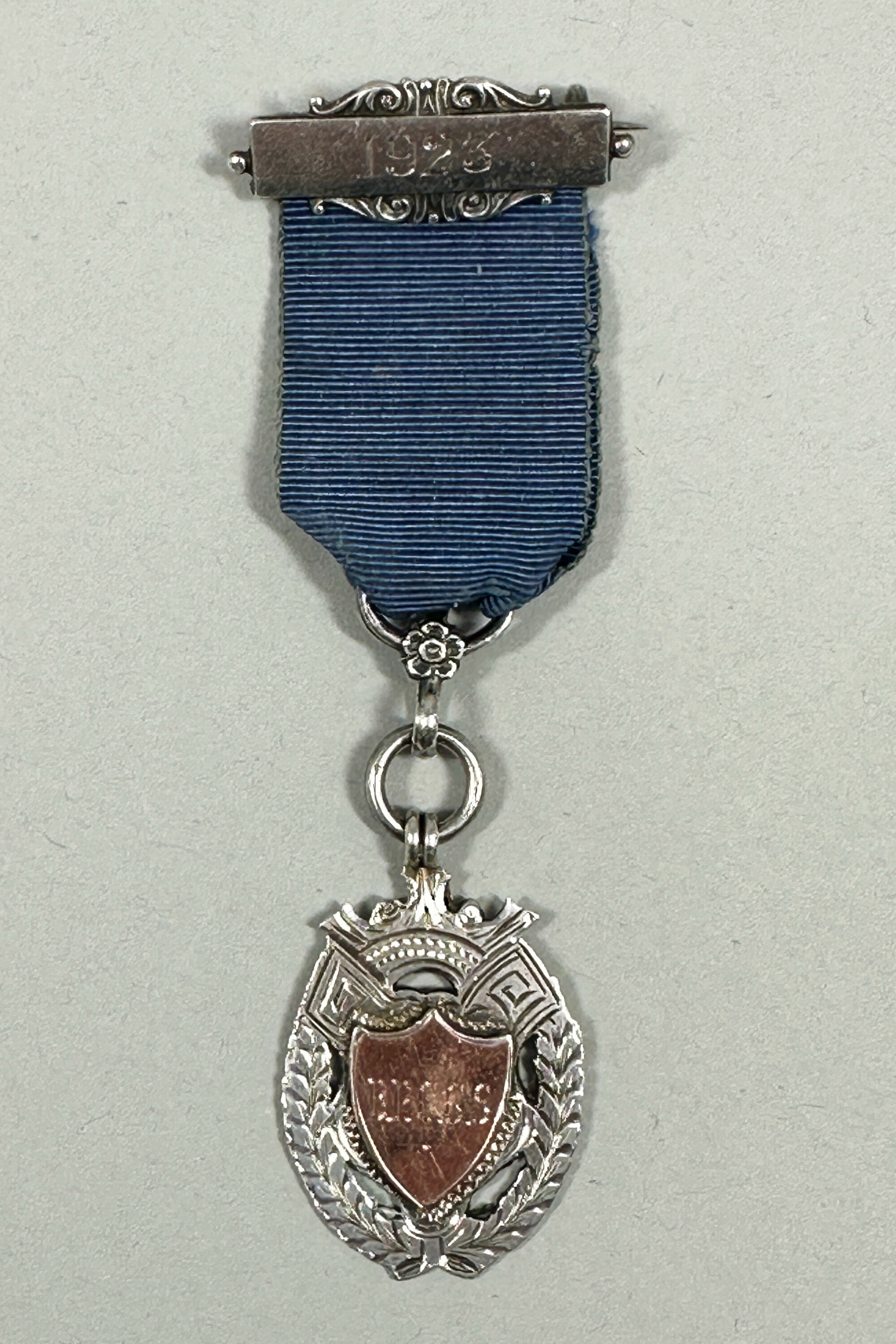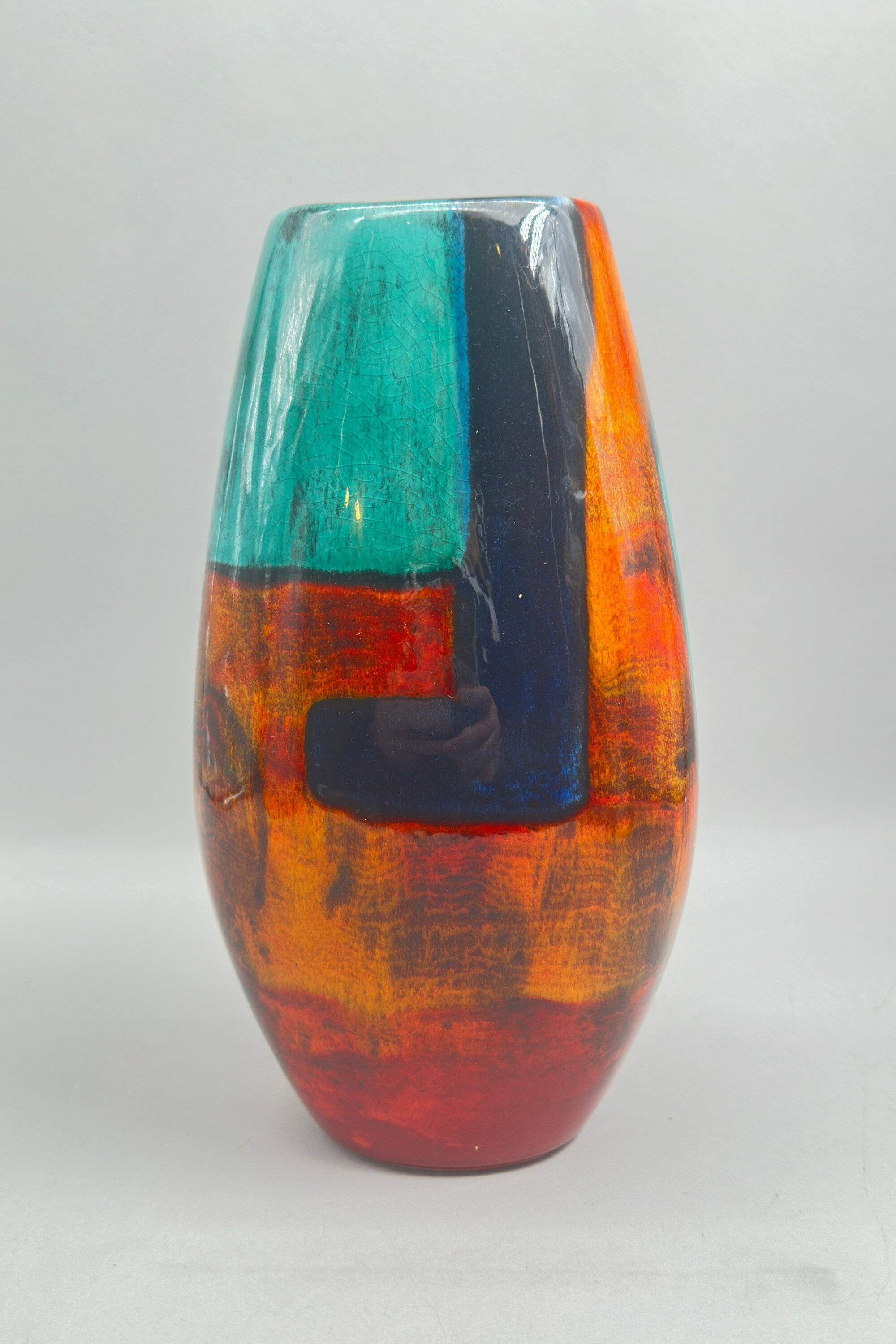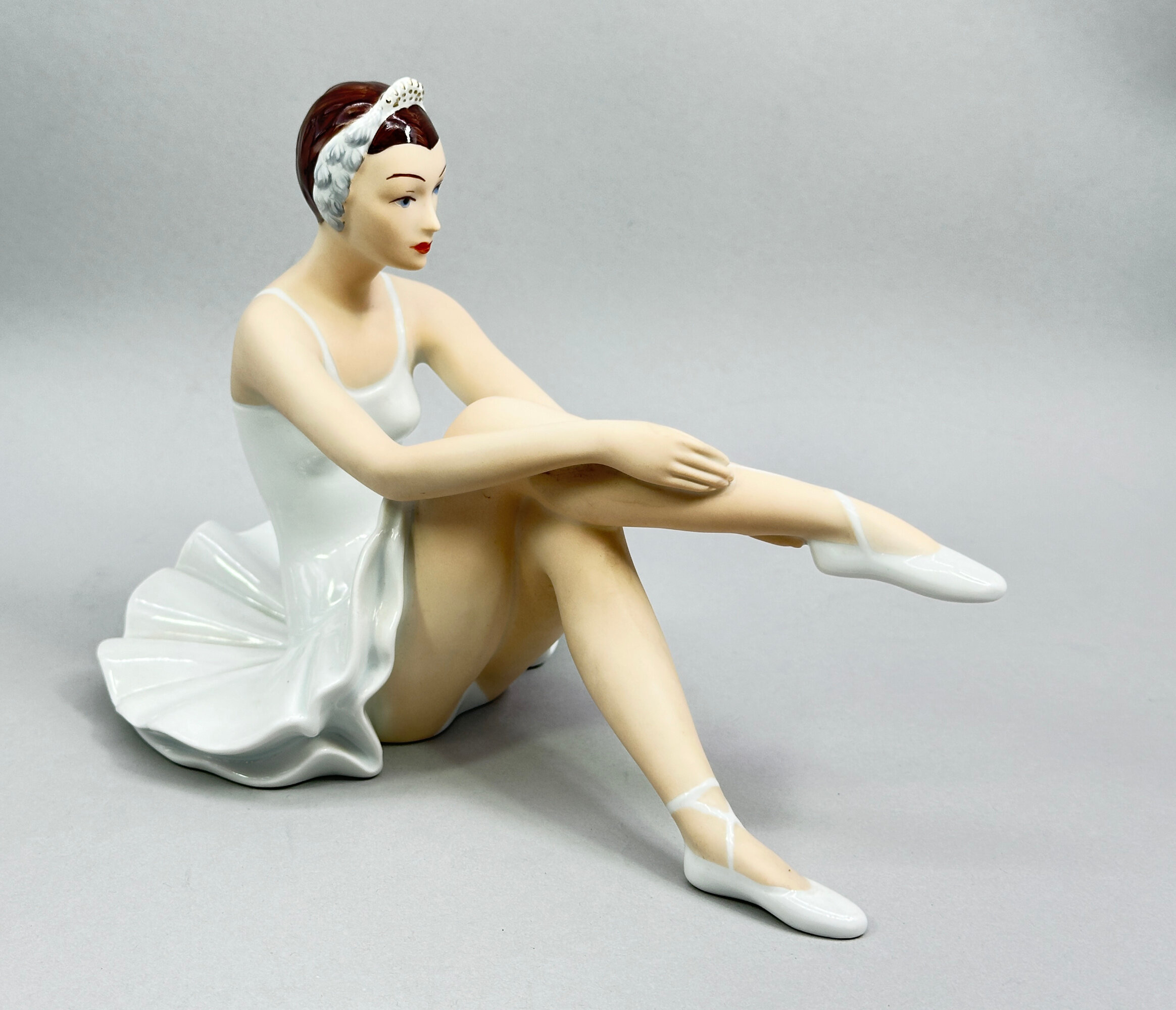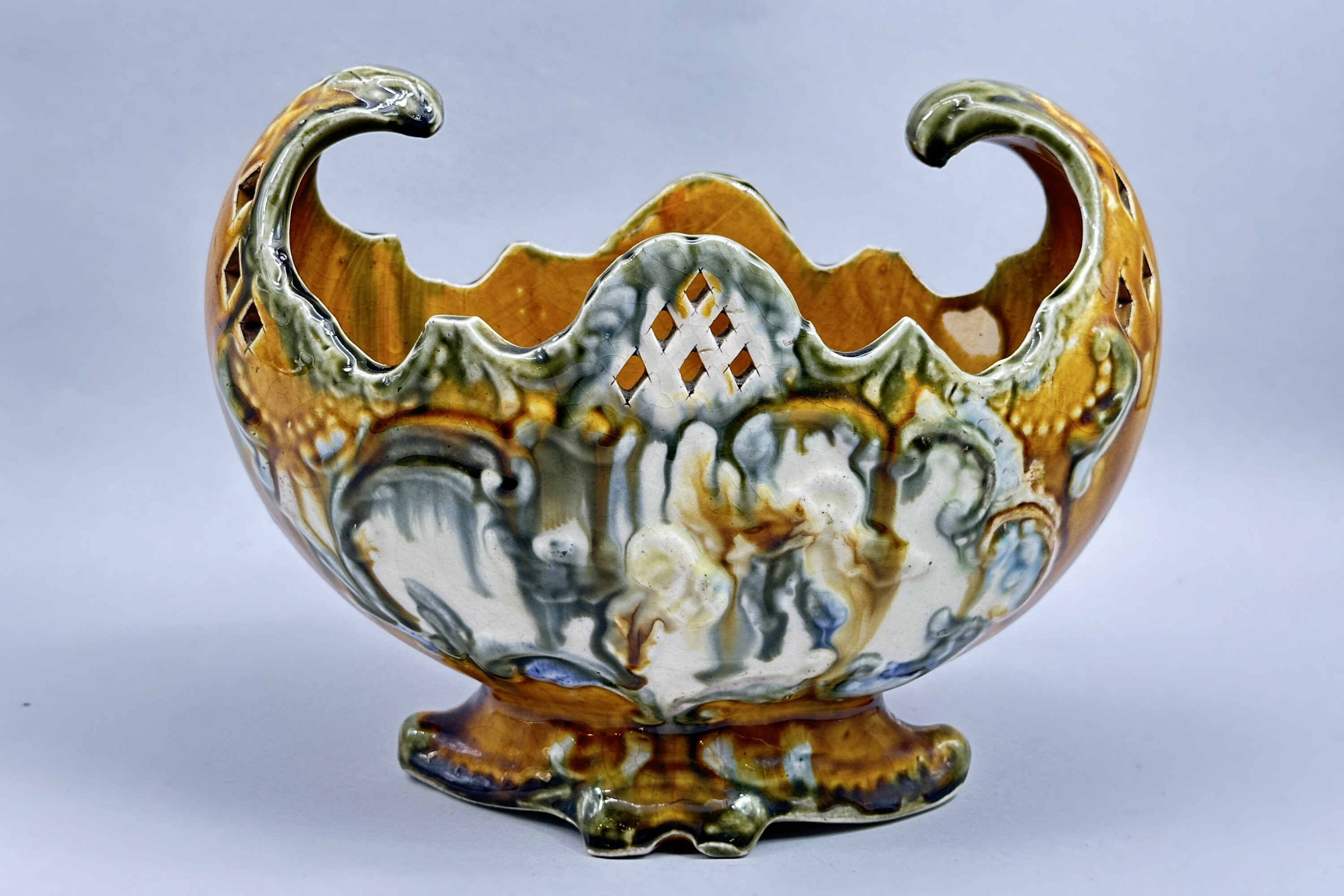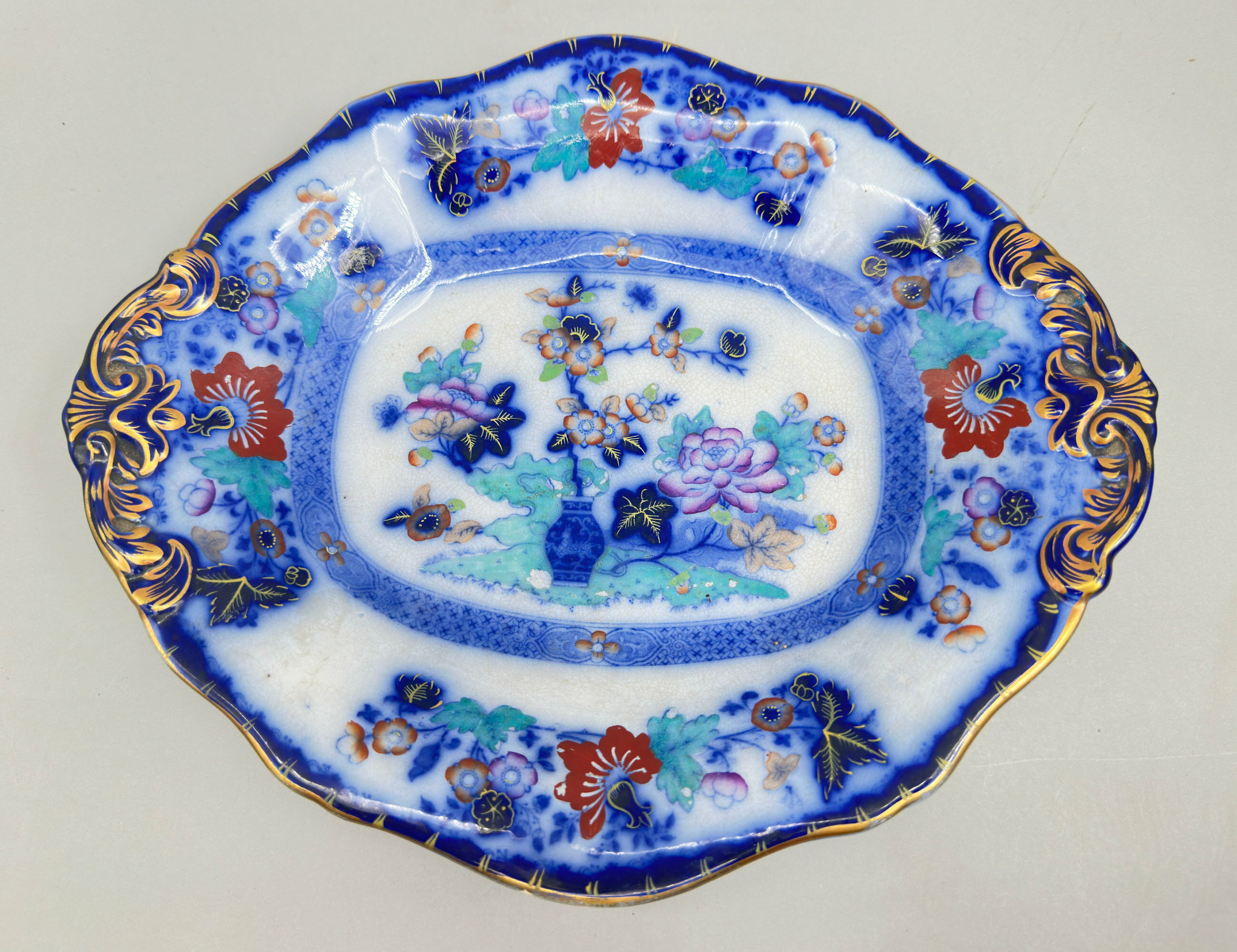
Bombay Japan pattern deep Dish, Minton or Samuel Alcock, English mid C19th
Price: £25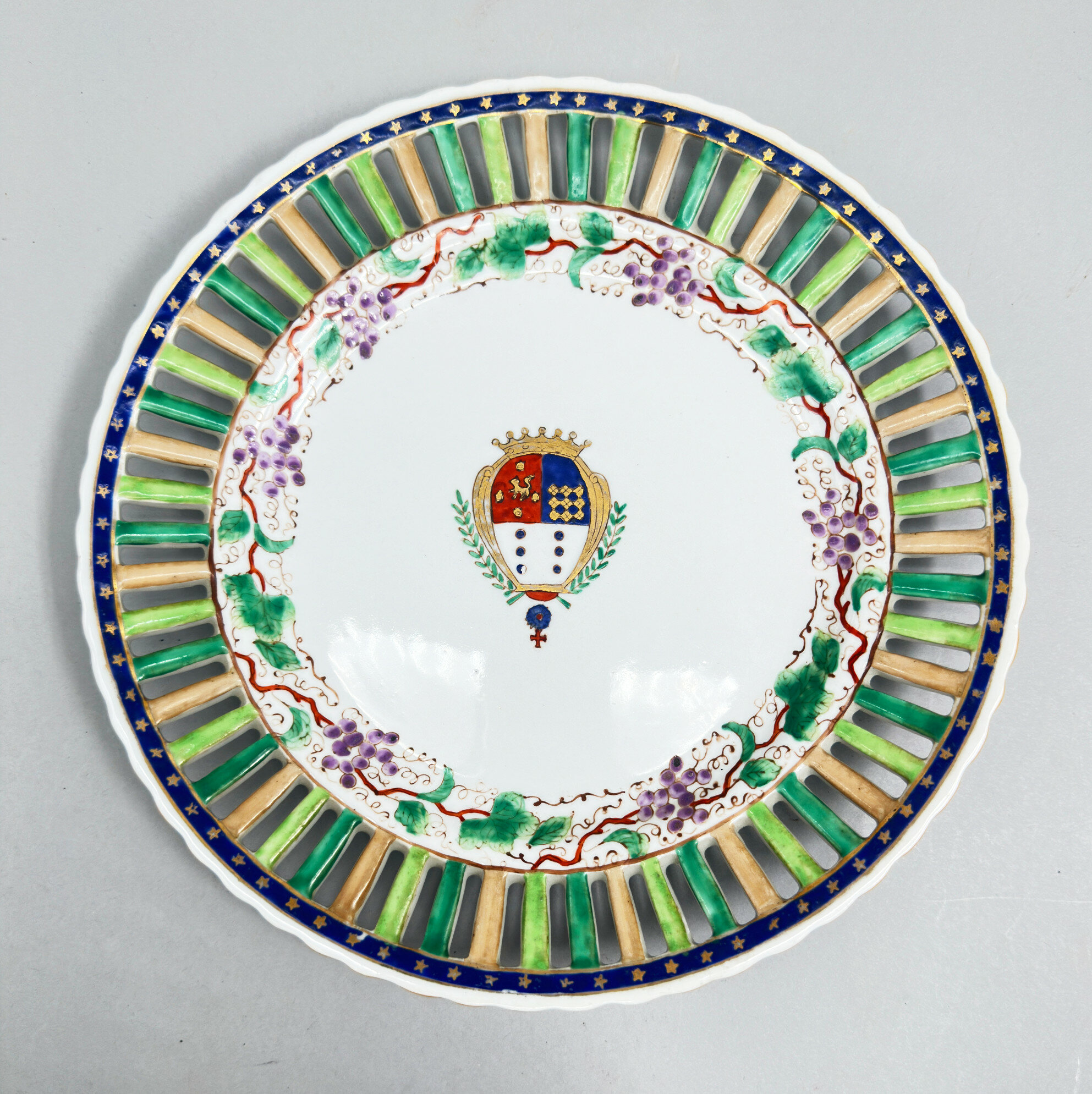
Compagnie des Indes style reticulated edge Armorial Plate, Chinese C20th
Price: £45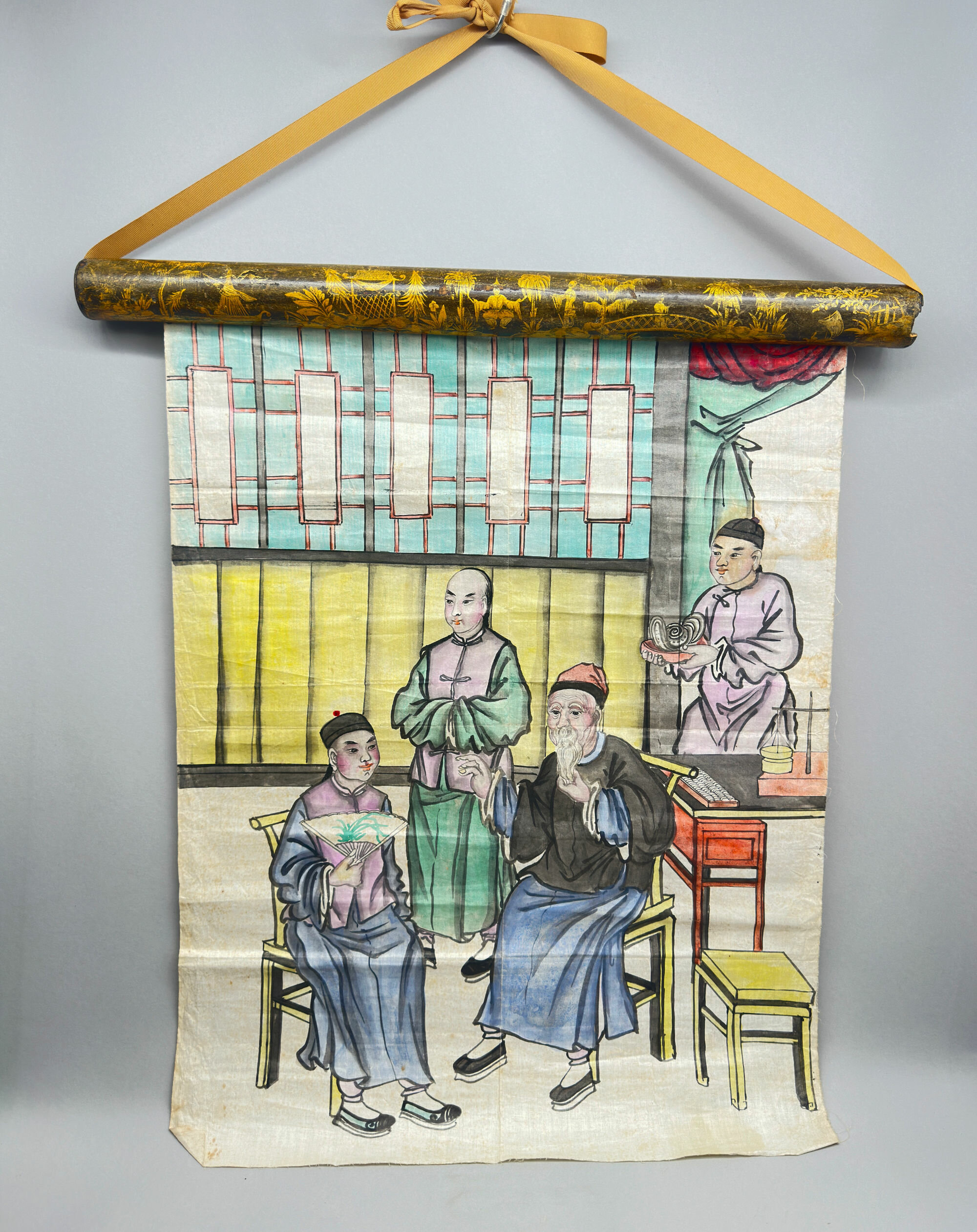
Chinese Scroll Painting of a Merchant and his Client, C20th
Price: £45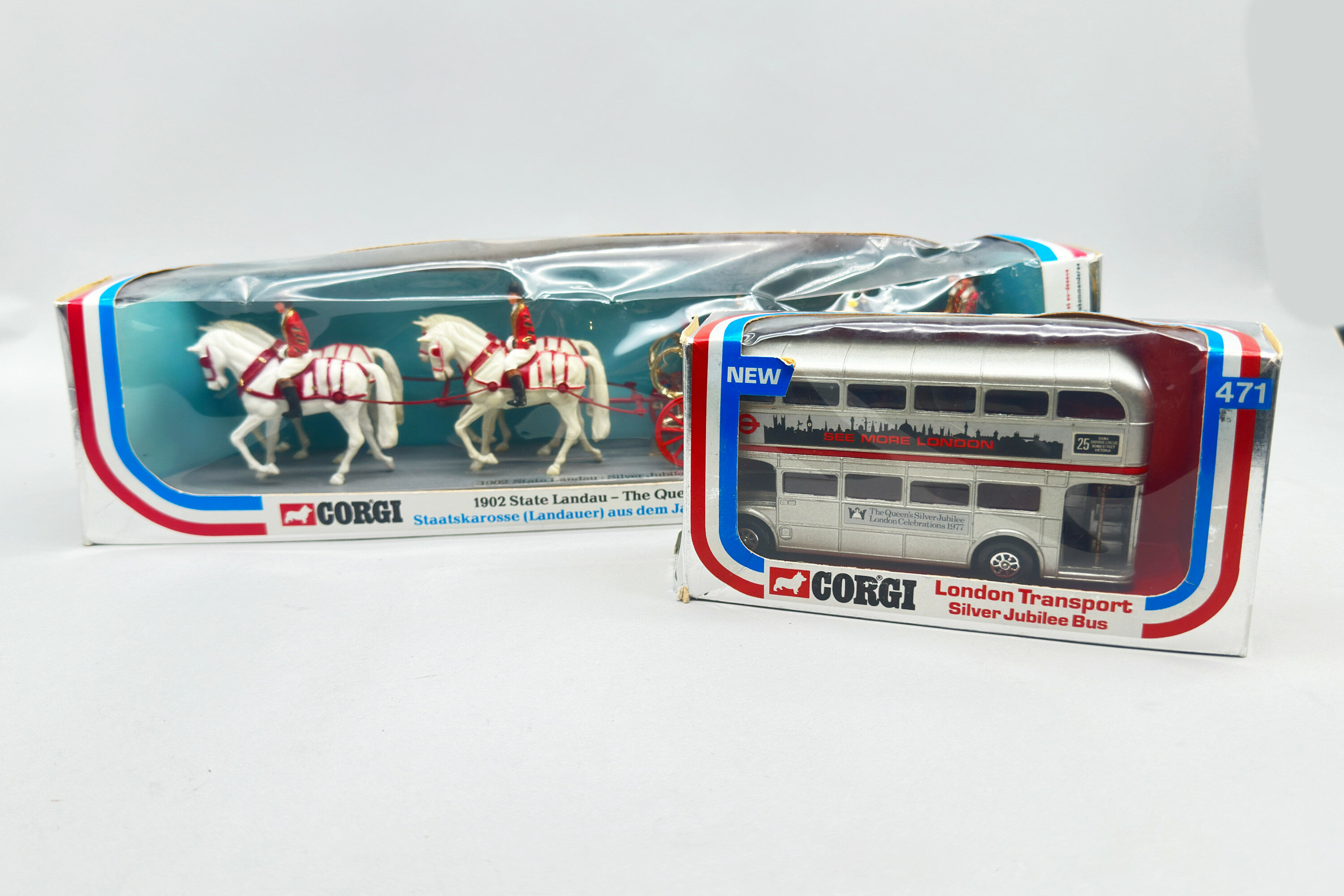
Two Corgi Silver Jubilee Toys Boxed, (41) State Landau, (417) London Bus, 1977
Price: £45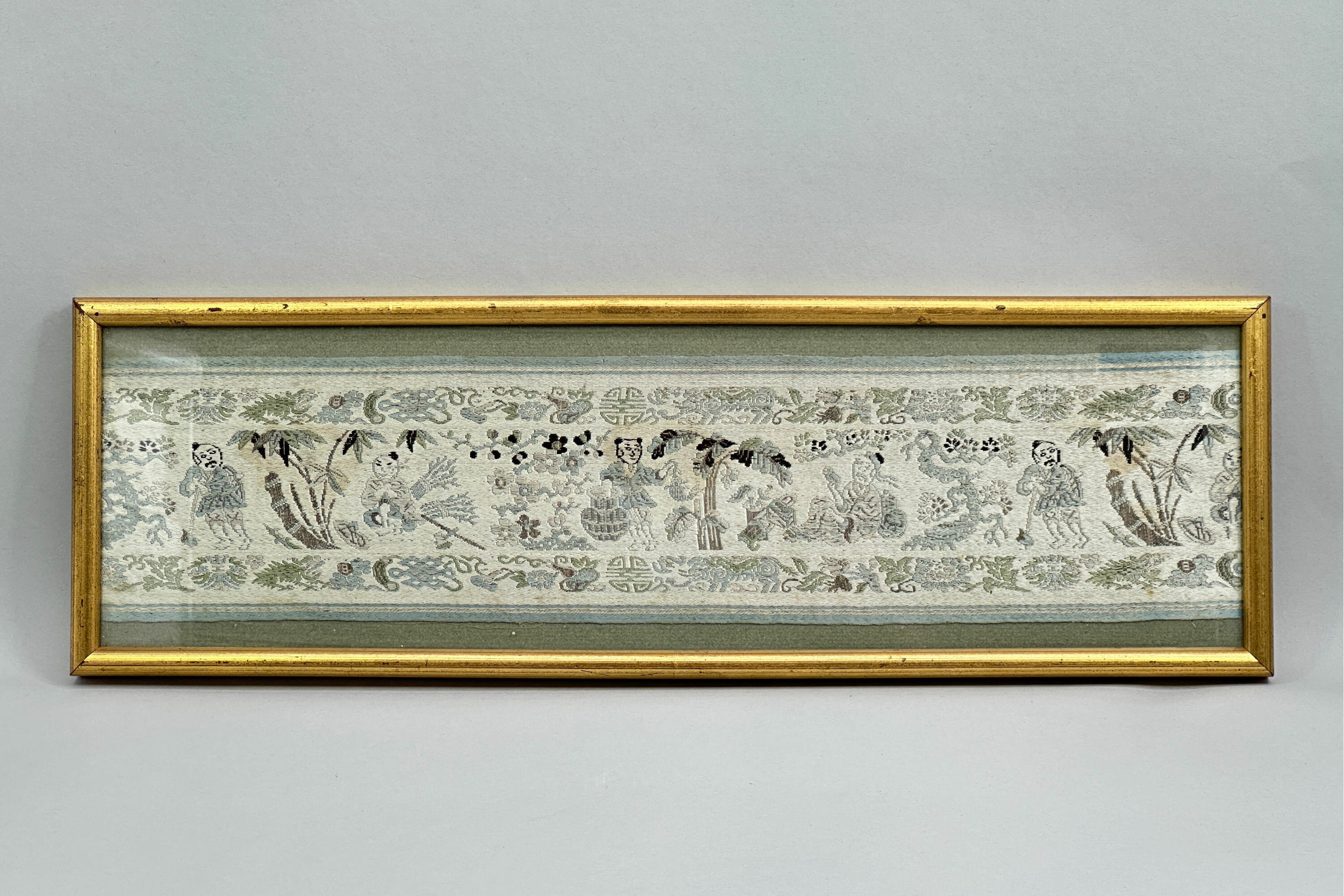
Framed Chinese Silk Embroidered Runner Panel, garden scenes, C20th
Price: £15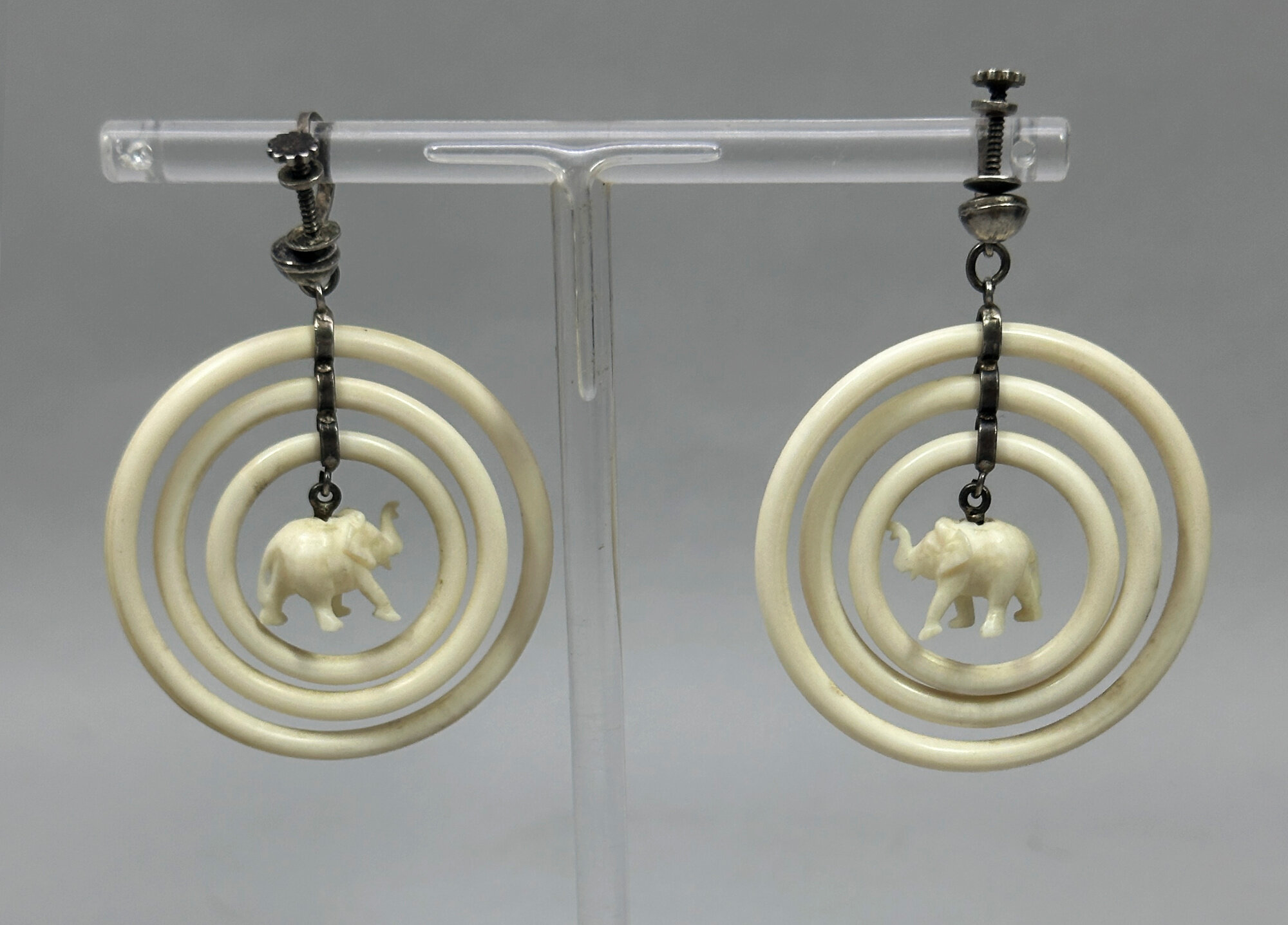
Fun celluloid elephant motif earrings 1960s
Price: £25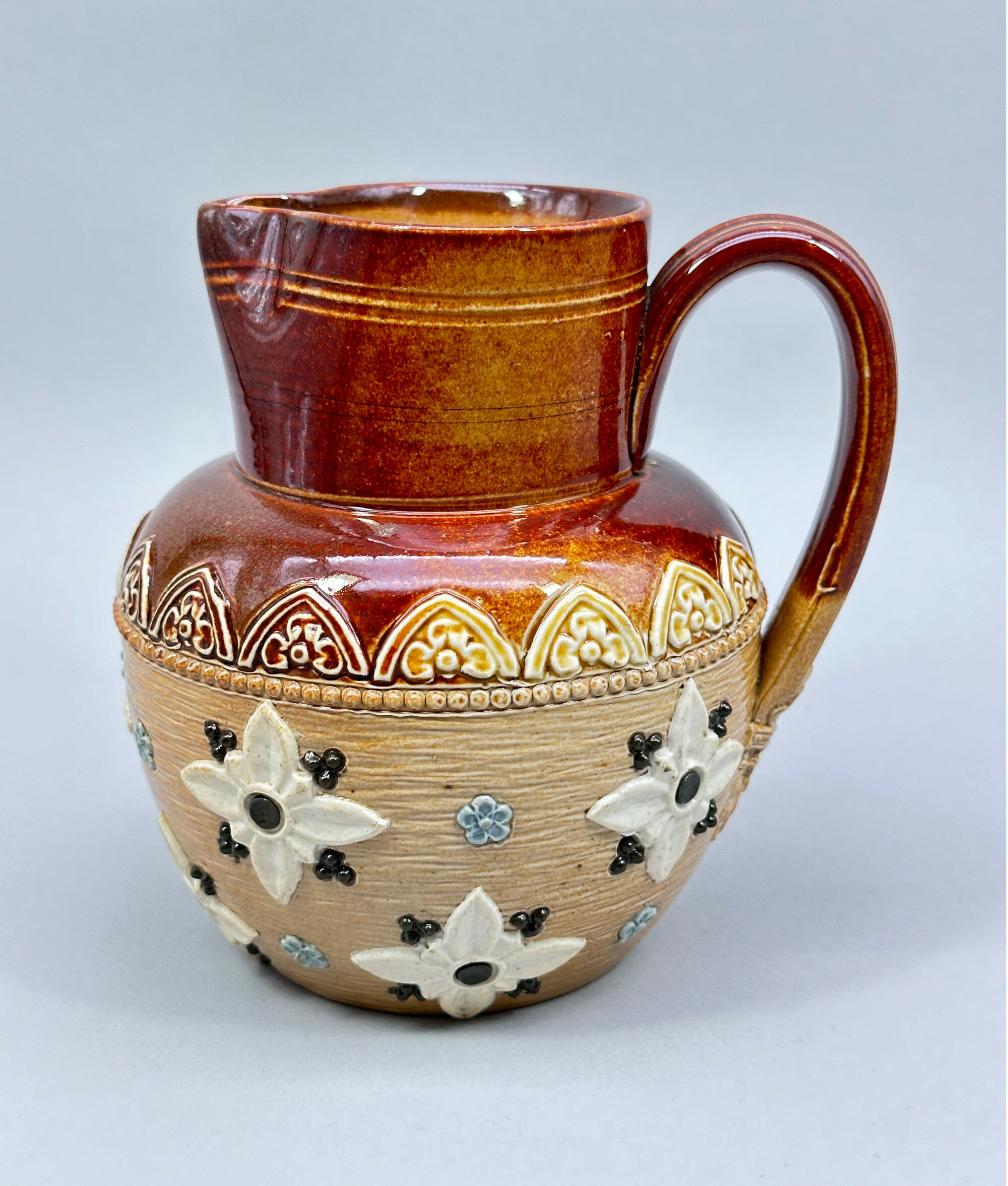
Doulton Lambeth Stoneware Jug circa 1900
Price: £45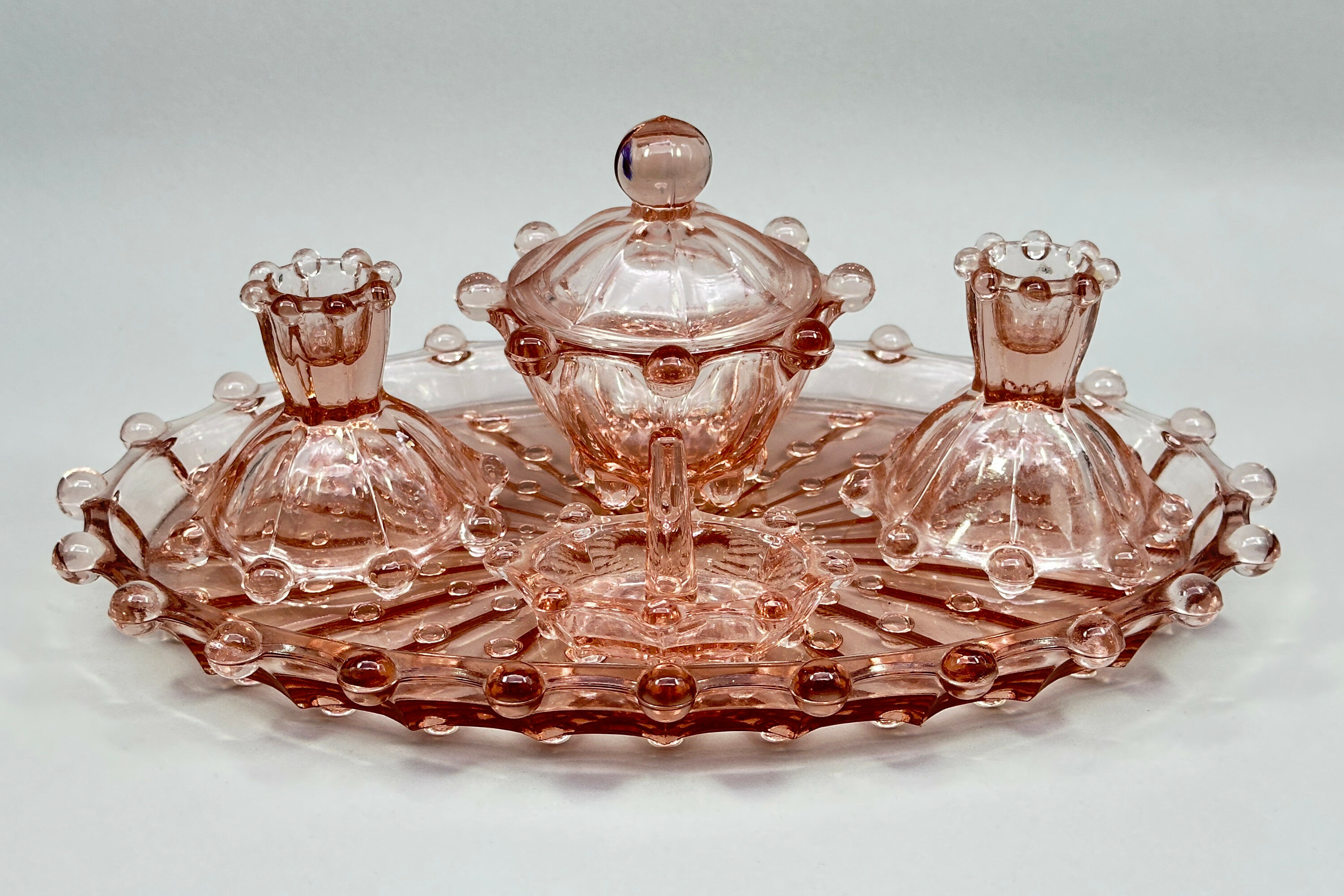
Pink pressed glass dressing table set, Libochoviche, Czech, 1950s
Price: £35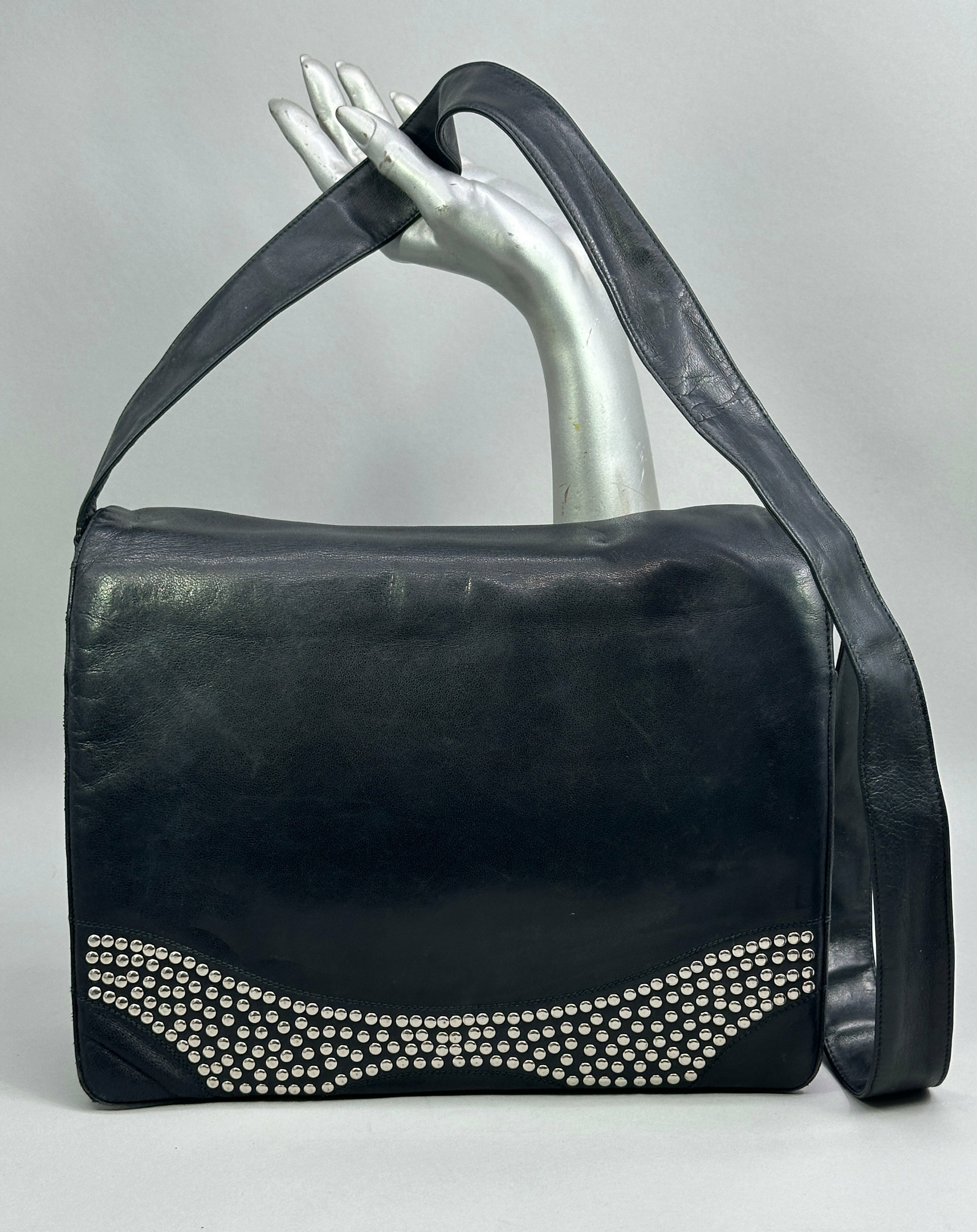
Maud Frizon Handbag c2000
Price: £150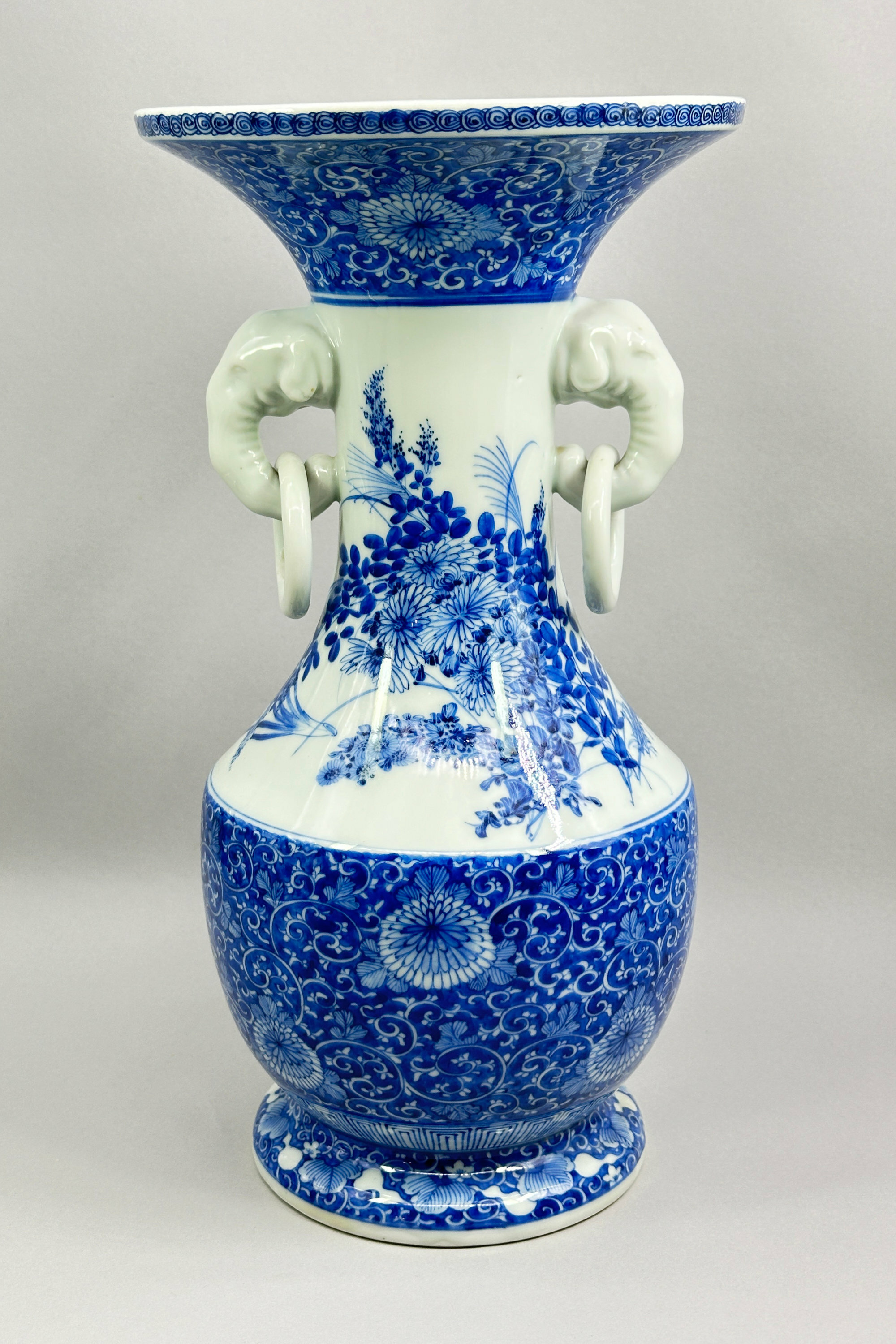
Japanese Seto Ware Blue and White Vase, late C19th
Price: £450A fine quality Japanese porcelain vase, the ovoid body with a curved flaring foot and rising to a tall concave neck with a well defined shoulder, applied elephant and ring handles to the sides and a galleried rim, decorated in bright underglaze blue with two bands of stylised flowering chrysanthemum at the top and bottom between a continuous scene of flowering peony and chrysanthemum, the top rim with repeating whorl design on the exterior and stylised leaf design inside, the stepped base glazed white.
The kilns at Seto in the Aichi prefecture of Japan and situated close to Nagoya form one of the traditional ‘Nihon Rokkoyo’, the six old kilns of medieval Japan. The location of Seto was ideal for the production of ceramics with an abundance nearby of both porcelain clay and forests to provide firewood for the kilns. Production began as early as the Heian period (794-1185) and continued without a break thereafter, the earlier pieces being more pottery forms copying Chinese wares. It was in the early nineteenth century that the kilns turned to producing porcelains decorated in underglaze blue and white, a development initiated by the potter Tamikichi Kato who went to Arita to learn the techniques of its production there, returning to Seto in 1807. Production grew and developed and was directed towards the export market in the Meiji period (1868-1912) with Seto wares being displayed at the European and North American exhibitions and fairs. Their delicately painted designs of birds and flowers proved to be immensely popular and were, in their time, to influence Art Nouveau and Art Deco designs. Some of the forms produced were truly virtuoso creations including, besides vases, screens, jardinieres and even ceramic tables.
Signed pieces are known and besides Tamikichi Kato the distinguished potters included the Kichiemon brothers, Kato Chuji and Kawamoto Jihyoe, and Kawamoto Hansuke. But not all the best pieces carried an artist’s signature as this vase well demonstrates. Formed from fine quality clay, as can be seen from the foot rim (image 10), the complex shape with its spreading base, angled shoulder and galleried rim would have been difficult to create. The handles show remarkable skill with the rings somehow formed so as to hang loose (presumably some form of kiln waster technique was used). The detail and artistry of the painting speaks for itself. Note in particular the shading effects on the peony flowers. While not perhaps an exhibition piece, this vase is definitely of exhibition quality and would be a worthy addition to a collection of nineteenth century Japanese ceramic art.
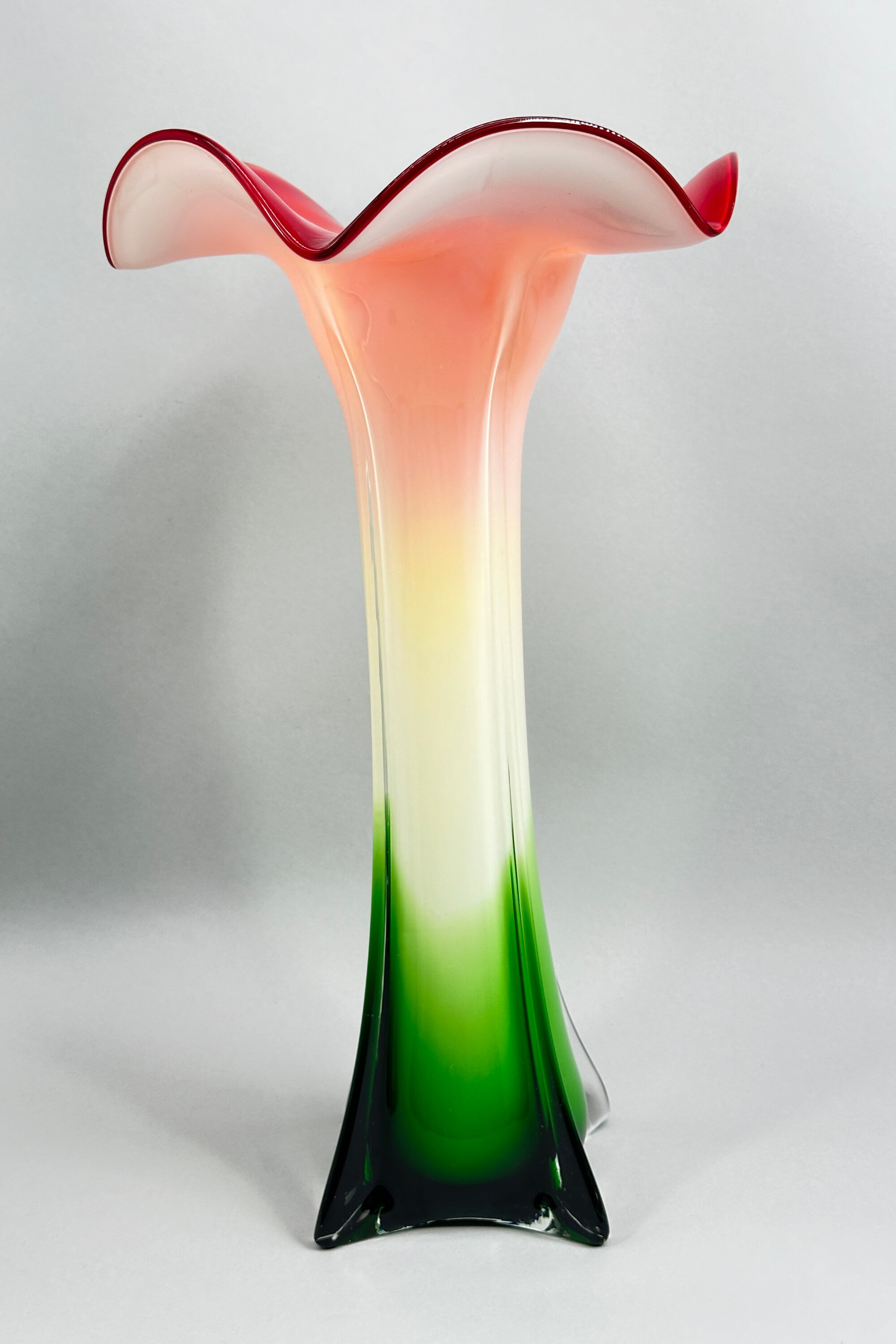
Murano Style Calla Lily Trumpet Shape Vase, second half C20th
Price: £75
Continental Figure of a Cellist, Conta and Bohme, Germany late C19th
Price: £55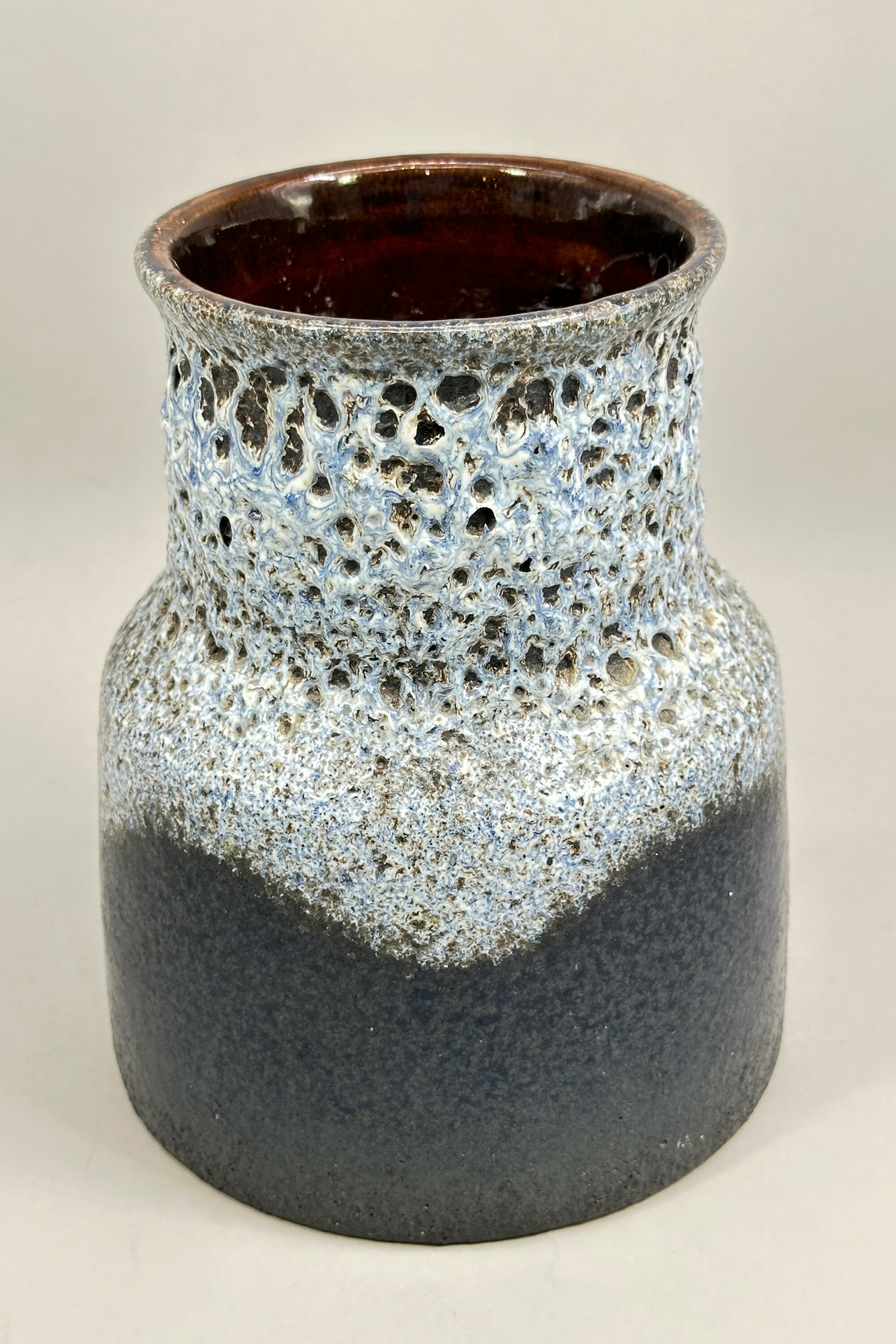
West German Pottery Lava Glaze Vase, Scheurich, 1960s
Price: £45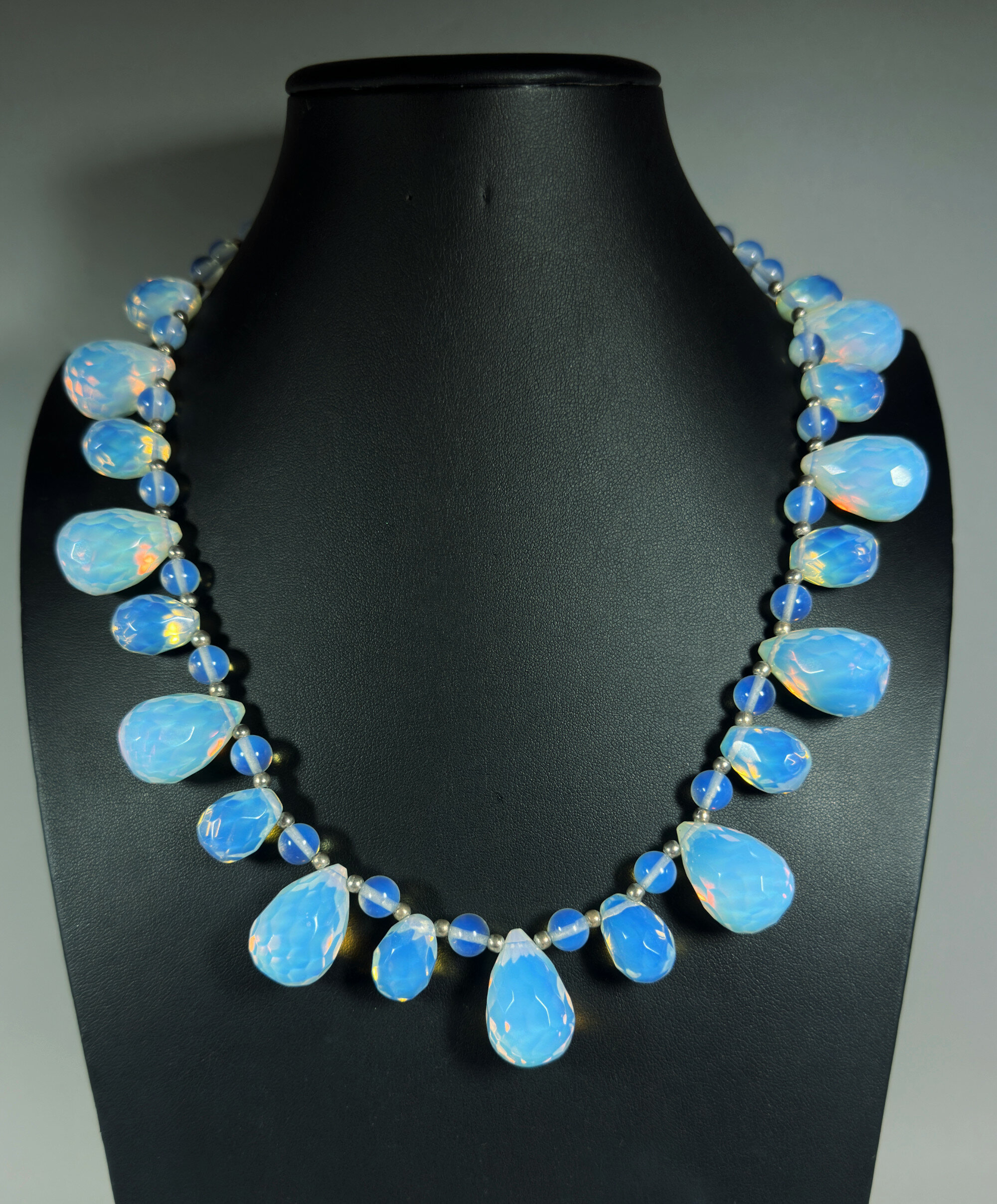
Faceted Opalite statement necklace c1970
Price: £95Opalite is a type of synthetic glass often mistaken for a gemstone due to its alluring translucence and the play of colors similar to those seen in opals. Unlike natural gemstones, opalite is man-made, primarily from dolomite and metal to create its distinctive shimmering and milky appearance. It typically exhibits a soft, opalescent sheen with a blue or orange glow when light passes through it, making it popular in jewelry and decorative objects.(geologyscience.com)
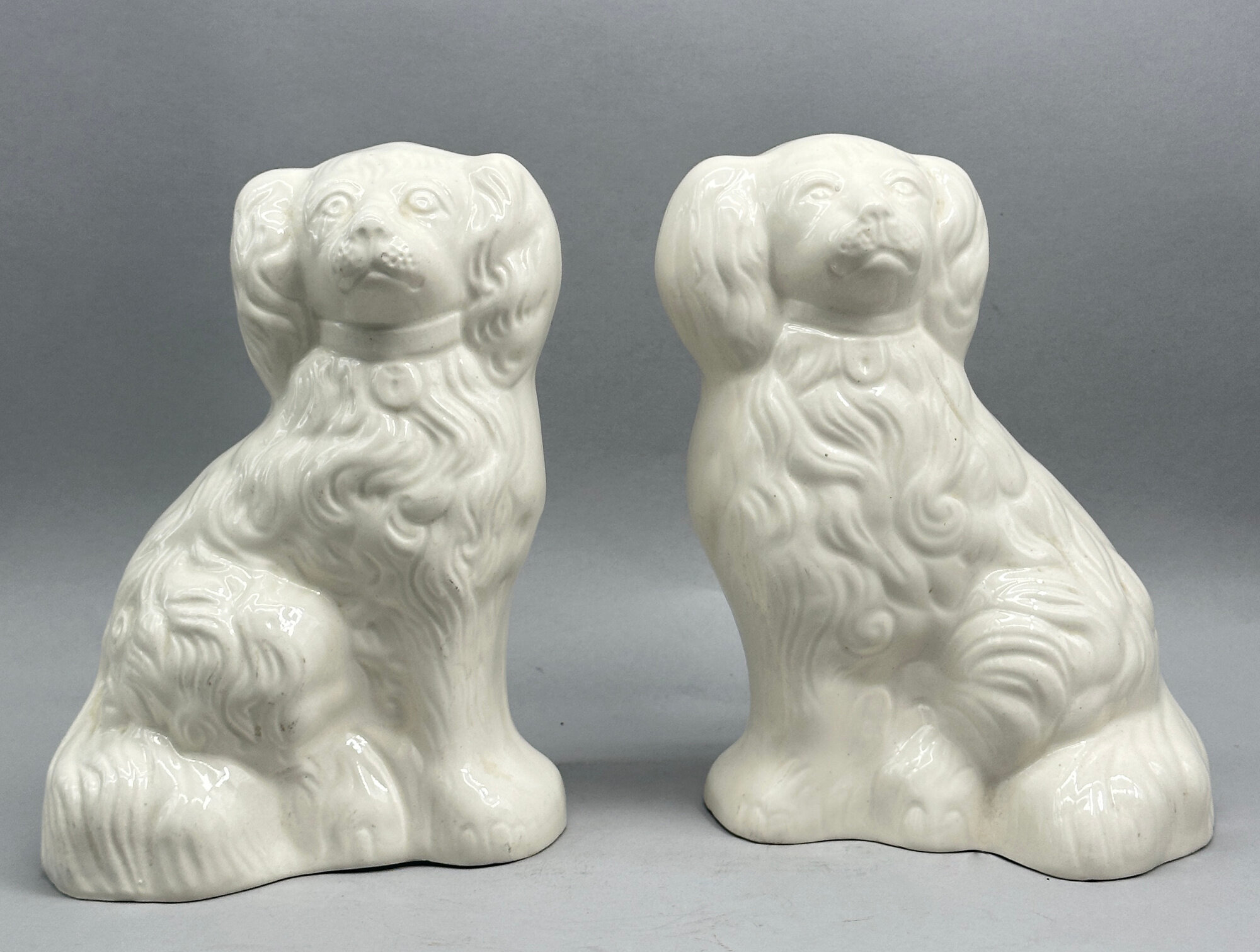
An unusual pair of white glaze models of Spaniels, Beswick, 1960s
Price: £75While a close relation to the traditional Victorian ‘Staffordshire Dog’, these figures were actually made by the English firm Beswick in the twentieth century. Founded in 1894 by James Beswick and his sons, the company became known for its output of figurines, eventually securing the rights to producing characters from the novels of Beatrix Potter and the films of Walt Disney. It was sold to Royal Doulton in 1969 who continued production until 2002, selling the pottery premises in 2003 and the rights to the name in 2004 when they were bought by Dartington Crystal who still manufacture pieces carrying the Beswick name. These spaniel figures appear to date from the 1960s and were made in at least two sizes. Most have painted decoration but the plain white finish here is really the most pleasing of all producing a pair of decorative items with timeless appeal.
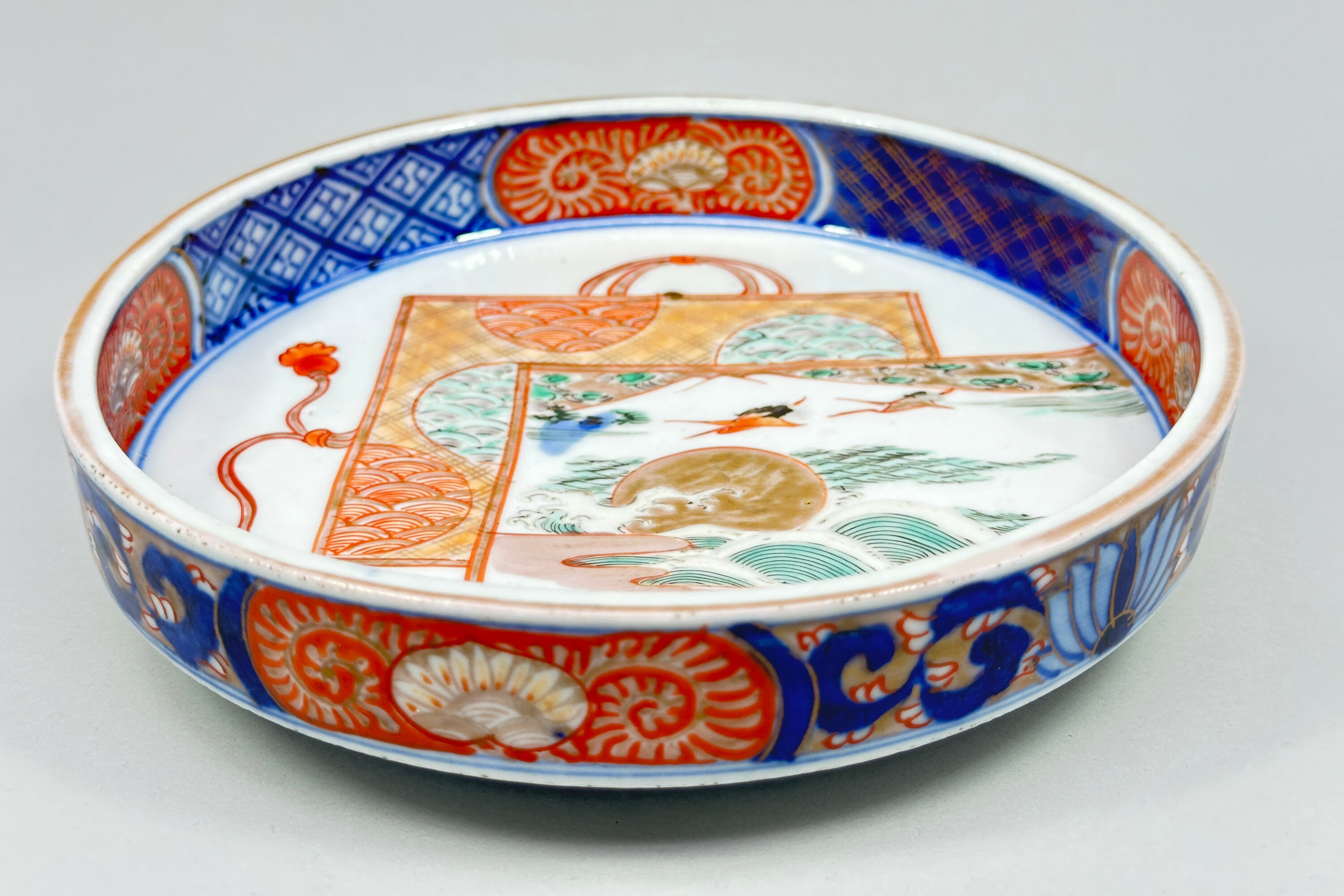
Japanese Arita shallow Bowl circa 1880
Price: £55The town of Arita in the former Hizen Province, northwestern Kyūshū island, was a major centre for the production of porcelains in Japan. Best known for blue and white pieces it also produced polychrome wares as well, including the familiar Imari colourings. While similar to Imari, the wider palette of colours used here is usually termed ‘Arita’ and this bowl employs not only the colourings but also many of the decorative elements found in these wares. The angular form, though, is unusual. Dating is to the Meiji era (1868-1912) probably around 1880.
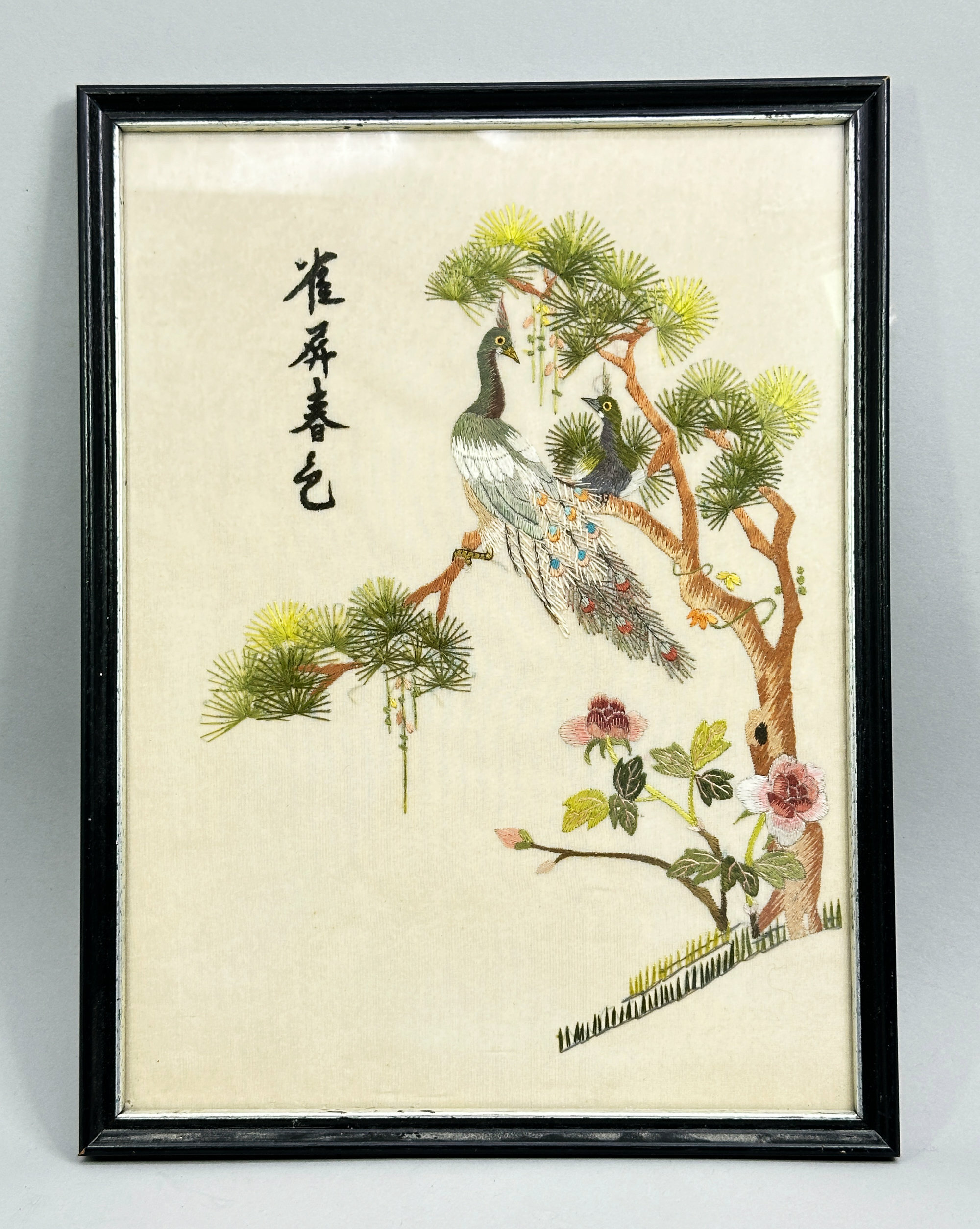
Framed Chinese Embroidery Silk Textile, signed, second half C20th
Price: £25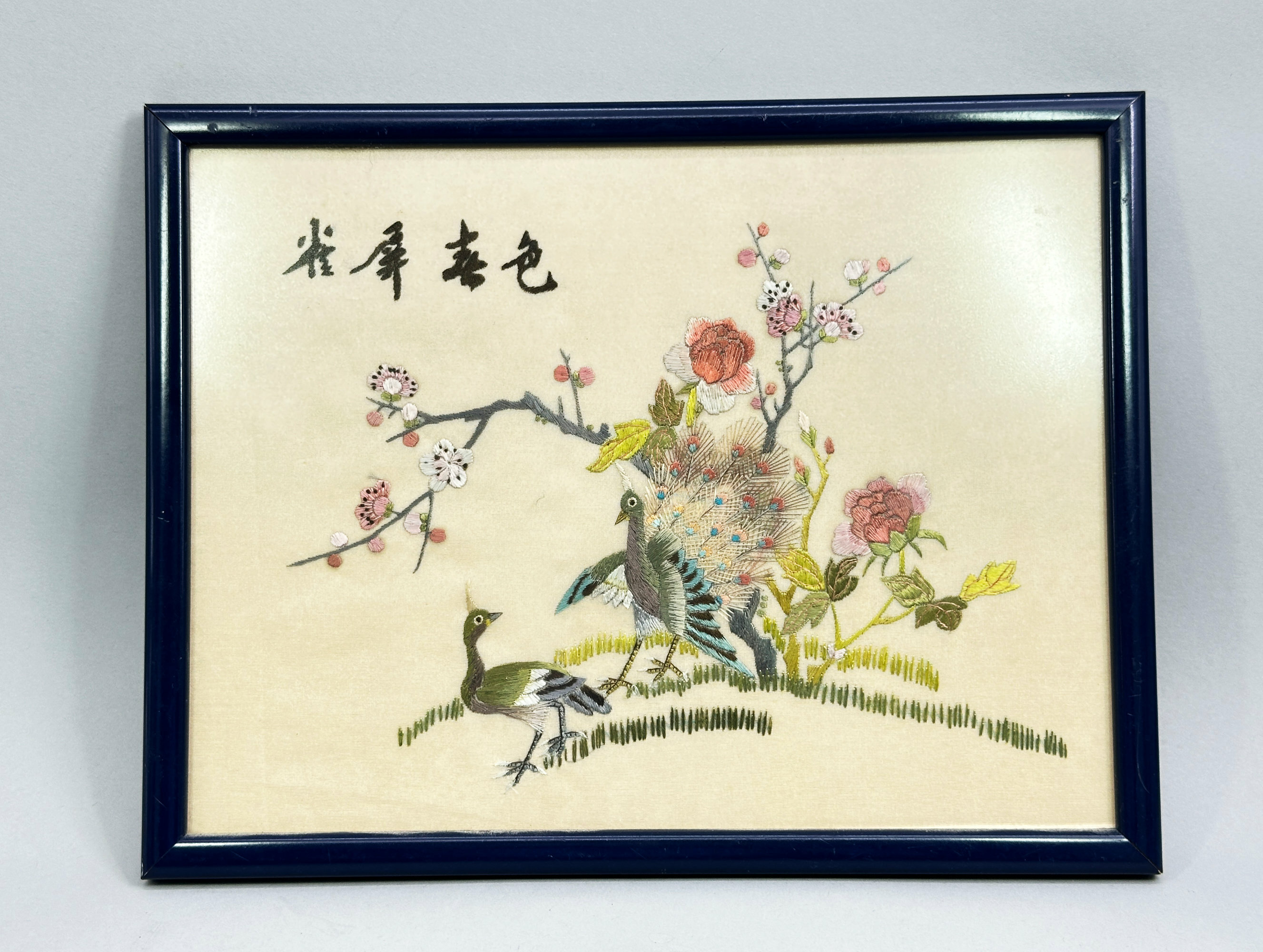
Framed Chinese Embroidery Silk Textile, signed, second half C20th
Price: £25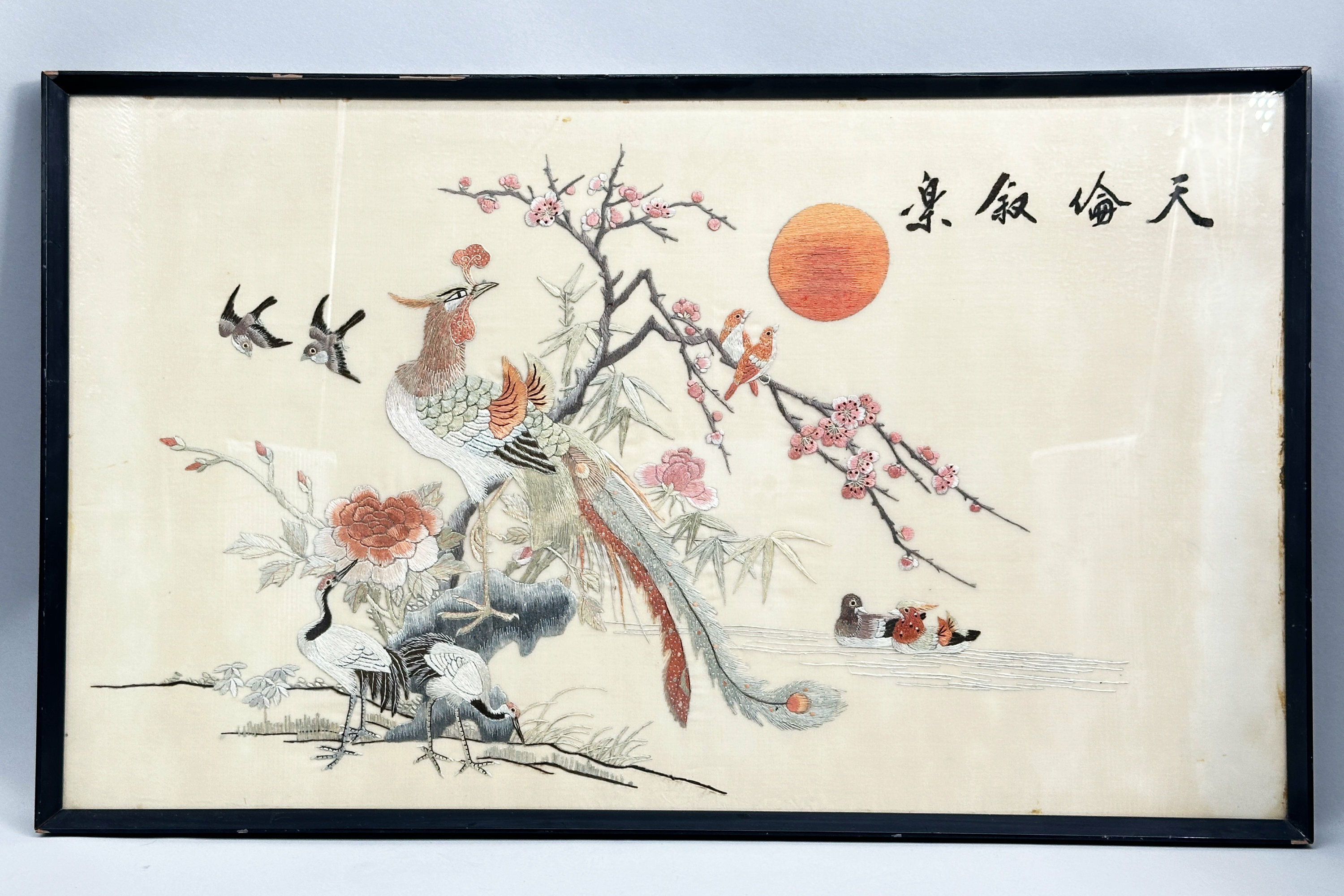
Framed Chinese Embroidery Silk Textile, signed, second half C20th
Price: £45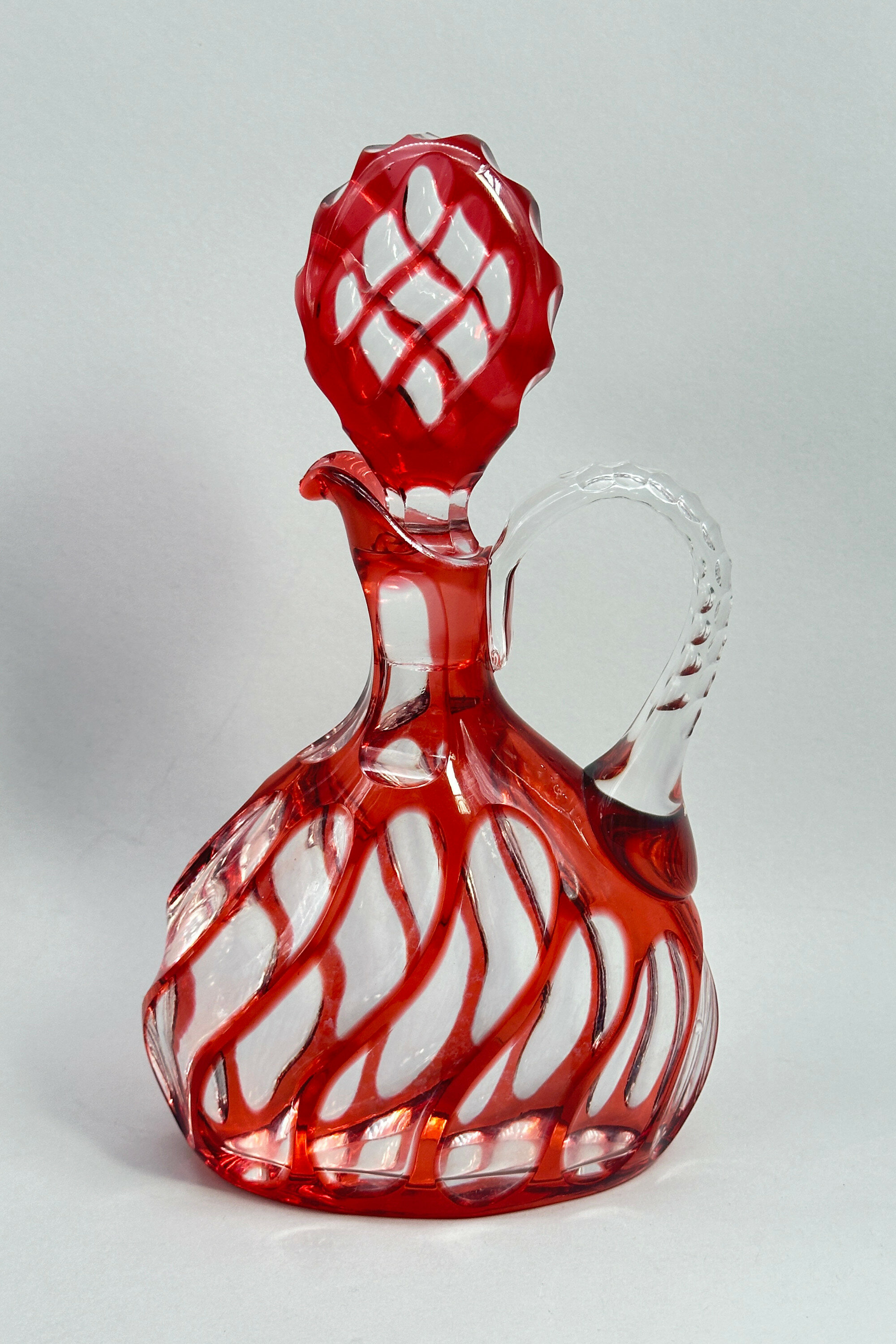
Swirl design Cranberry glass Decanter and Stopper, probably Italian mid C20th
Price: £45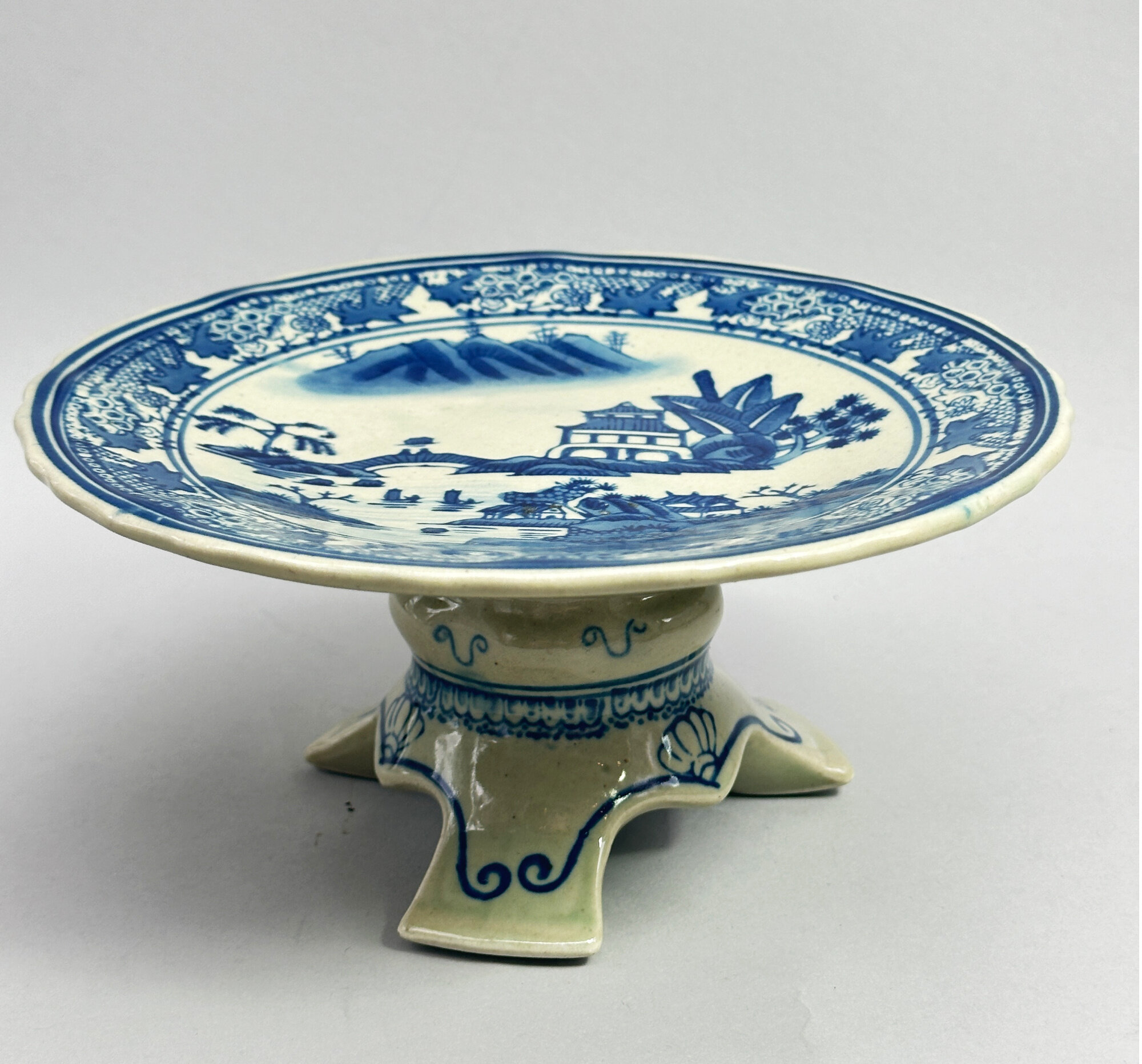
Japanese Celadon Ground Tazza with Chinese Nanking decoration, late C19th
Price: £25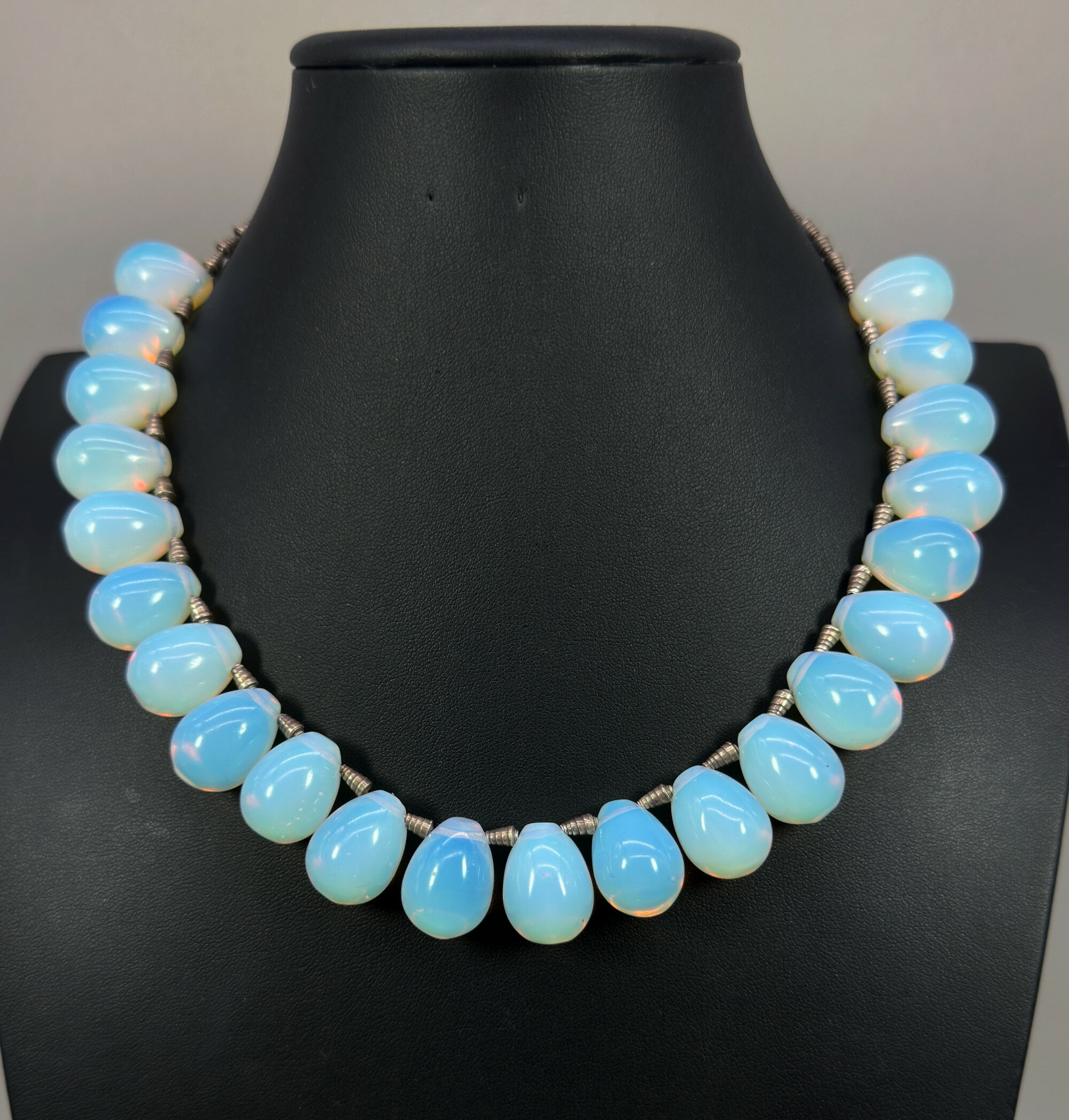
Art Deco opaline glass necklace 1930s
Price: £125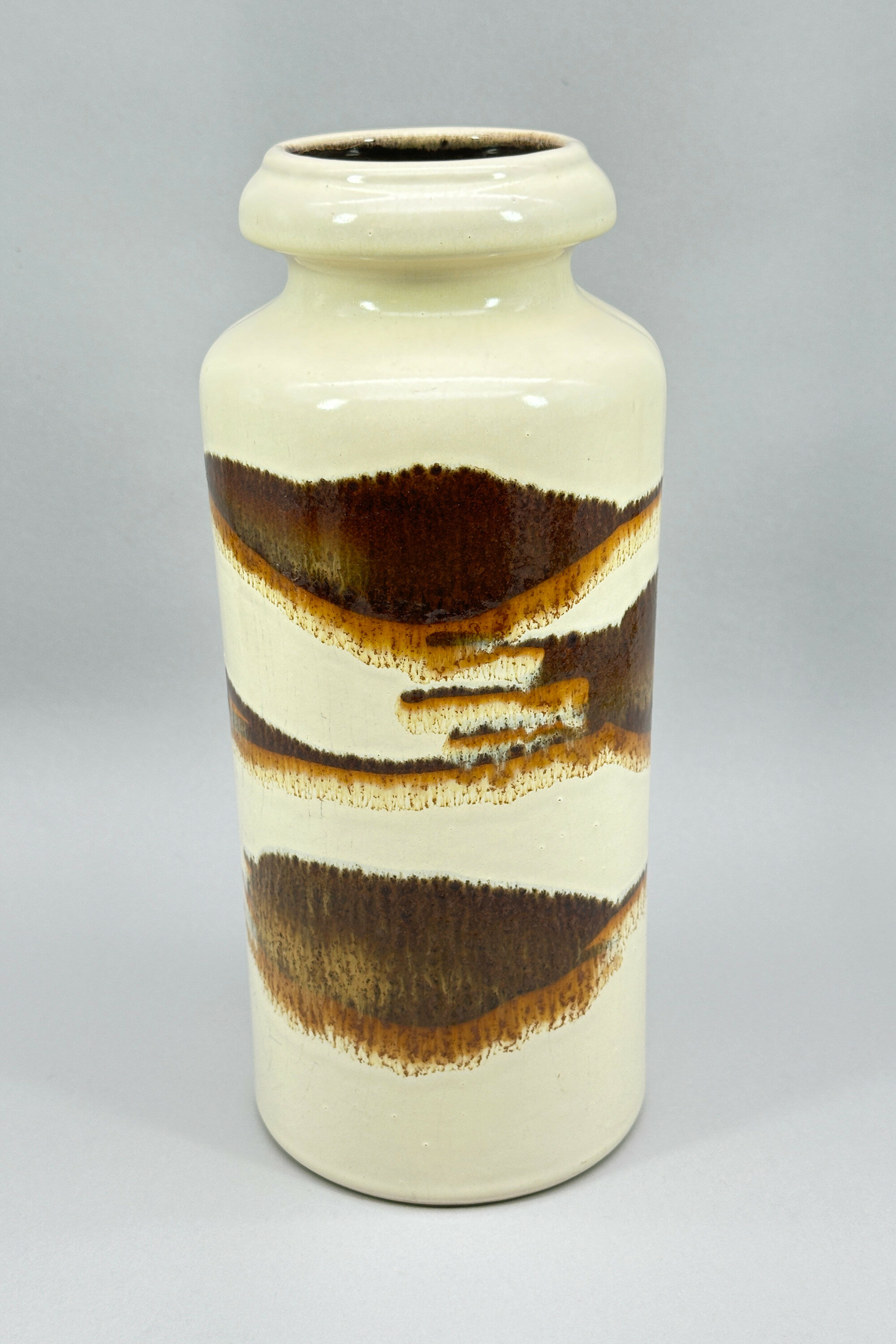
West German Vase with drip glaze decoration, Scheurich, 1960s
Price: £45Although not marked as such, this vase has all the hallmarks of the firm Scheurich Keramik which started production in 1954, rather later than most of its competitors, but soon became the largest producer of commercial art pottery in Germany. Their pieces rarely carried the factory name but usually the model number followed by the height in centimetres with ‘W-Germany’ below, as here. Model ‘517’ can be found in a variety of different glazes but the colourings here with the contrast between browns and cream are particularly successful. Dating is to the 1960s.
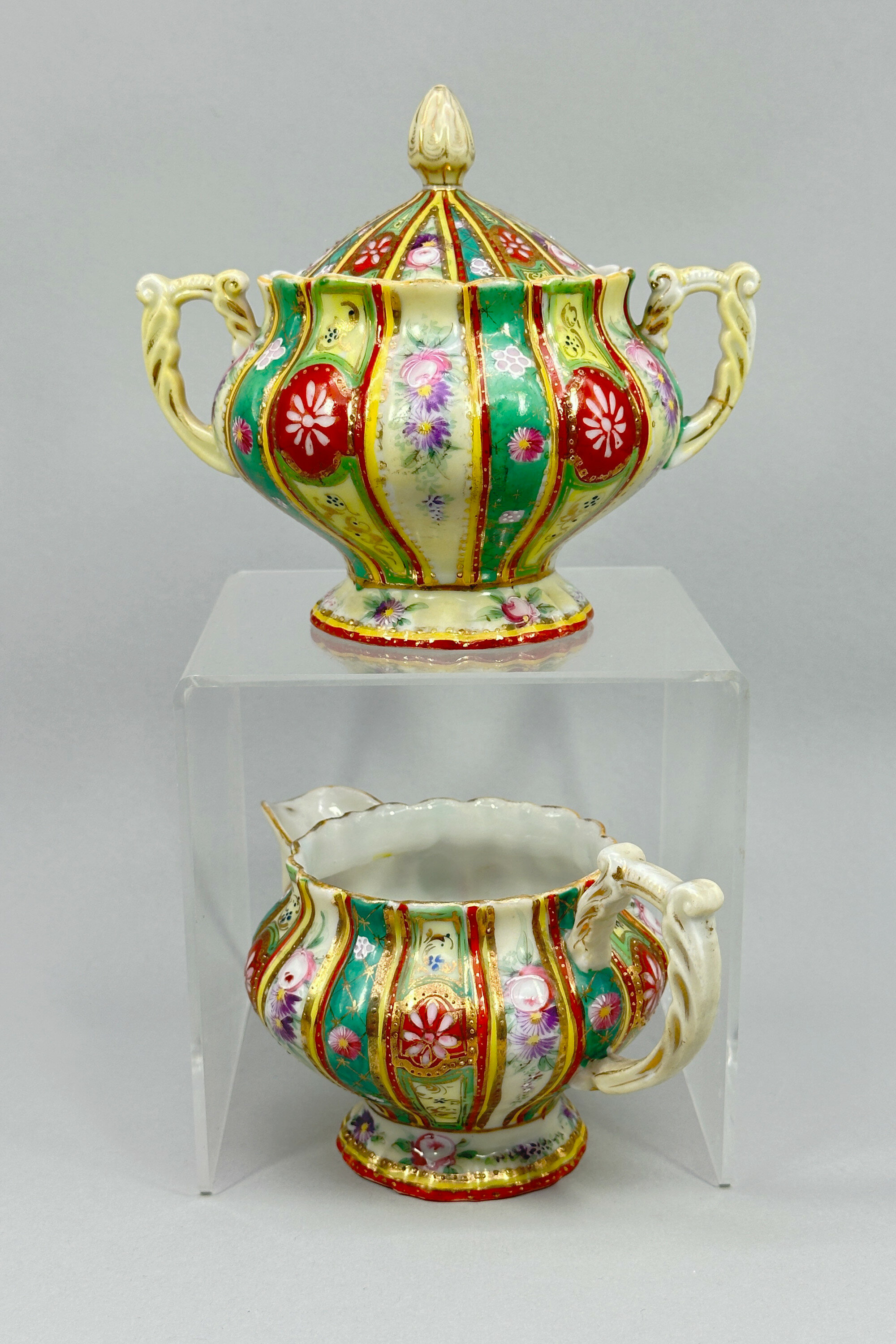
Vintage floral decorated Sugar Bowl and Cream Jug, probably Bohemian mid C20th
Price: £25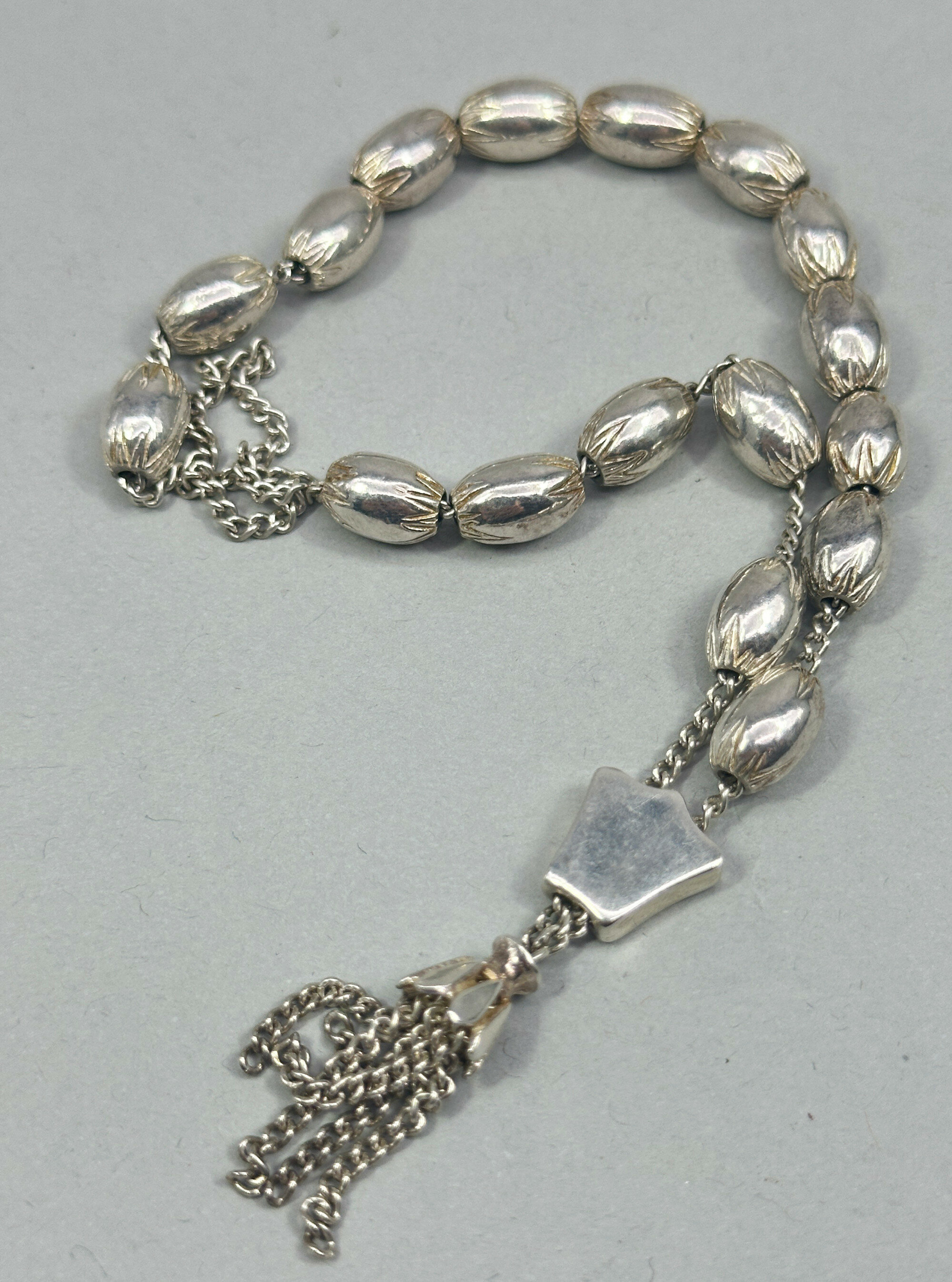
Silver prayer beads with seventeen Beads, 20th century
Price: £75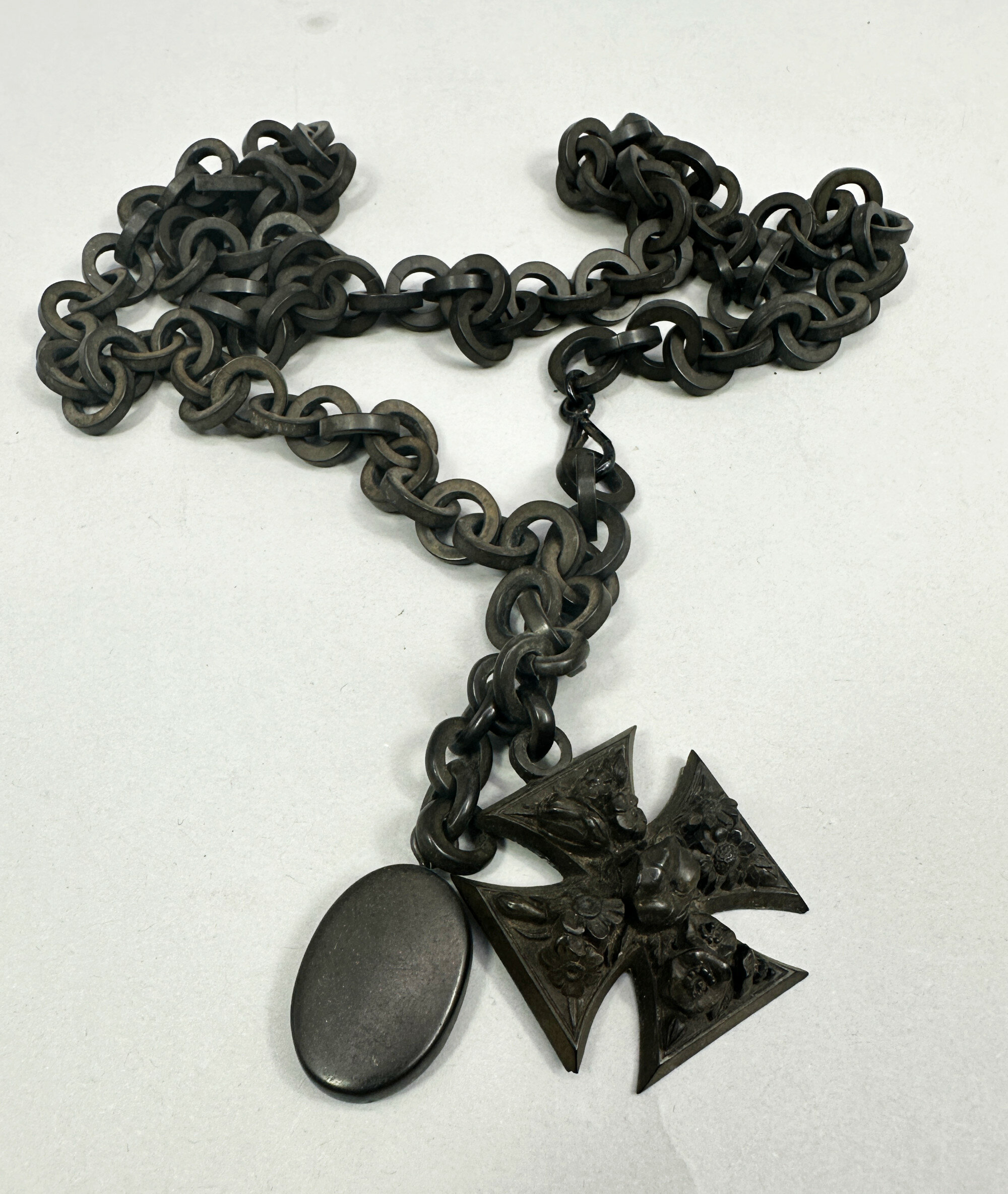
Vulcanite long necklace with Maltese cross and fob c1880
Price: £195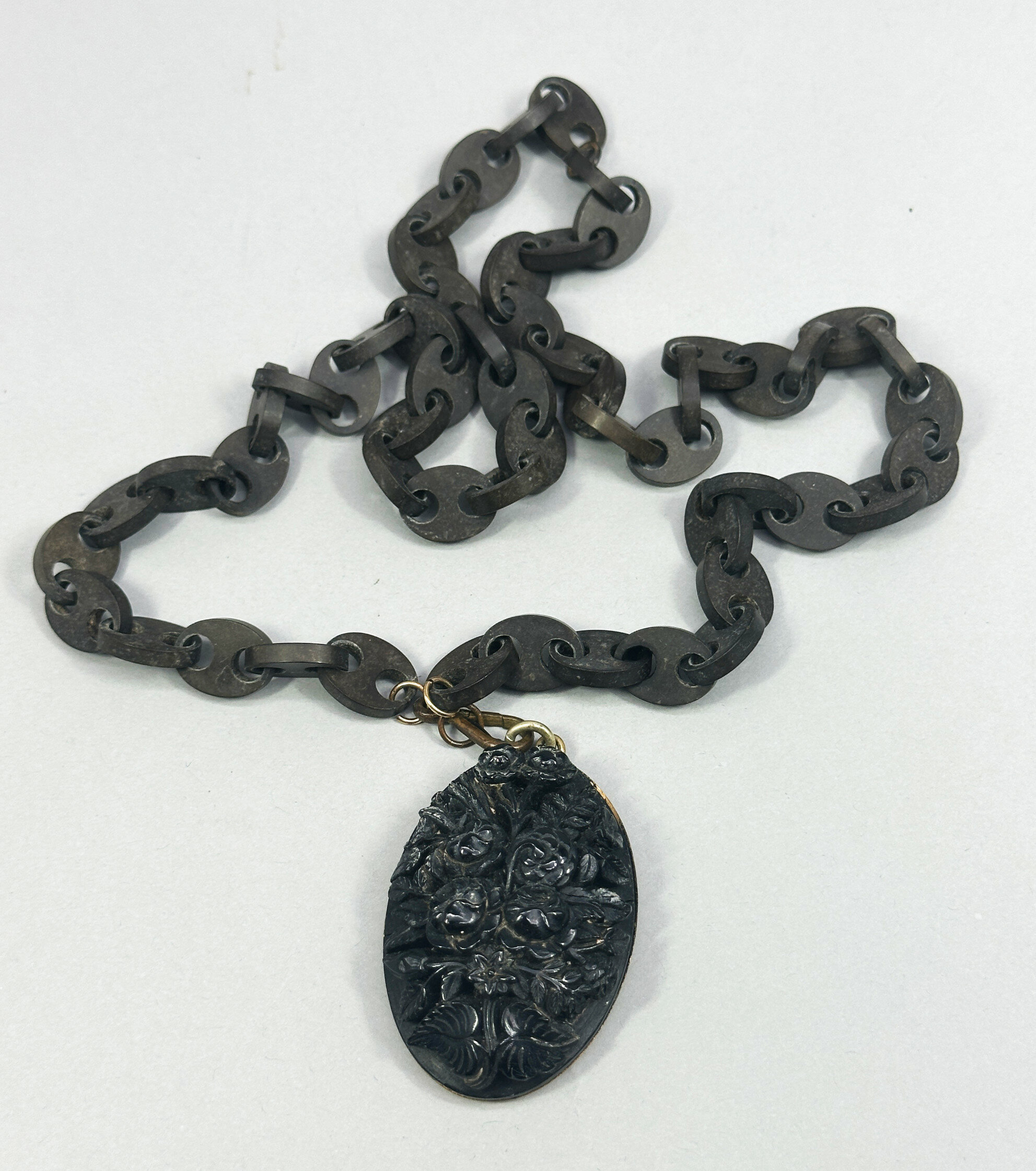
Victorian vulcanite anchor chain necklace with carved jet pendant c1880
Price: £195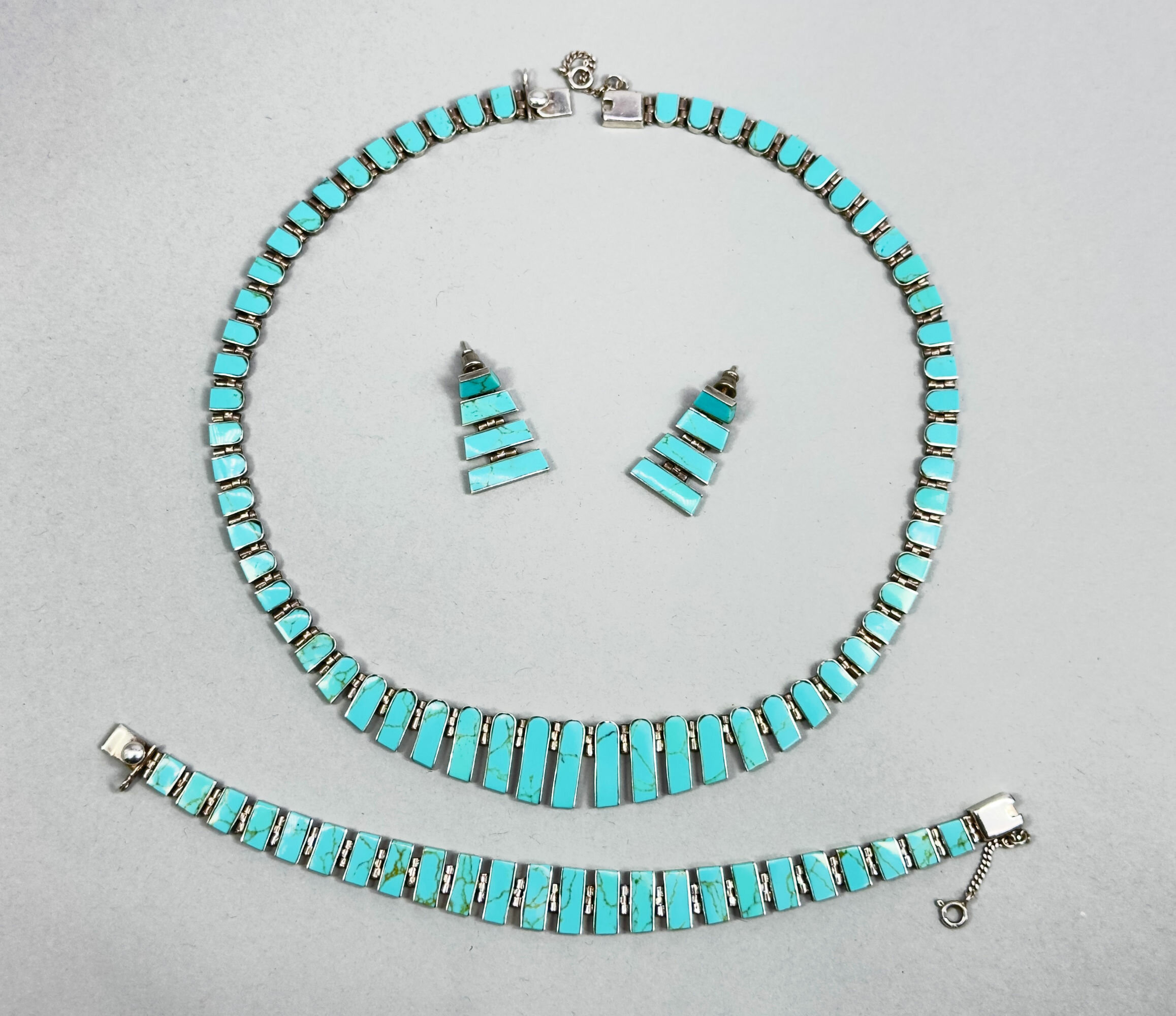
Suite of Taxco - necklace, bracelet and earrings c1960
Price: £475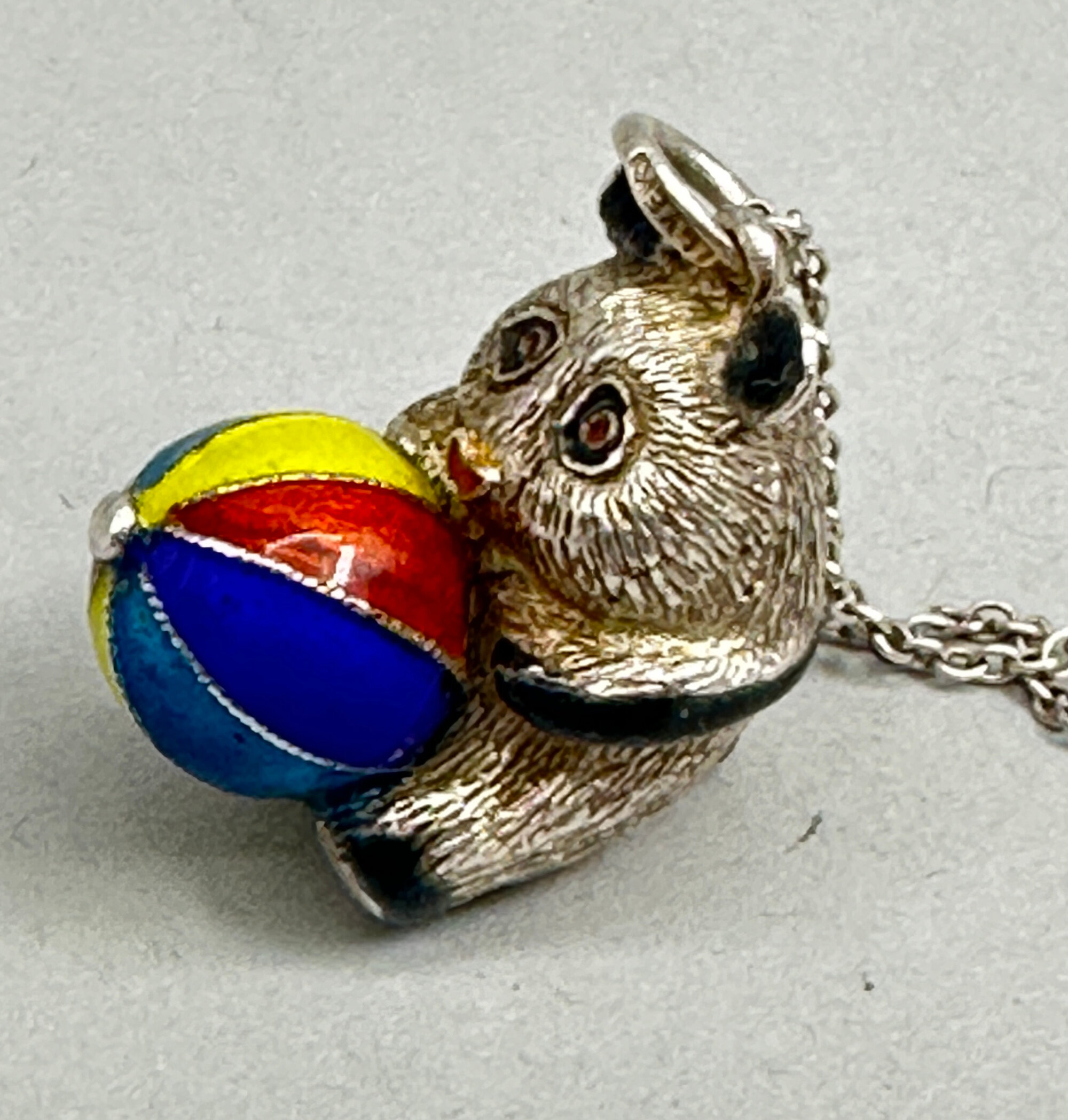
Sold silver and enamel Panda pendant necklace c1980
Price: £55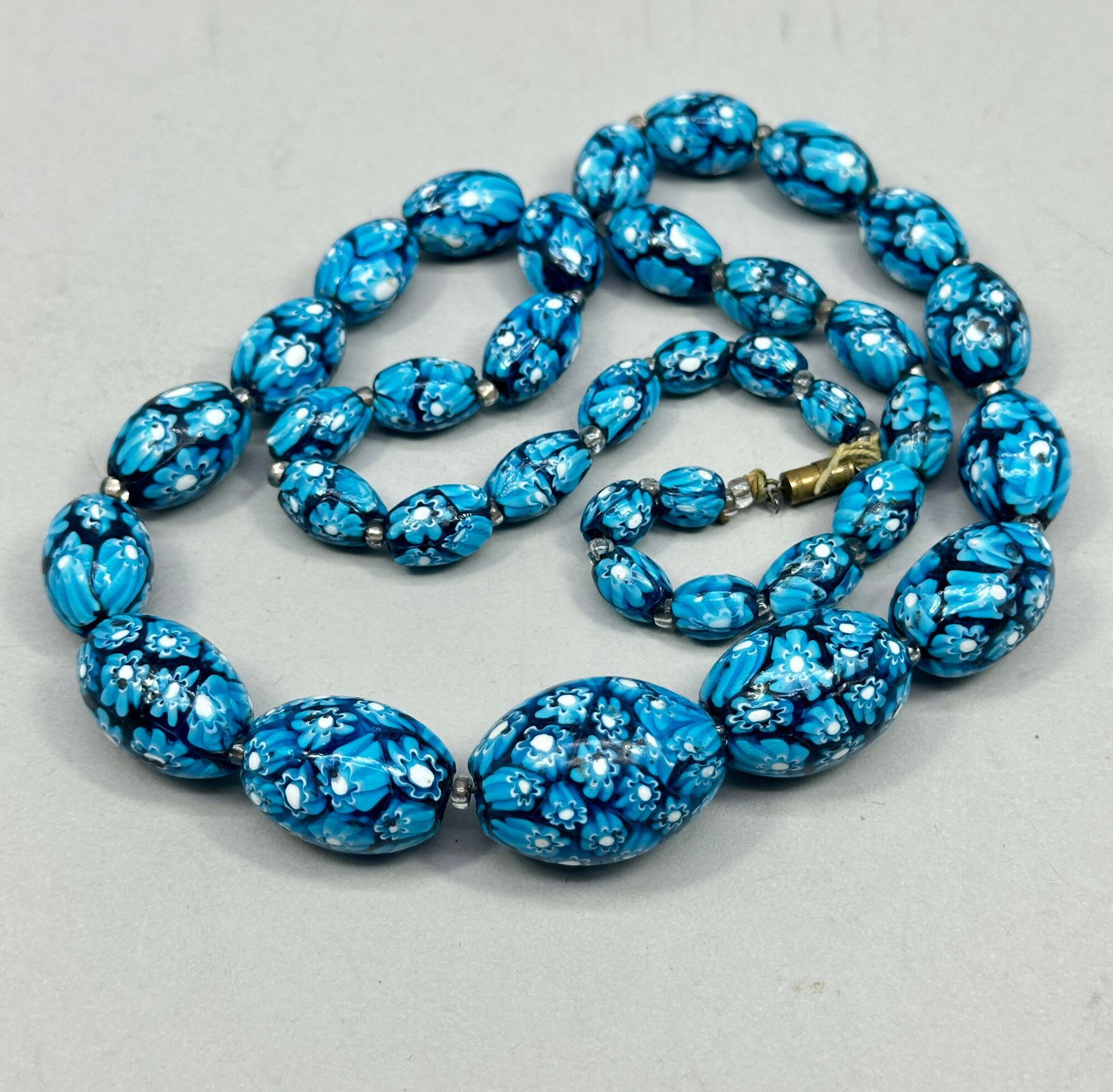
Blue Millefiore beads c1950
Price: £65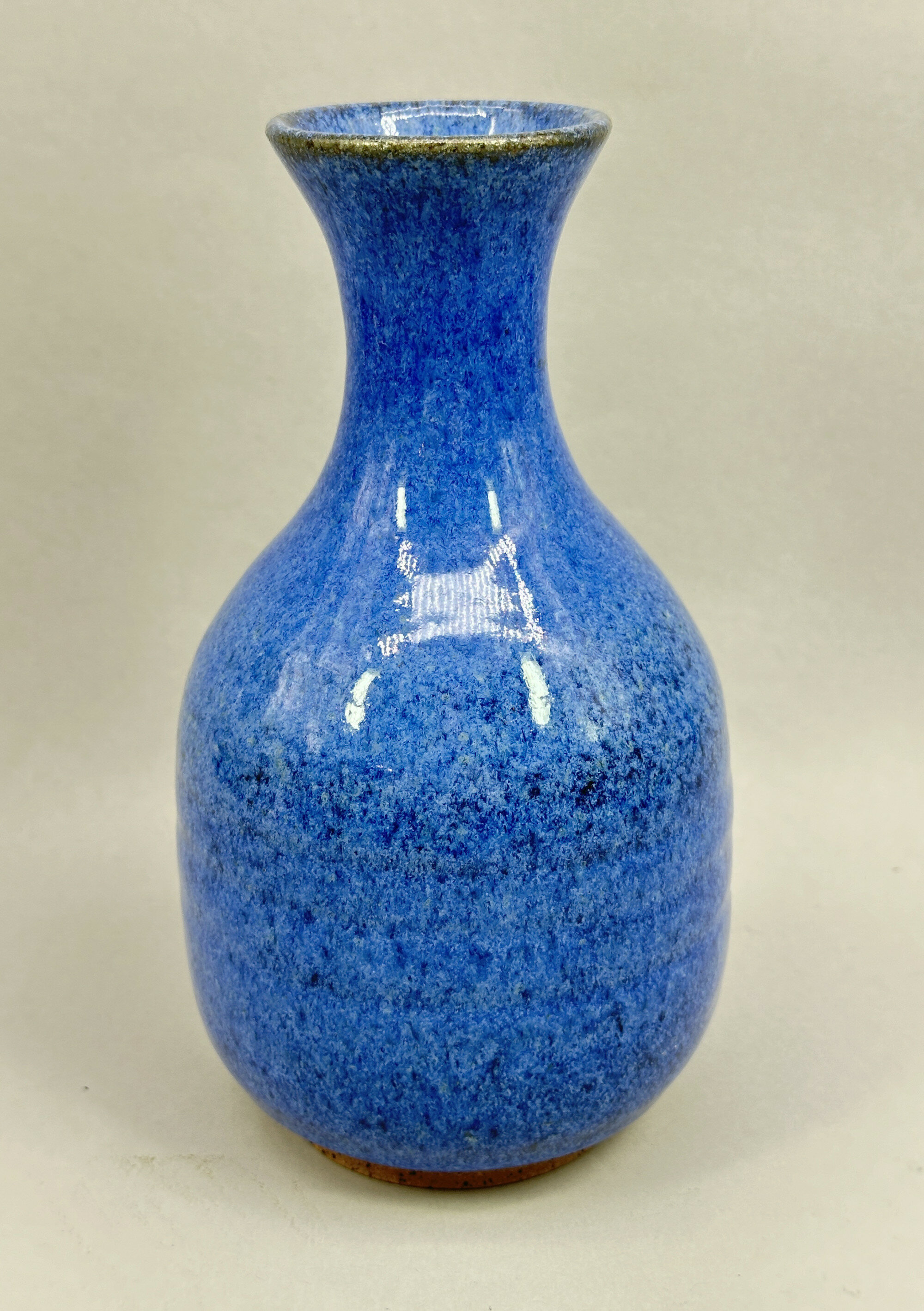
Studio Pottery Vase with Robin’s Egg Glaze marked Zambia, Modern
Price: £30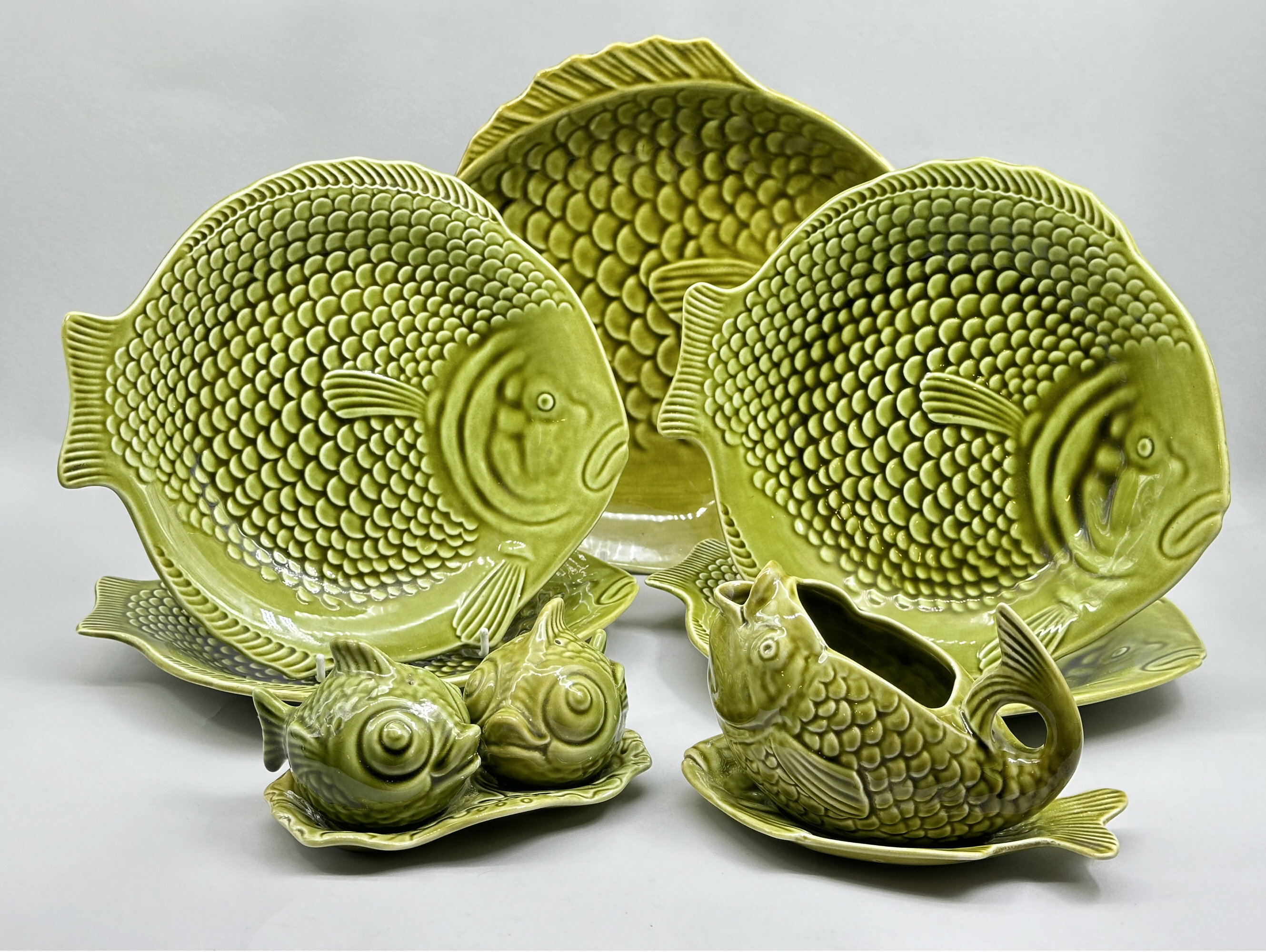
Shorter and Sons Green glazed Fish Service, 1950s/1960s
Price: £75The firm which later became Shorter and Son was first set up by Arthur Shorter in 1878 with a partner James Boulton in Stoke on Trent. Their products were solidly in the main-stream of Victorian taste - majolica wares of all types predominated. Time saw another generation join the firm and various amalgamations took place. One of the sons, Colley Shorter, developed a close association with Clarice Cliff whom he eventually married. Her designs, while concentrated on the wares signed with her name, also fed in to the productions of Shorter and Sons and the range of their wares expanded considerably in the 1920s and 1930s.
‘Fish Ware’, as it became known was introduced in the late 1920s and rapidly became one of their best selling lines. Initially production was confined to flat ware and in 1935 a part service was acquired by the Duchess of York, later to become Queen Elizabeth. The range expanded and the design of the gravy boat and stand, introduced in 1936 (and included in the present selection), was attributed to Cliff herself. There were further additions and the late 1950s saw the addition of salt and pepper pots on a wavy tray (also included in the present selection). This service, then, probably dates to around 1960 a little before the firm was effectively taken over by Crown Devon in 1964 and the eventual loss of the identity of its wares. The popularity of the line is easily understood and our present selection is an excellent memento of the design.
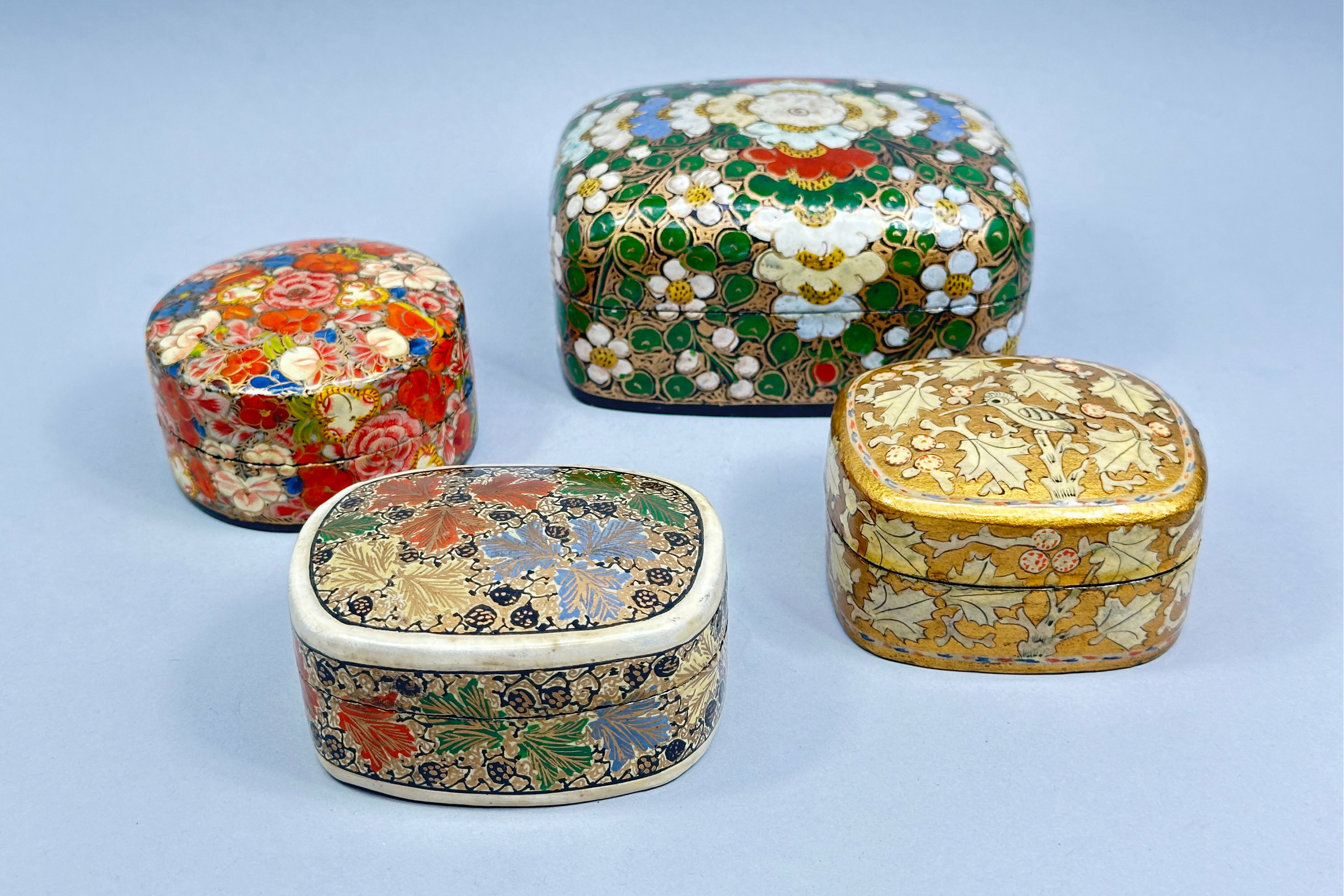
Four Papier-mâché Trinket Boxes, Kashmir, mid C20th
Price: £35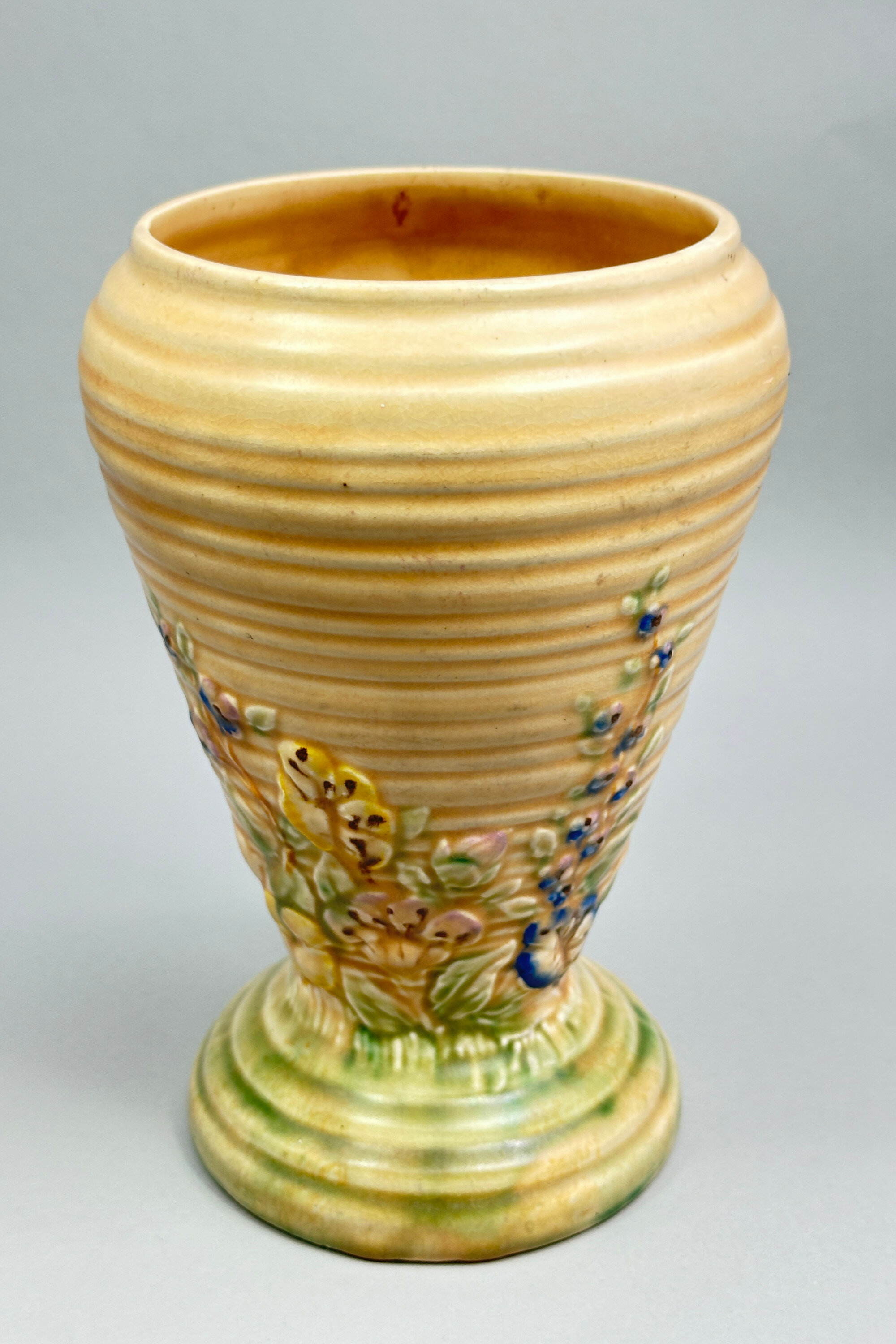
Art Deco Vase, Springtime, Price Brothers, Staffordshire, 1930s
Estimate: £20 – 30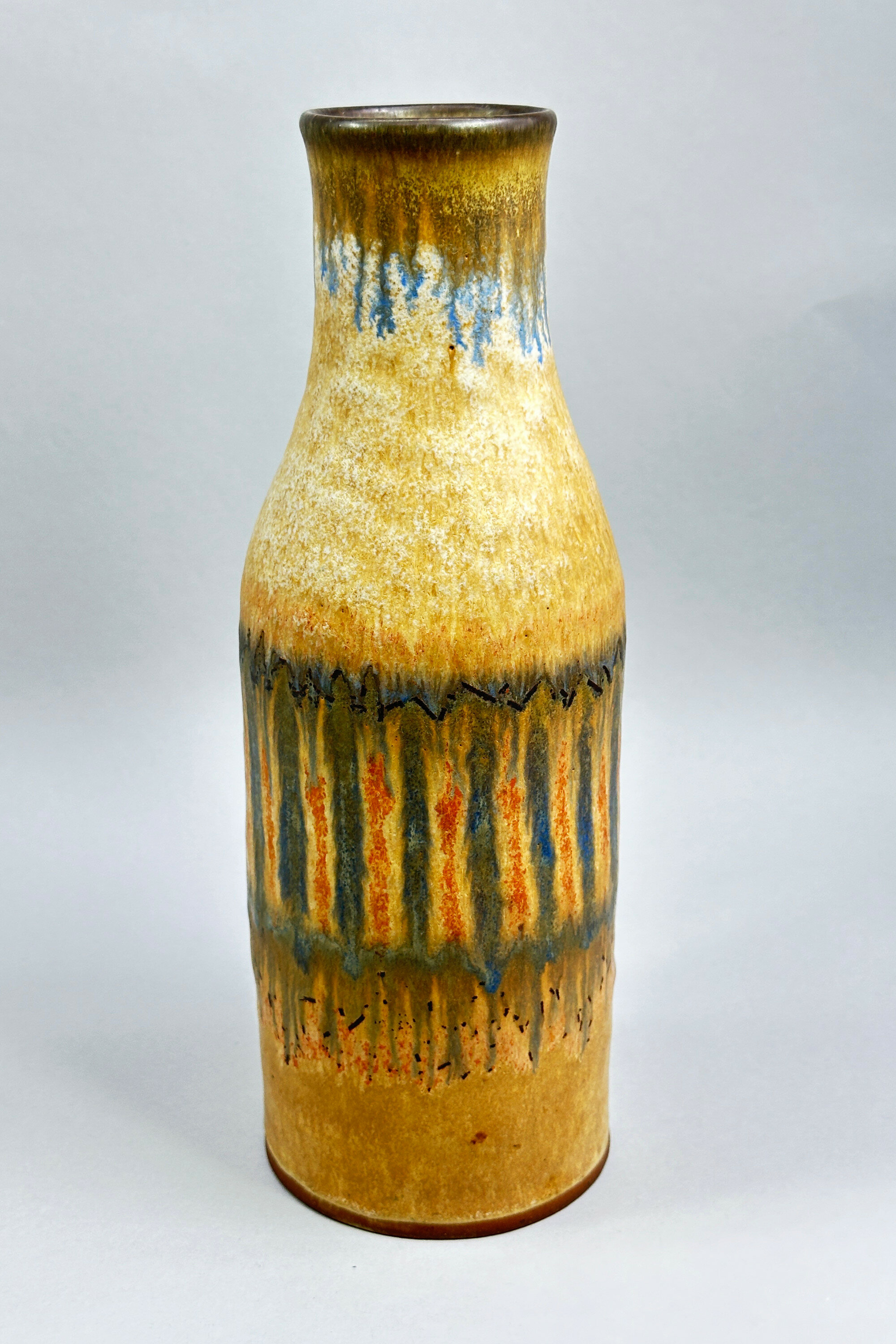
Studio Pottery Vase signed Kamini, Greece, 1970s
Price: £45Although ‘Kamini’ is both the Greek word for a kiln and the name of a village on the Greek island of Hydra, it actually stands here for the Greek firm of that name whose registered office was at Kallithea, a suburb of Athens. The Kamini pottery produced a wide range of appealing but often slightly rustic wares in the 1970s, many with the splash glaze effects we see here and all stamped with the firm’s name. This vase stands out somewhat for the simple lines of its form and the variety of effects in its decoration with a particularly pleasing palette of colours and demonstrates that this Mediterranean pottery could well rival at times the work of some of its European competitors.
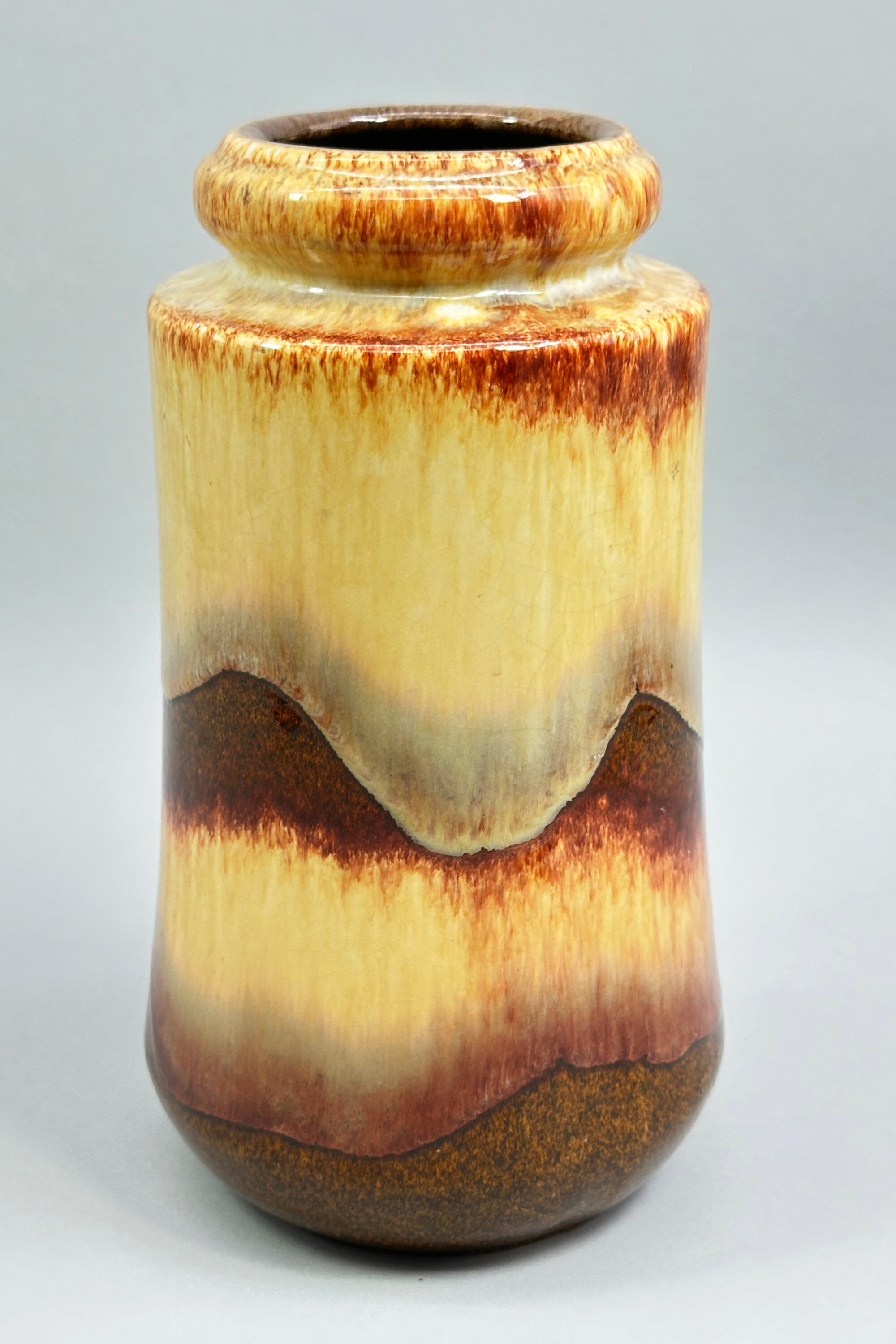
West German Studio Pottery Vase, Scheurich, 1960s
Price: £35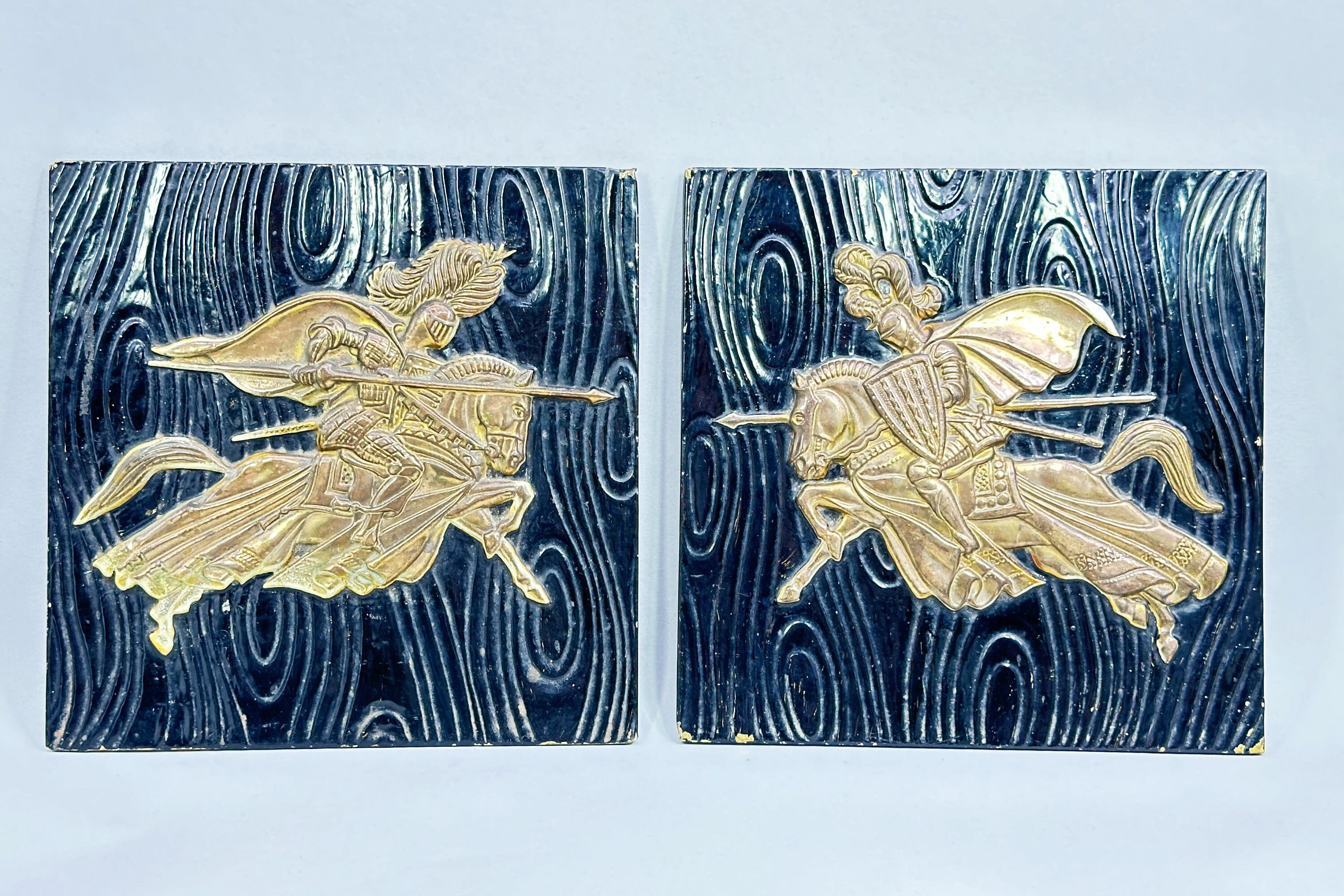
Pair of Brass Wall Plaques of Jousting Knights, Peerage Brass, mid C20th
Price: £45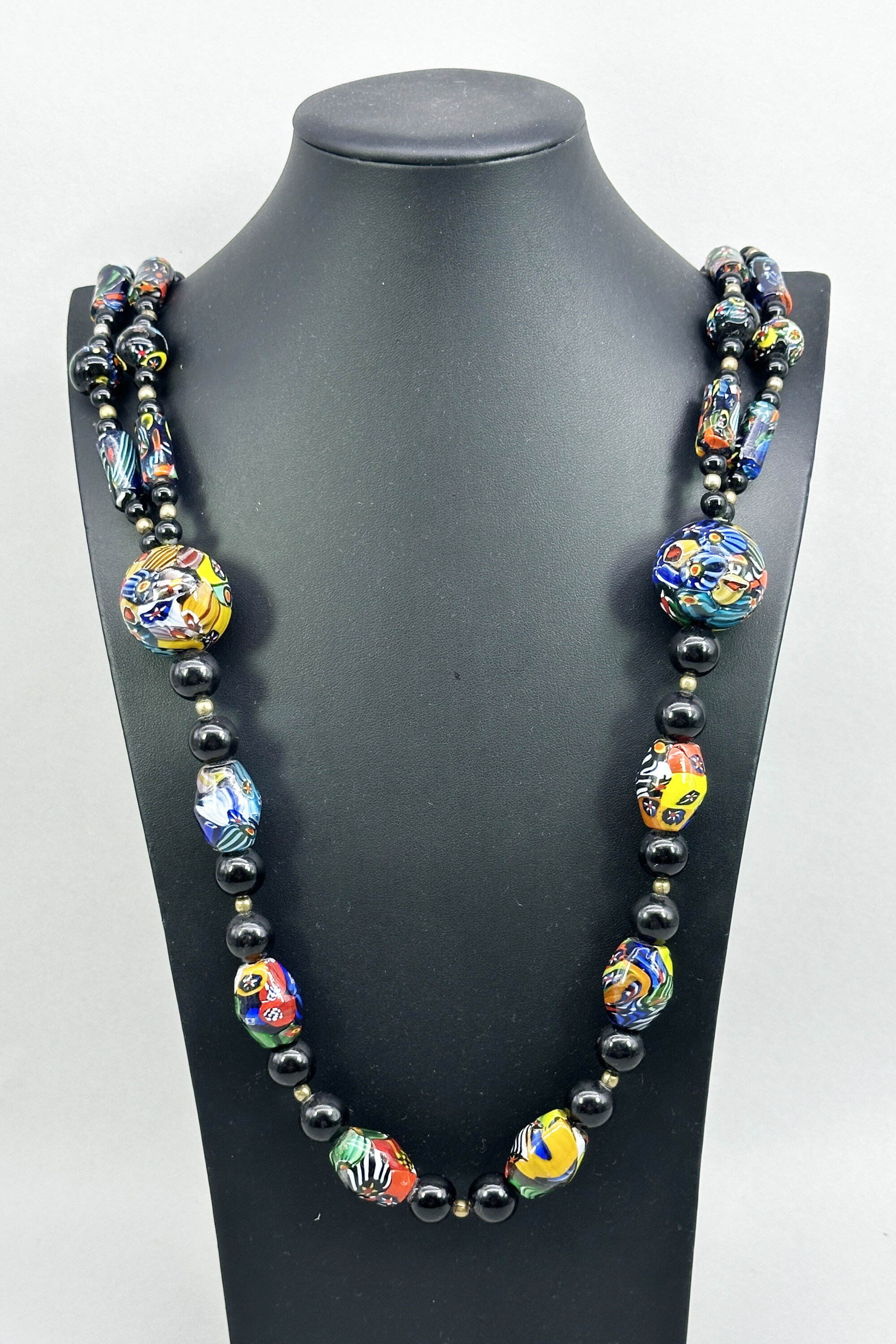
Monumental Mille Fiore glass bead necklace c1970
Price: £175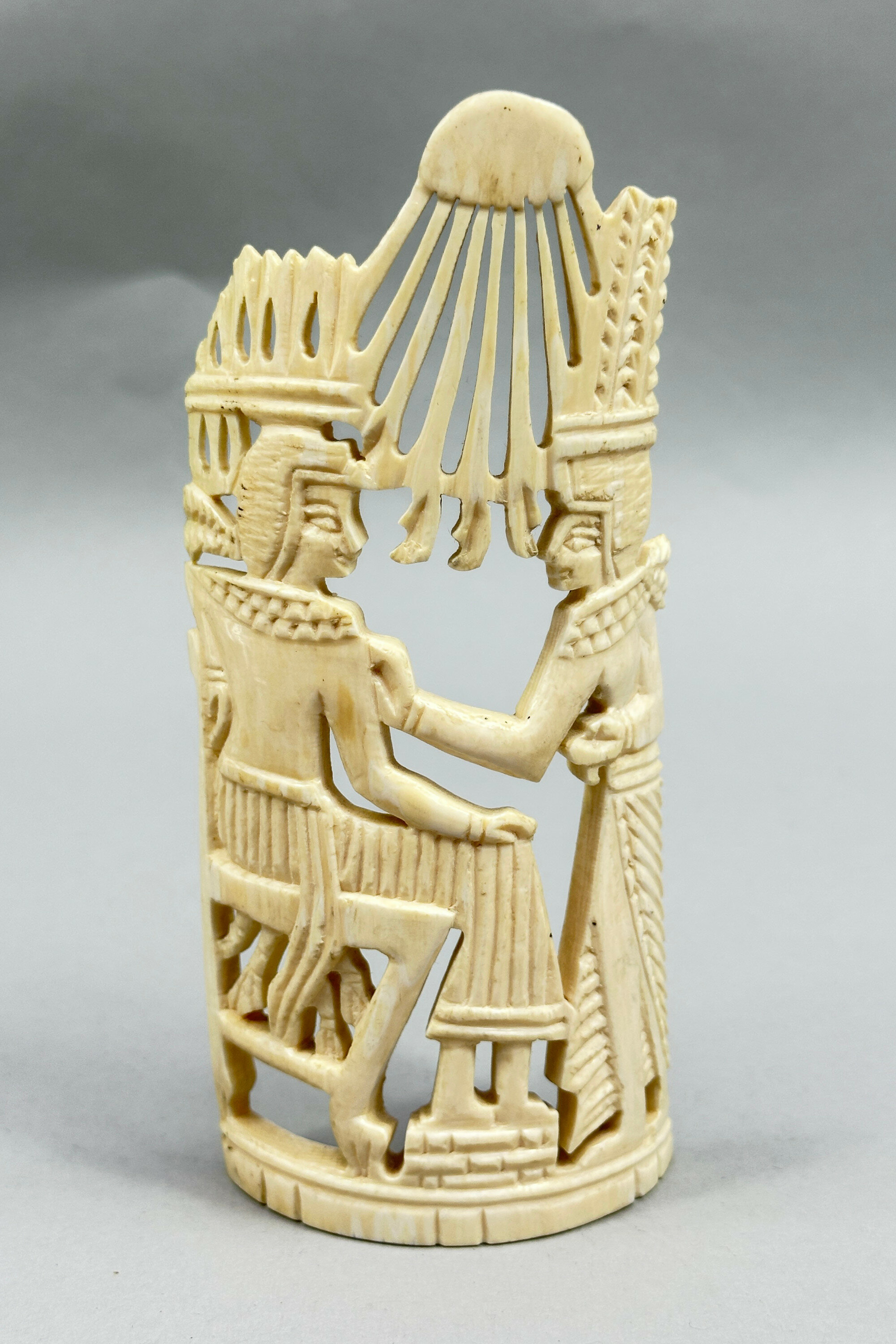
Egyptian table decoration depicting a Pharoah and Attendant, c1940
Price: £45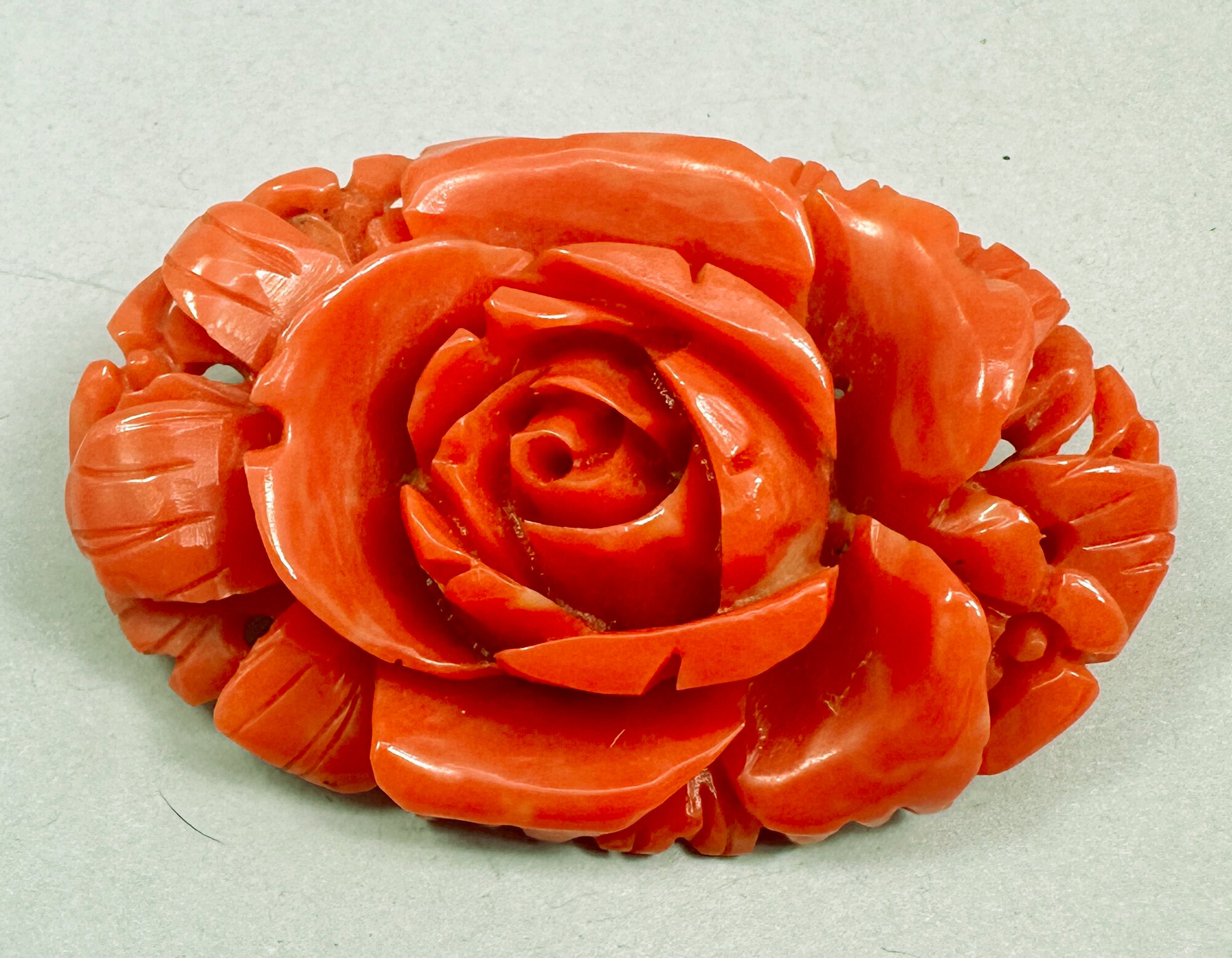
Large faux coral Bakelite brooch, British c1940
Price: £45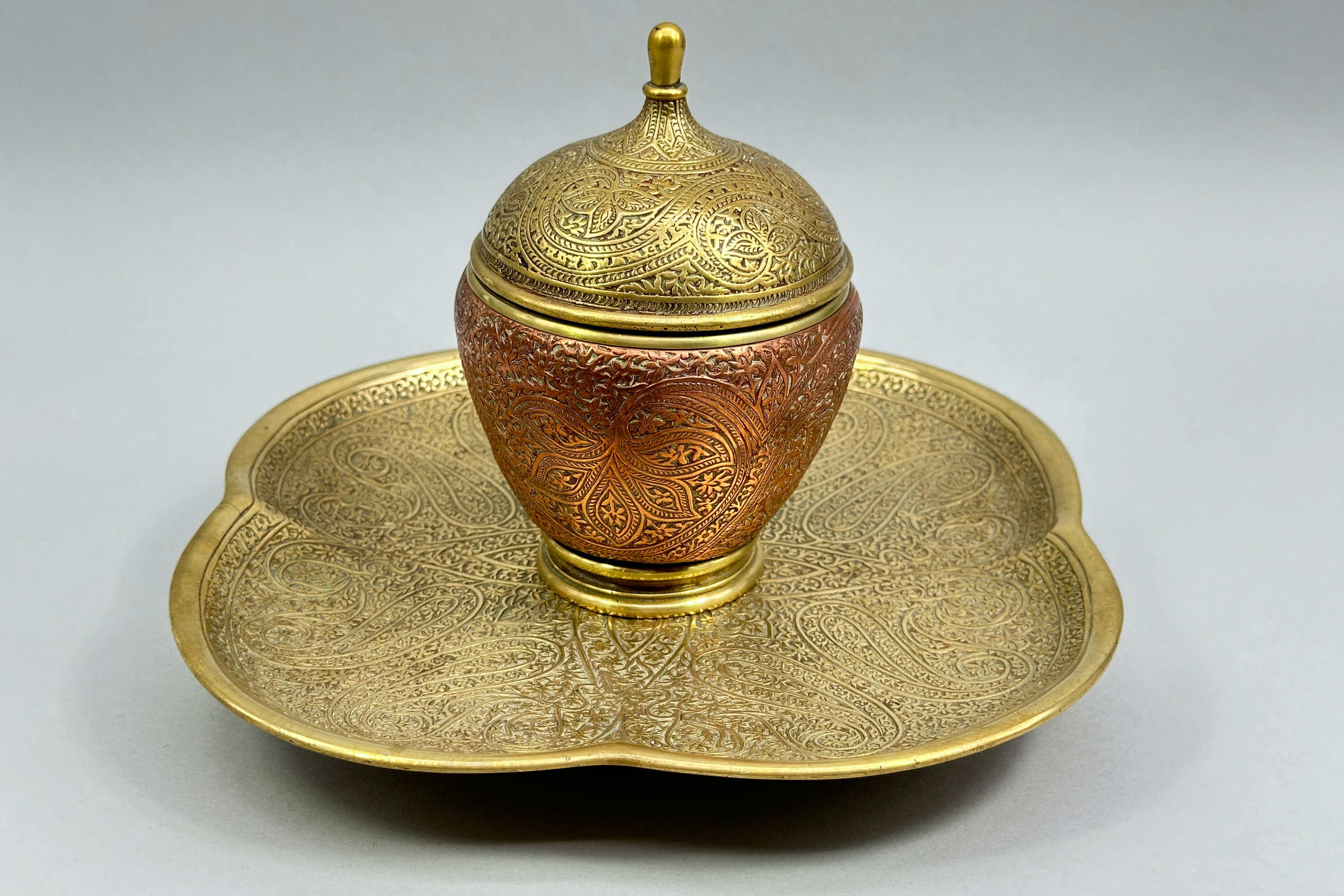
Indian Brass and Copper Inkwell, C20th
Price: £55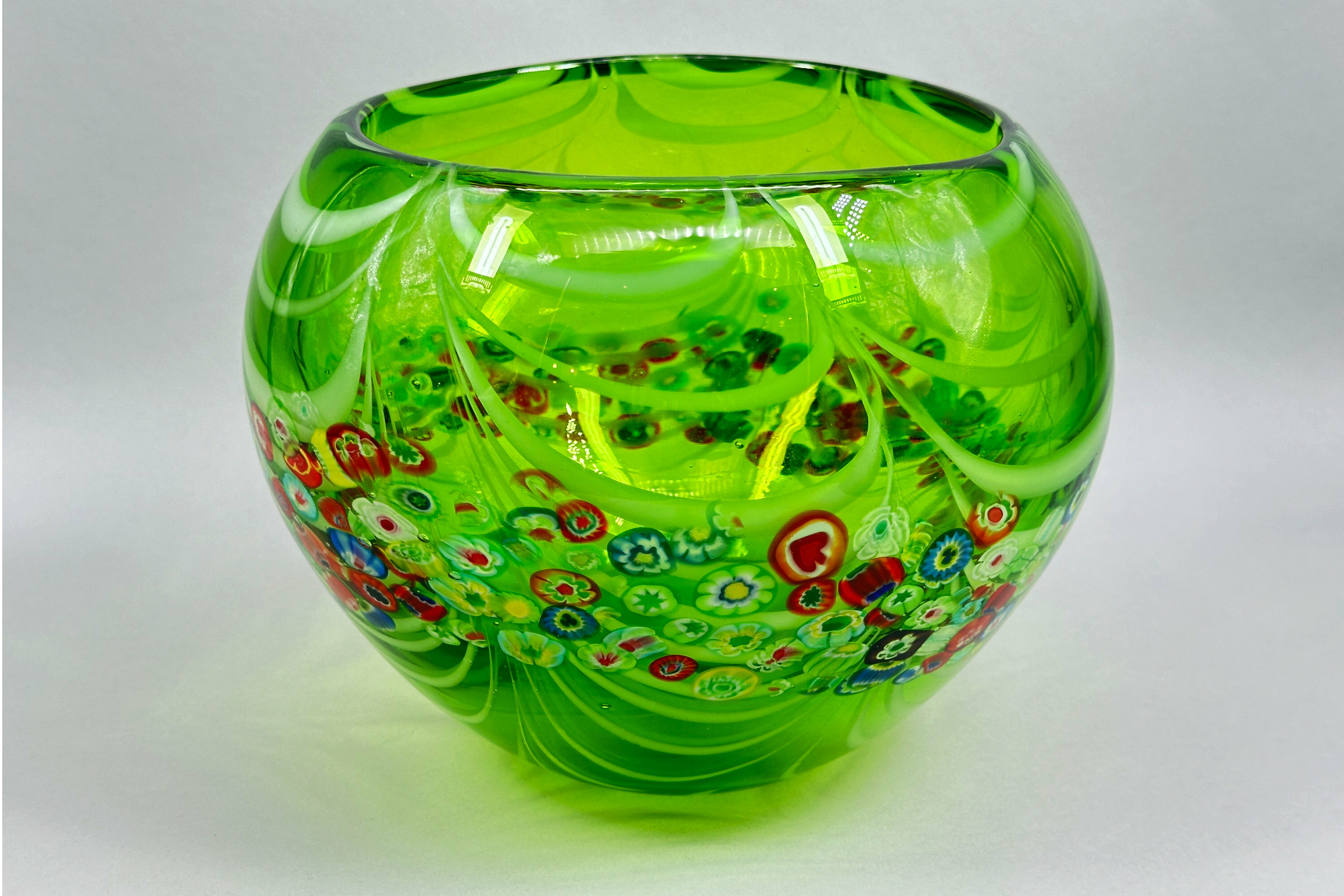
Green Murano Millefiori Latticino Glass Bowl, 1960s
Price: £150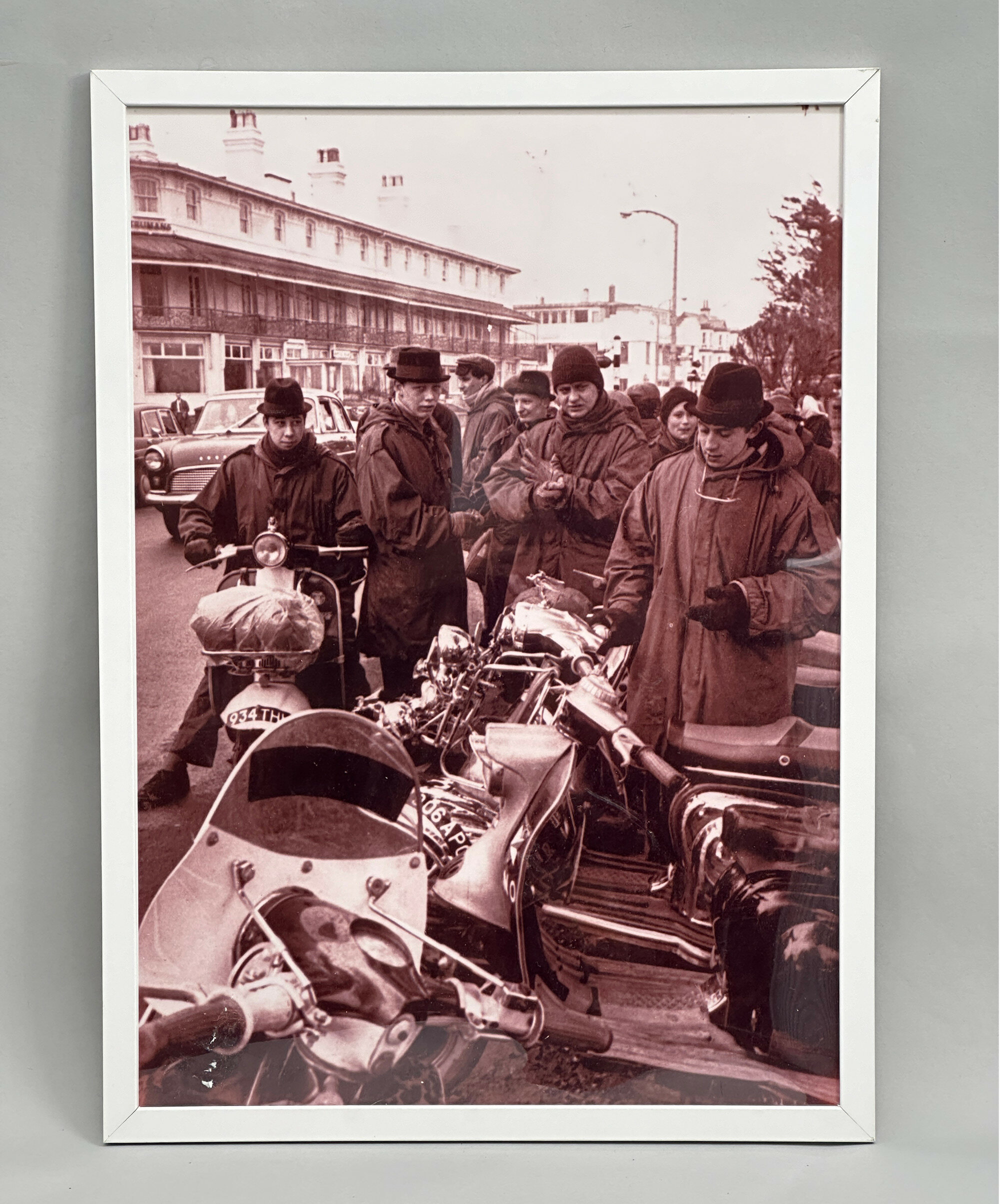
Mods at Clacton 1964, Photograph by Terry Disney for the Daily Express
Price: £45It was, though, a newsworthy confrontation and press photographers were sent in to record events. The most notable of these was Terry Disney who worked for the Daily Express newspaper. Disney was a distinguished and prolific photographer from the 1960s onwards and many of his striking images survive, not least those capturing the major personalities of the entertainment world at the time, including the Beatles themselves. His images of the ‘mods’ (he seemed less interested in the ‘rockers’) capture the atmosphere of the scenes vividly and this photograph is an excellent example of his work on that Easter weekend (for another see image 5). Often only obtainable under licence, this print is an ideal opportunity for a collector to acquire a near iconic image. It is offered with a very basic frame which might well be replaced with something which would enhance the photograph more sympathetically.
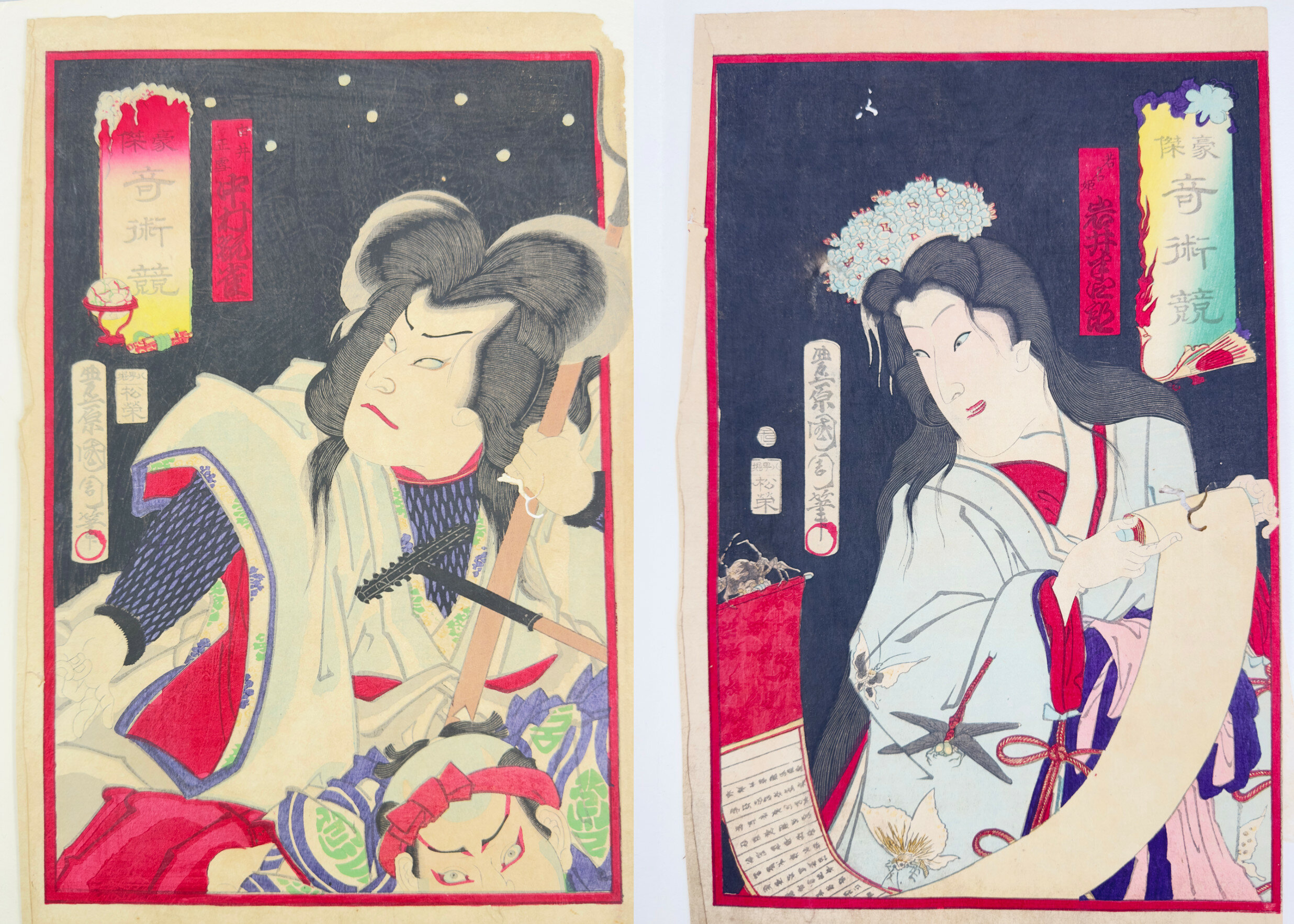
Two Japanese Woodblock Prints by Toyohara Kunichika, second half C19th
Price: £75Toyohara Kunichika achieved great fame and distinction a Japanese print artist. Born in 1835 he studied under Toyohara Chikanobu and then Utagawa Kunisada (also known as Utagawa Toyokuni III) eventually using a combination of both his teacher’s names to create his own professional one. At first he worked within Kunisada’s studio and when his teacher died in 1865 was asked to design two memorial portraits of him. The beginning of the Meiji era (1868-1912) saw Kunichika issuing his own prints, often in themed series and he became known in particular for his portrayals of kabuki actors, indeed he regarded the theatre as almost his second home. A contemporary once wrote ‘"Print designing, theatre and drinking were his life and for him that was enough.’ He achieved great fame and was rated as one of the masters of woodblock printing. Contemporary observers noted Kunichika's skilful use of colour in his actor prints, but he was also criticized for some of his choices for unlike most artists of the period, he made use of strong reds and dark purples rather than the softer colours used previously, exploiting the recent import of new dyes from Germany. Red, for the Japanese, meant progress and enlightenment so there was probably hidden meaning here. Eventually Kunichika’s lifestyle took its toll and he died in poor health, aged 65. It had been a Japanese custom for people of high cultural standing to write a poem before death. Kunichika's own, inscribed on his grave, reads ‘Since I am tired of painting portraits of people of this world, I will paint portraits of the King of hell and the devils.’ For many years his prints fell out of favour but interest has now revived and Kunichika is regarded as one of the eminently collectible Japanese artists in the field and these two prints are an excellent example of his work.
Each print is accompanied by a printed text on fine paper which presumably describes the character represented. The second of them is accompanied by two sheets one of which has become attached in one small place to the print itself but could probably fairly easily be detached by a restorer. In general there are some typical signs of age with minor losses (illustrated), tears and folding but the colours remain bright and fresh.
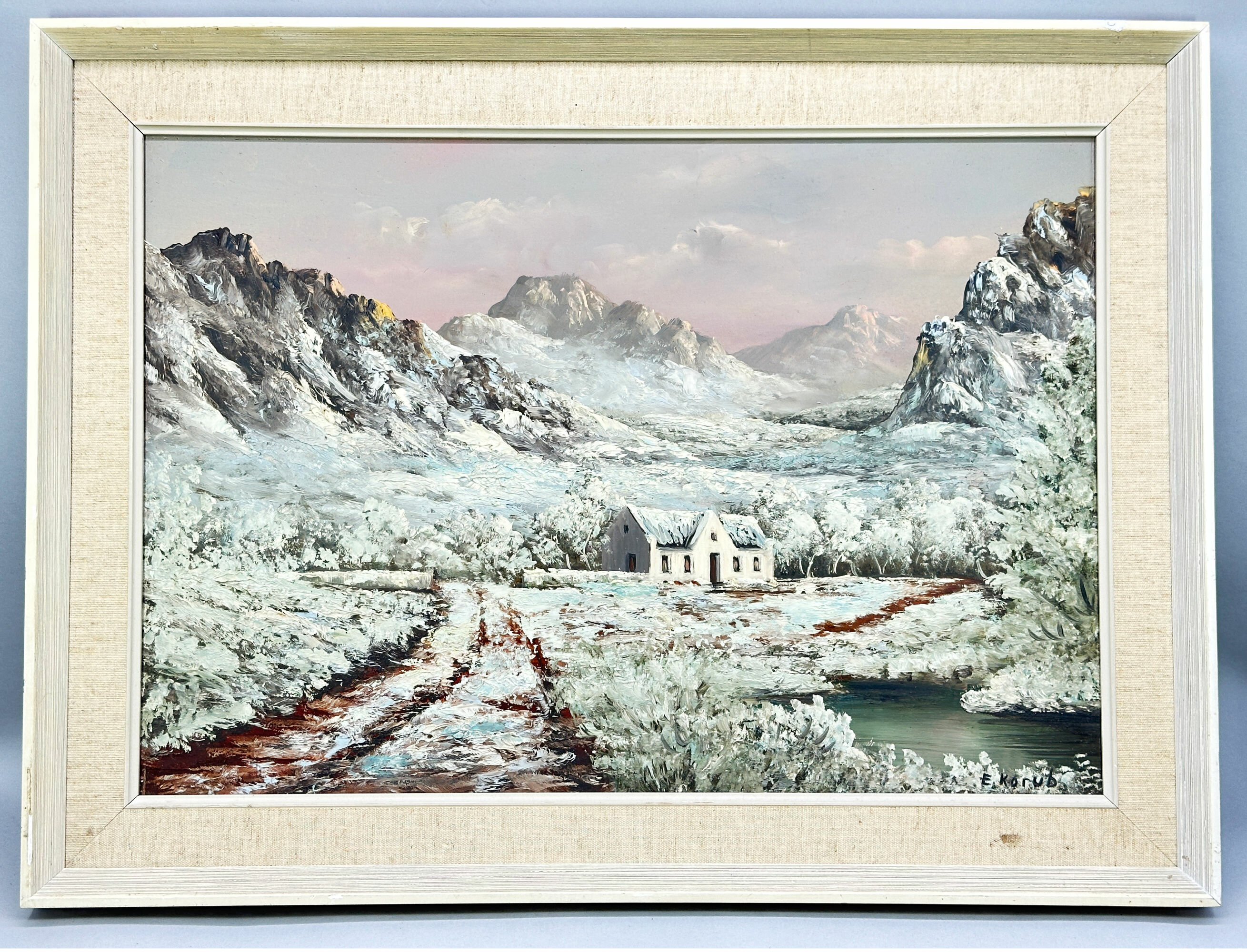
Framed Oil Painting on Board of a Winter Landscape Scene, C20th
Price: £55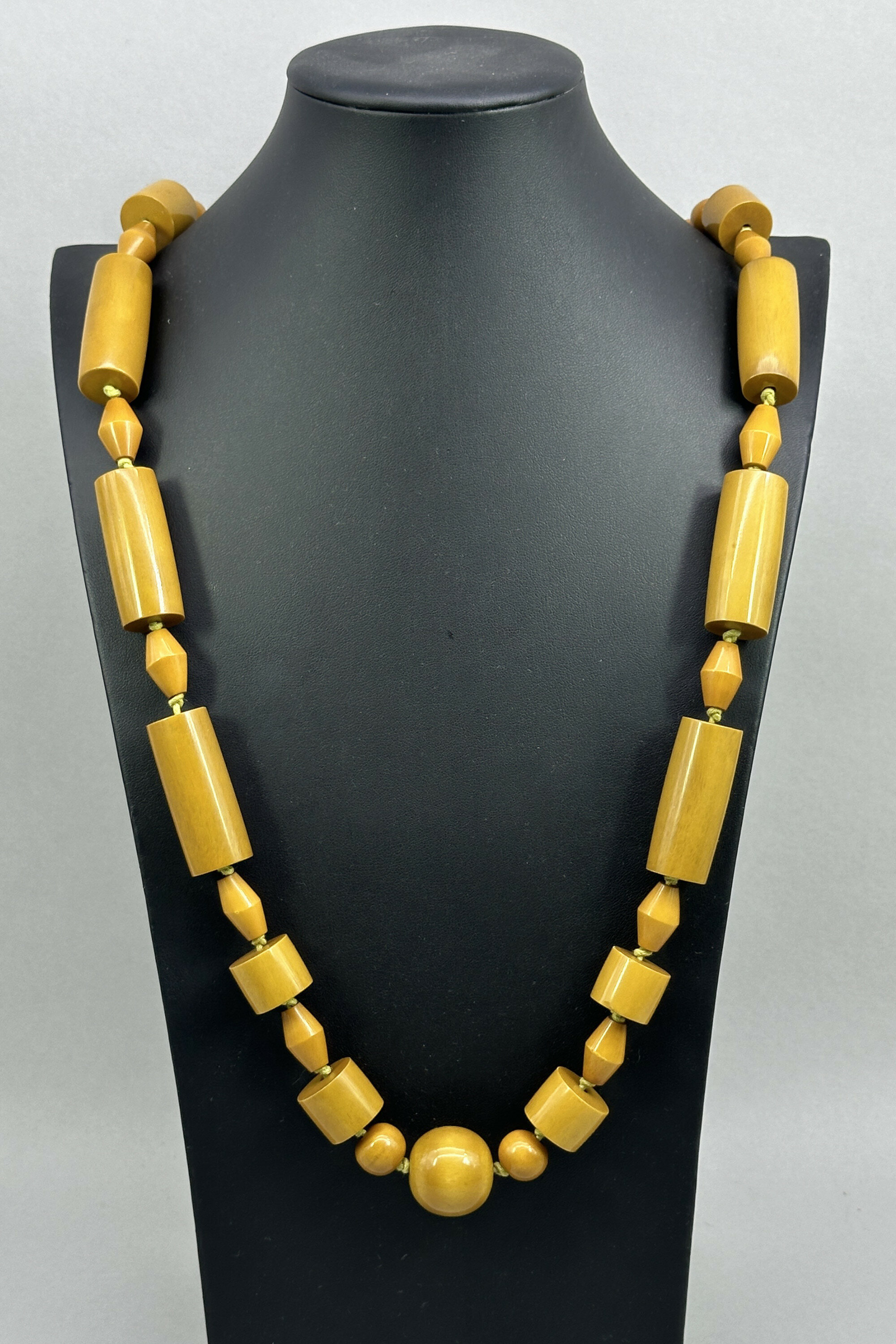
Art Deco Catalin Bakelite necklace, American c1930
Price: £125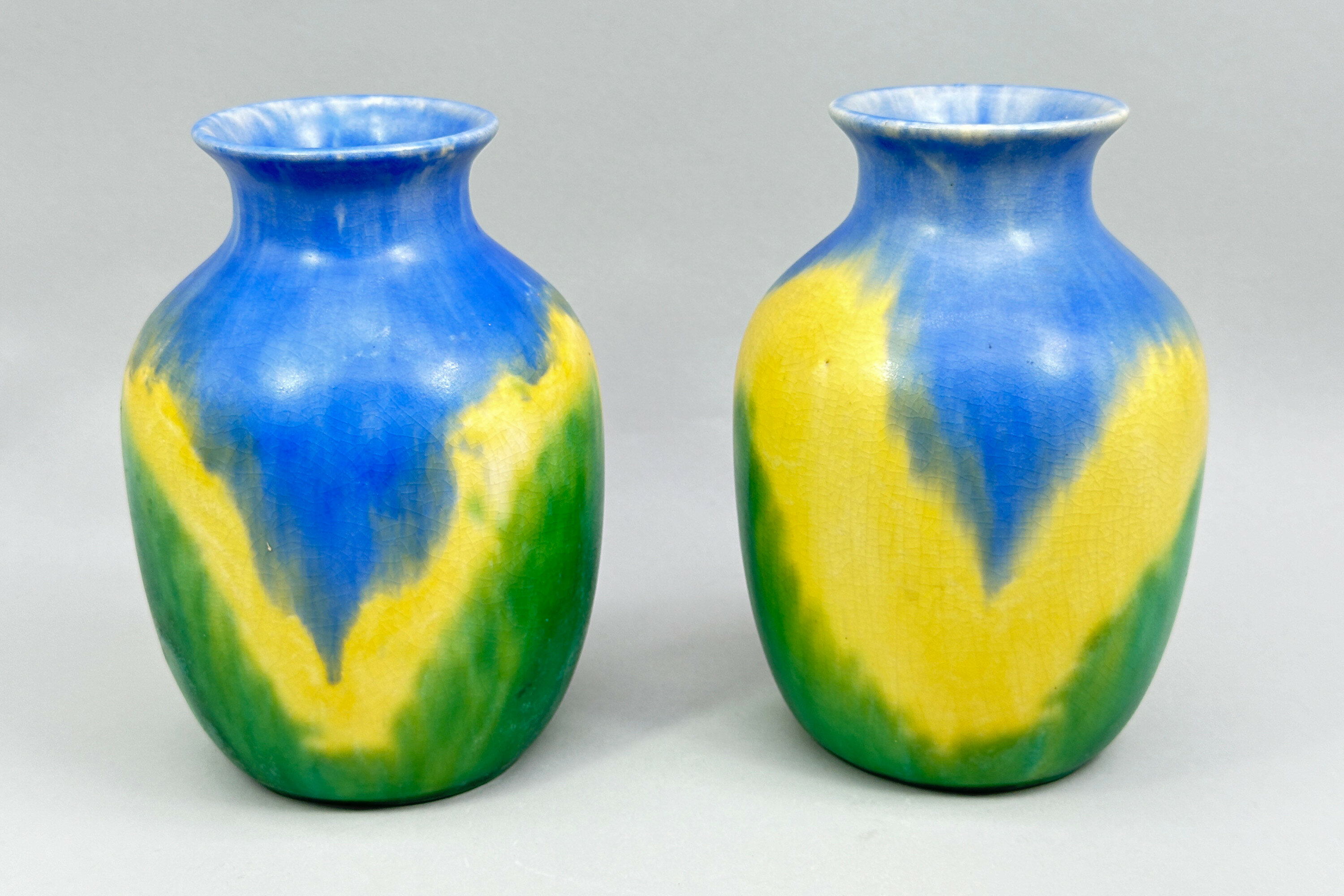
Pair of Art Deco style Avon Ware Vases, 1930s
Price: £45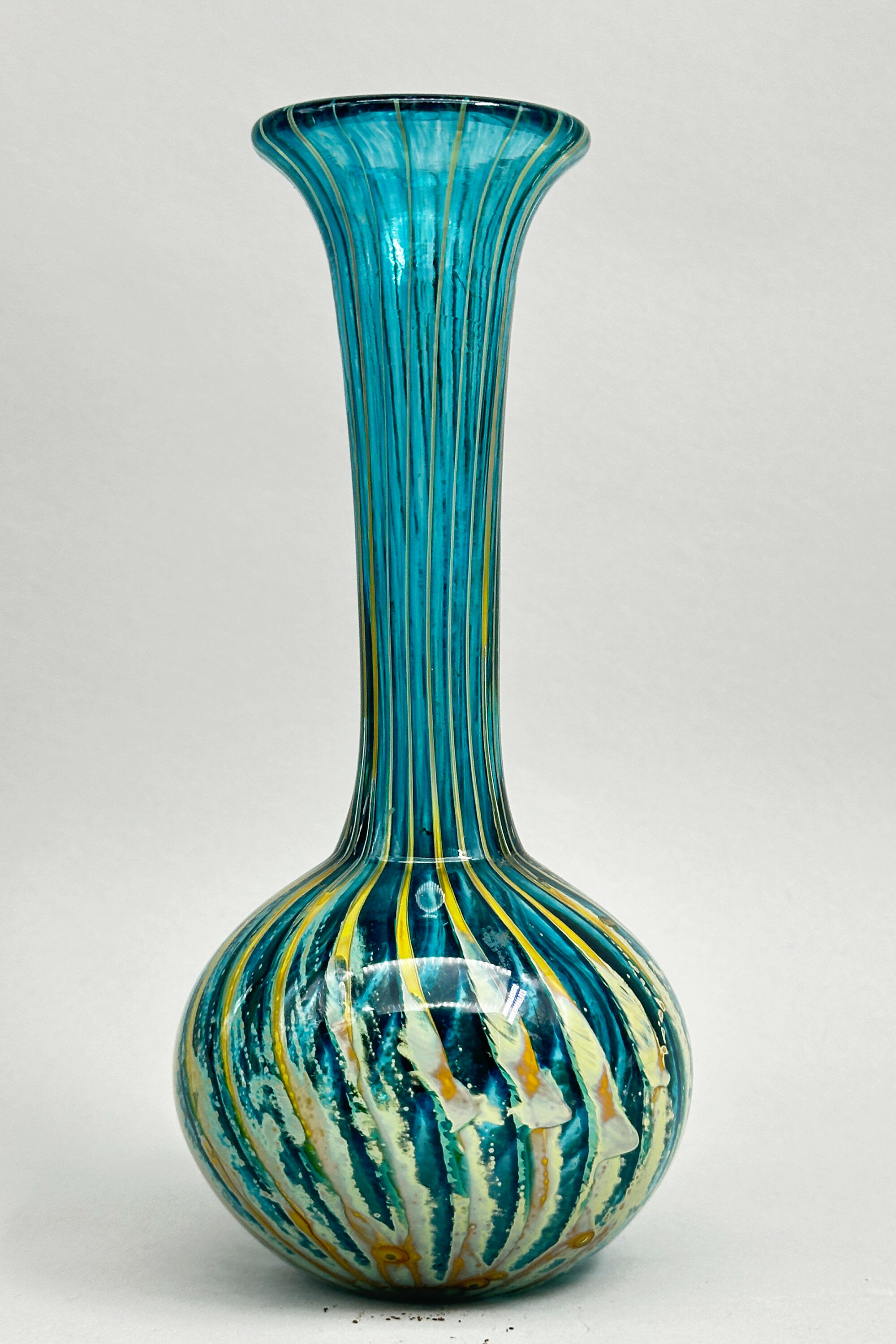
Phoenician Glass Vase, signed, late C20th
Price: £45Phoenician Glass was founded on Manoel Island, Malta in the 1980s by Leonard Sullivan, who had worked previously at Mdina Glass and many of his designs resembled those of his old employers. Certainly, the influence of Mdina and perhaps that of one of its founders, Michael Harris, can be seen here. Phoenician Glass took its name from the ancient Phoenician civilisation, which colonised Malta during the first millenium BC.
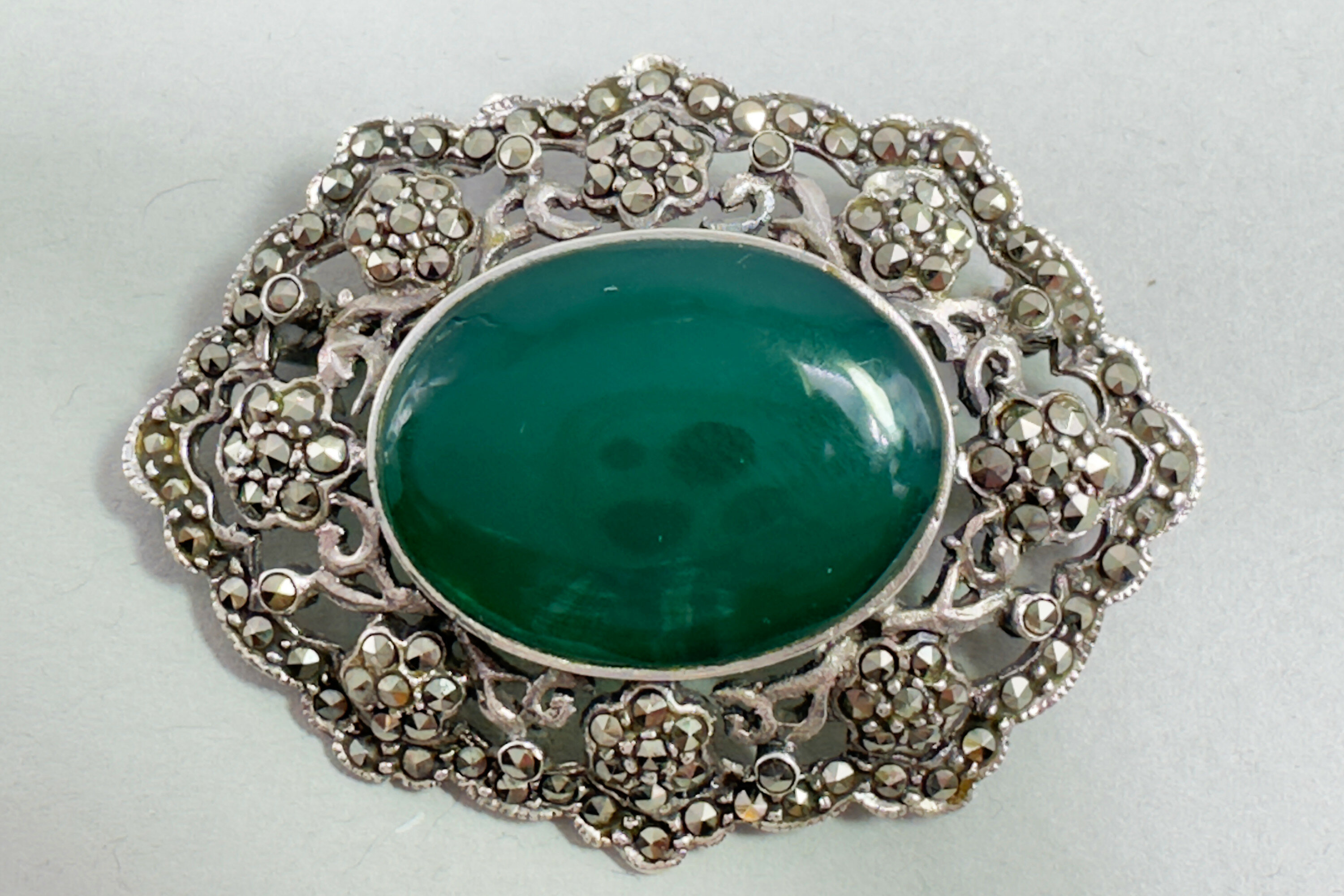
Green Chalcedony silver mounted brooch with marcasite stones, 1940s
Price: £45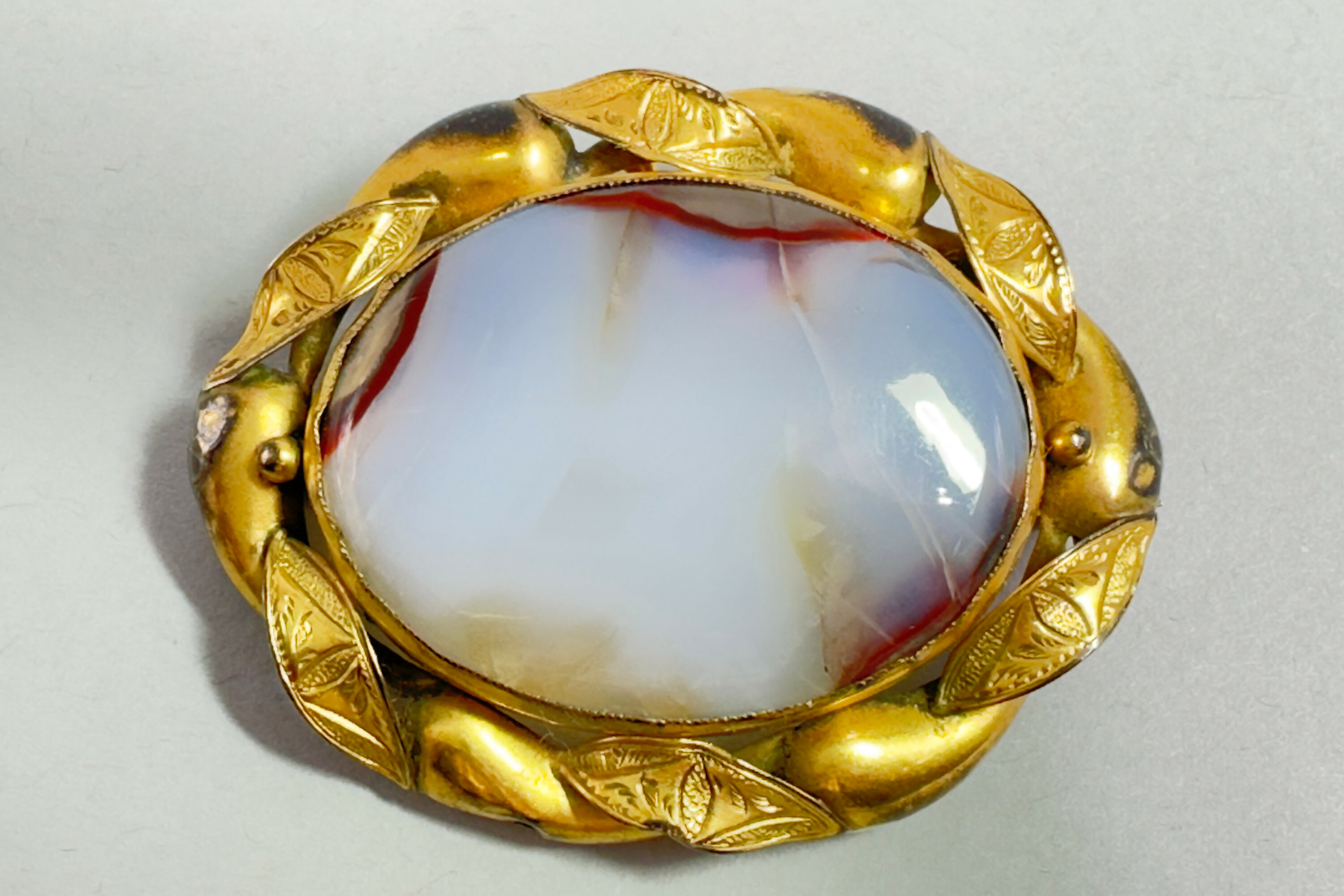
Edwardian rolled gold and white agate brooch, c1910
Price: £45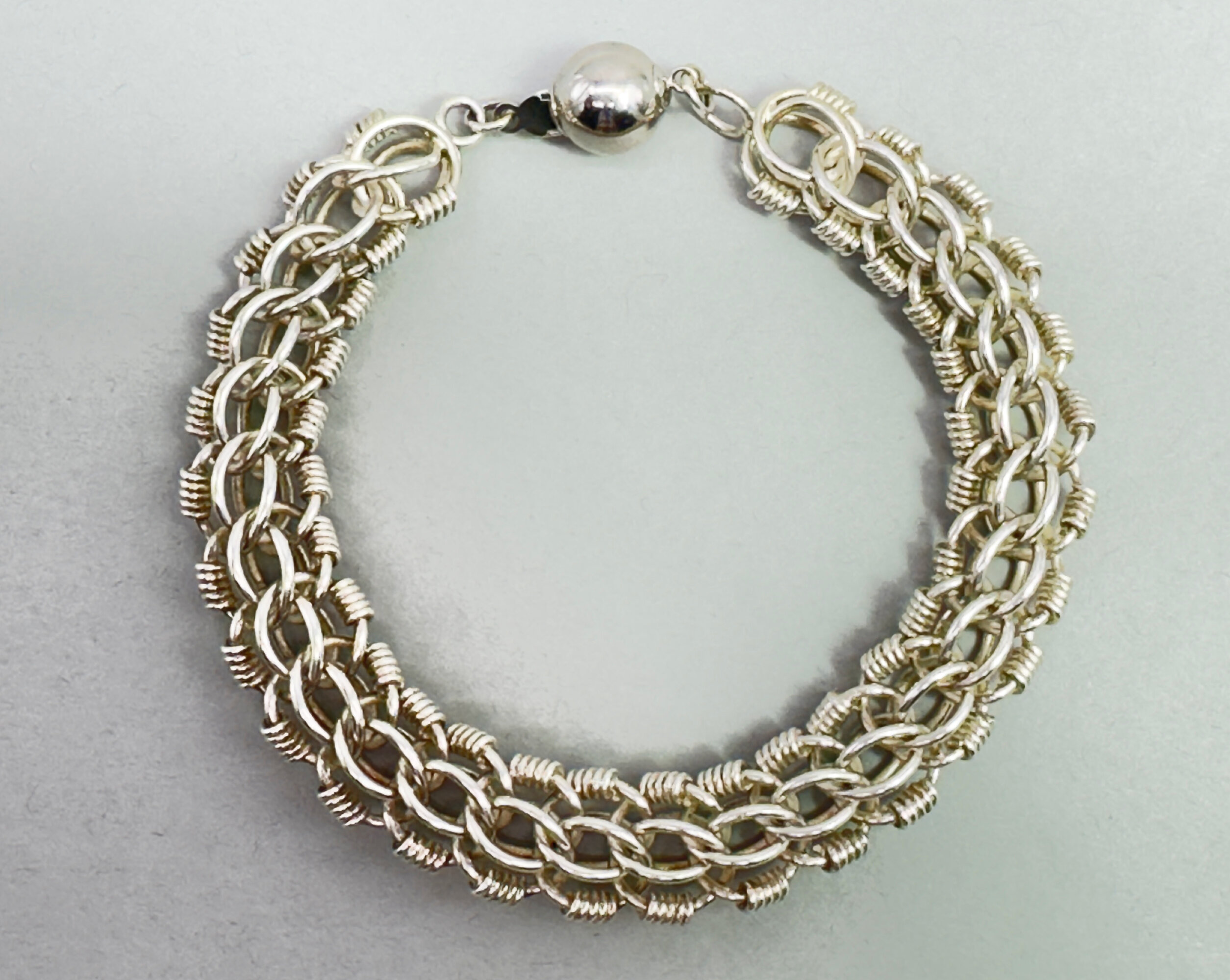
Large silver fancy link Bracelet, modern
Price: £50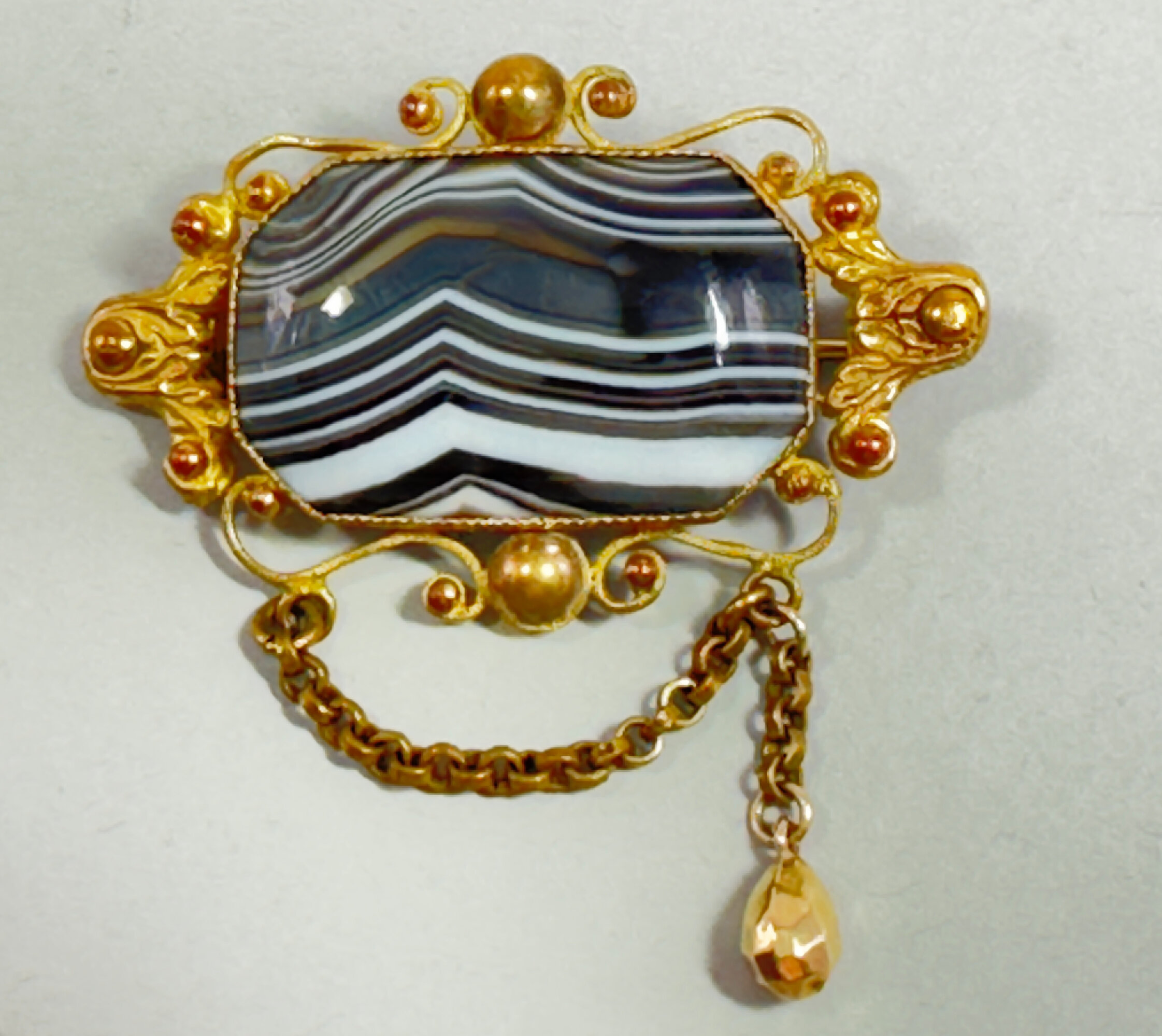
Victorian rolled gold and black and white agate Brooch, English c1920
Price: £50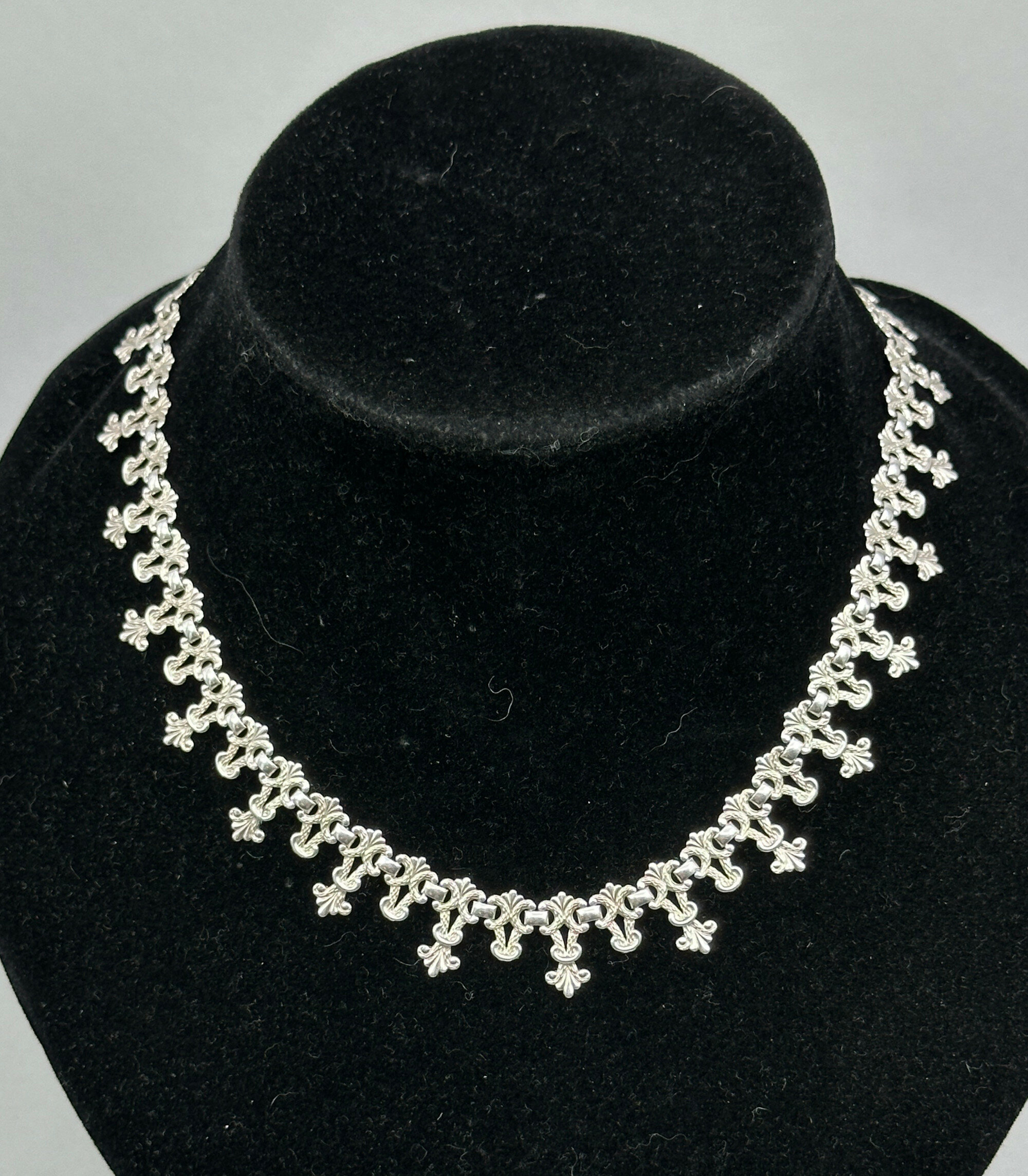
Edwardian silver fleur-de-lis collar necklace circa 1910
Price: £85Please note that the necklace is not marked for silver and has not been tested.
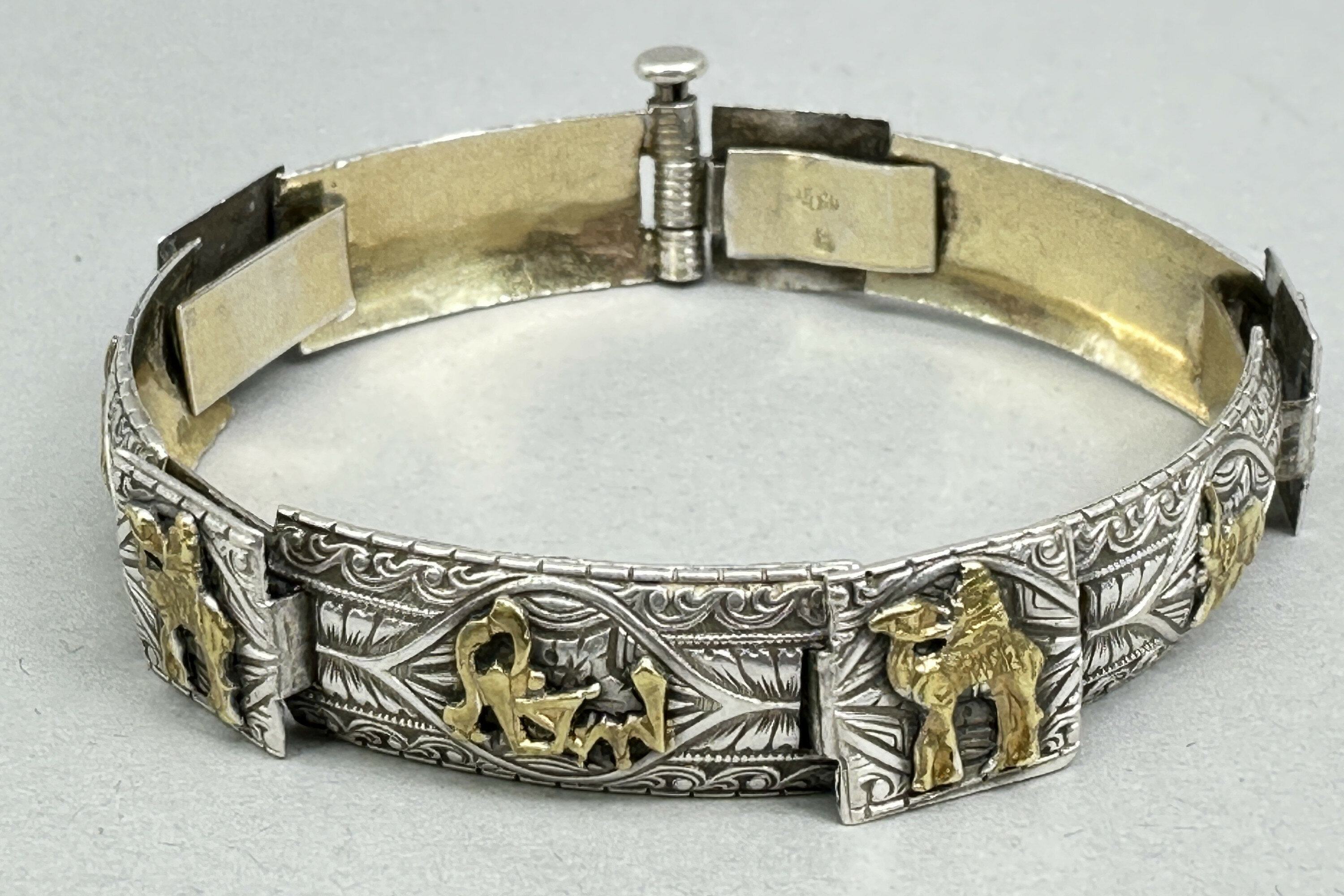
Very fine Moroccan engraved silver bracelet c1930
Price: £95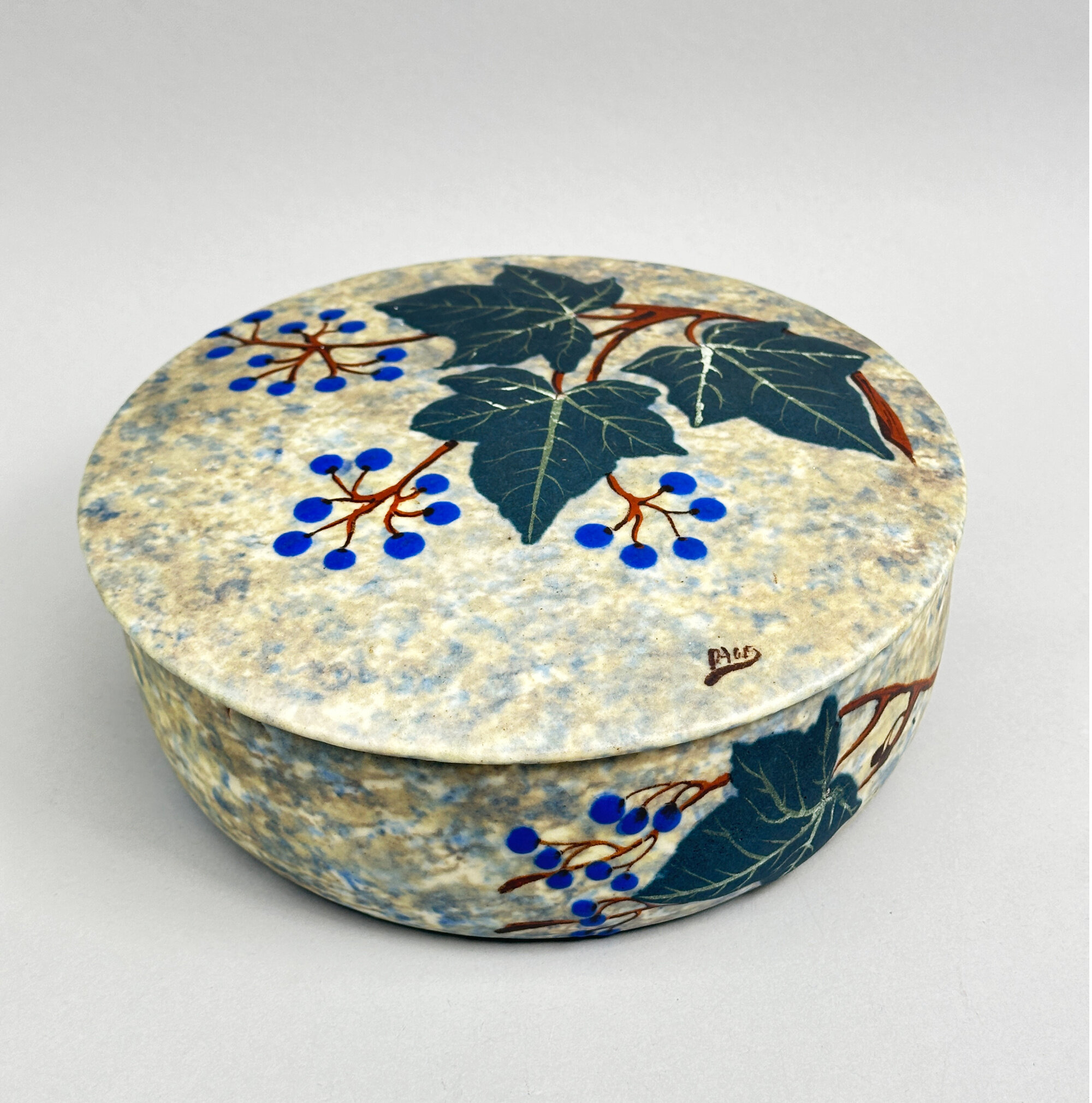
Art Deco style Ceramic Bowl and Cover by Louis Dage (1885-1961), early/mid C20th
Price: £180……………………………………………………………………………………....................................................................................……
Born in 1885 at Lille, France, Louis Dage was early known as a ceramics artist, describing himself on the birth registration of his daughter in 1906 as a ‘decorator on faience’. In 1920 he joined with Louis Fontinelle (1886-1964) to create a faience factory in Antony, near Paris, but the venture was short lived and they parted company two years later. In 1930, Dage set up his own studio at Saint-Sever in company with his brother and daughter becoming managing director of the firm three years later. There then followed a little over thirty years of production under his direction until his death in 1961. Art Deco designs with their simple lines and bold decoration were produced initially to be followed by pieces of more rugged shapes and patterns, partly resulting from the shortage of conventional raw materials during the second world war.
This bowl and cover represents the best of Dage’s earlier work. The base has straight sides curving in slightly towards the base and has a flush fitting flat and gently domed cover overhanging slightly at the edge. The piece is covered overall with a mottled glaze in tones of blue and light aubergine on which are painted maple leaves in green with bright blue berries, a design which can be found on some of Dage’s other pieces (see image 13). The lid carries his signature ‘DAGE’ with a flowing line underneath, a much less common version of the Dage mark but which can be found elsewhere (see image 14). More normally pieces are signed ‘L.Dage’, the name being in lower case rather than capitals.Form and decoration combine to produce a striking object, characteristic of the fashions of the time of its production and a worthy tribute to its maker.
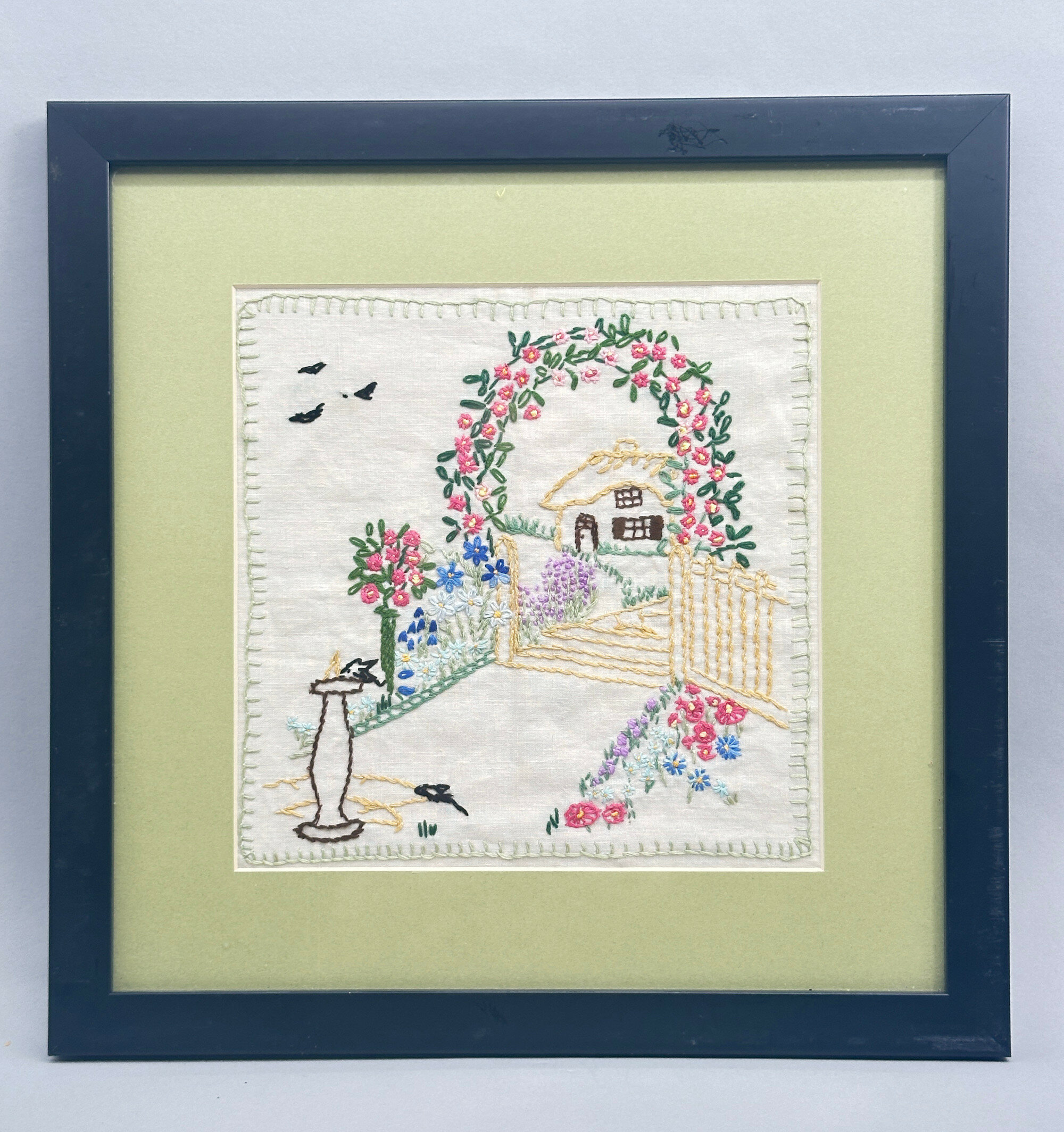
Vintage Needlepoint Picture of a Garden Scene, framed, second half C20th
Price: £25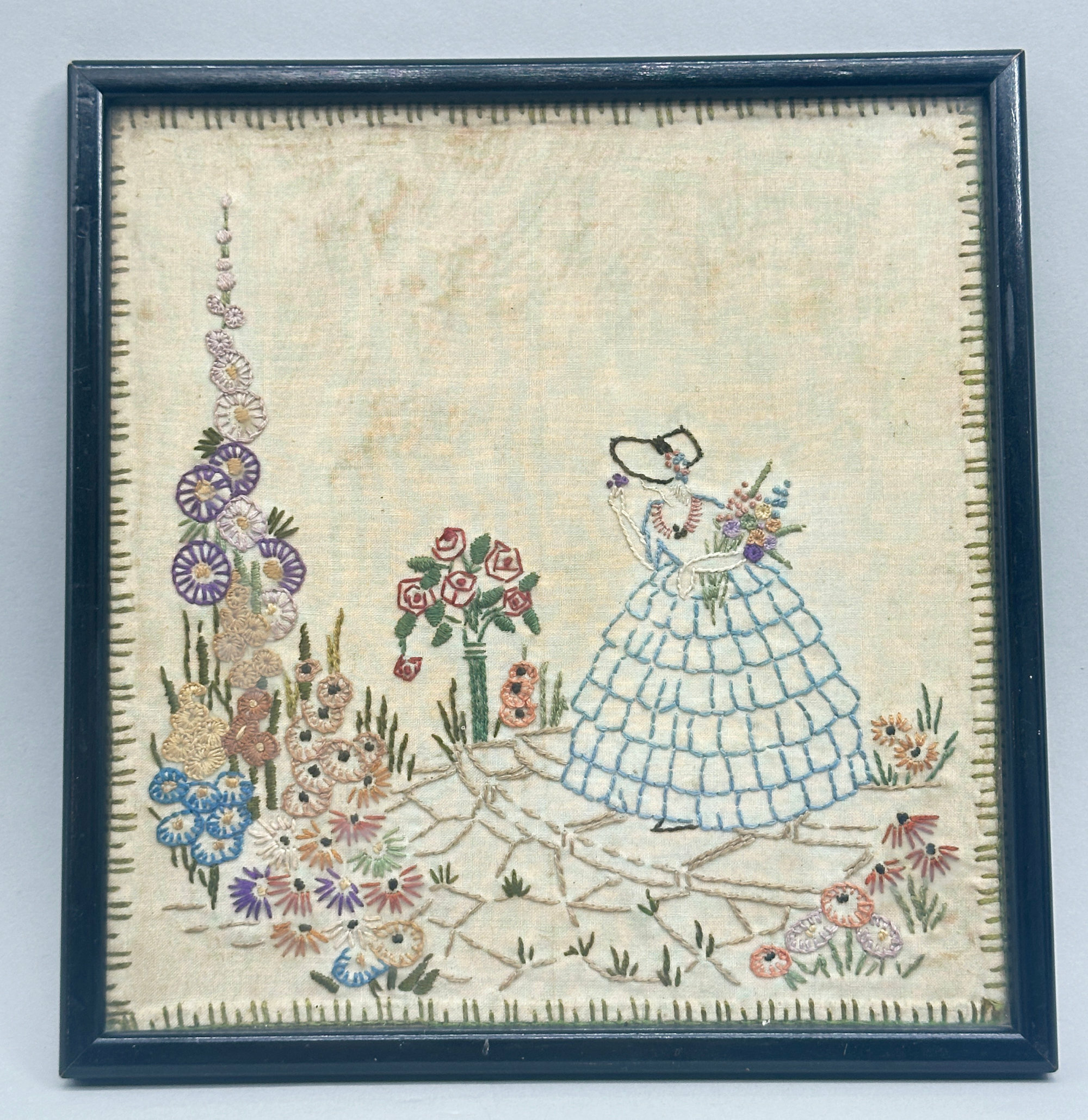
Vintage Needlepoint Picture of a lady dressed in a crinoline, framed, probably 1930s
Price: £25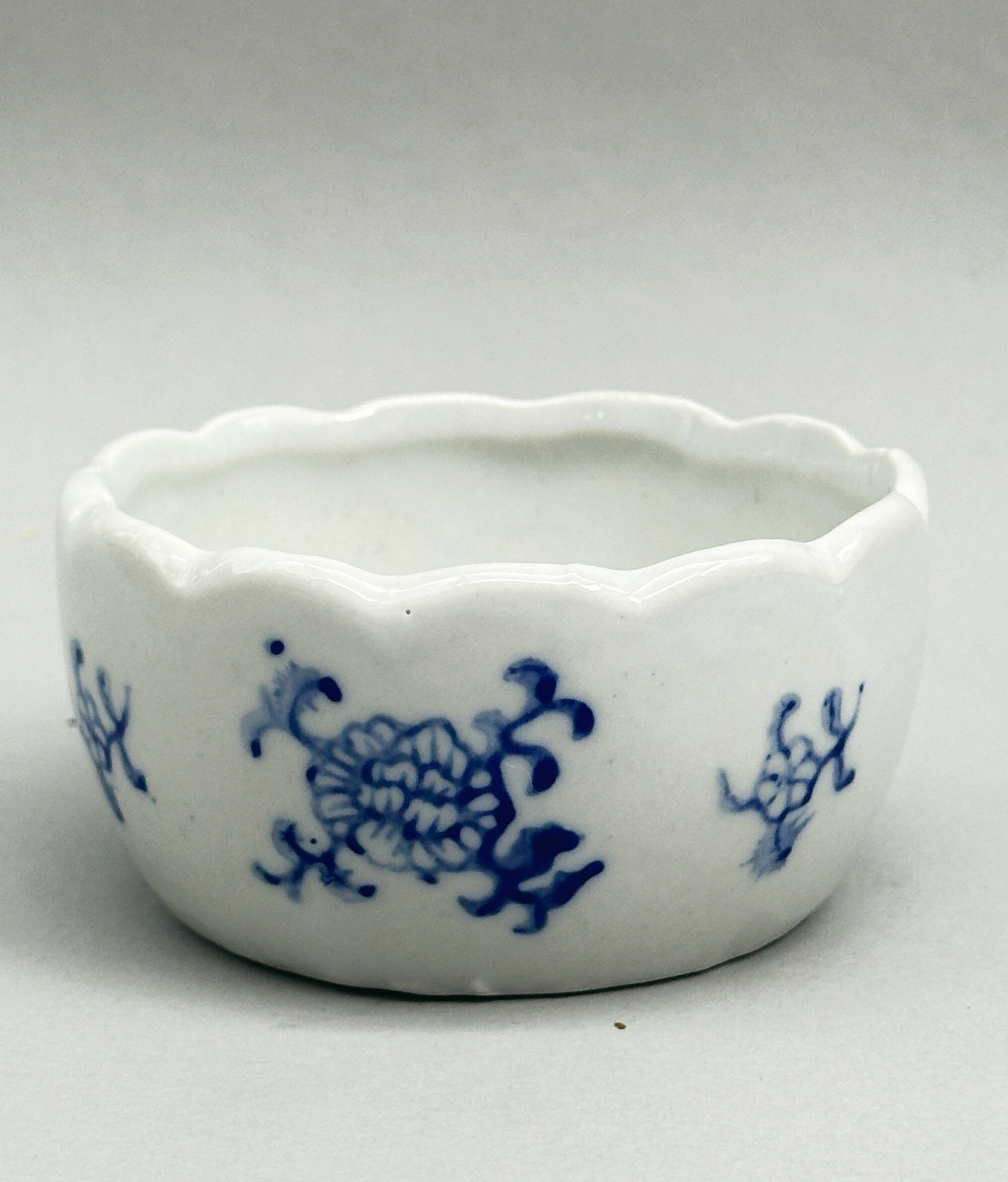
Japanese Arita Brushwasher, C20th
Price: £25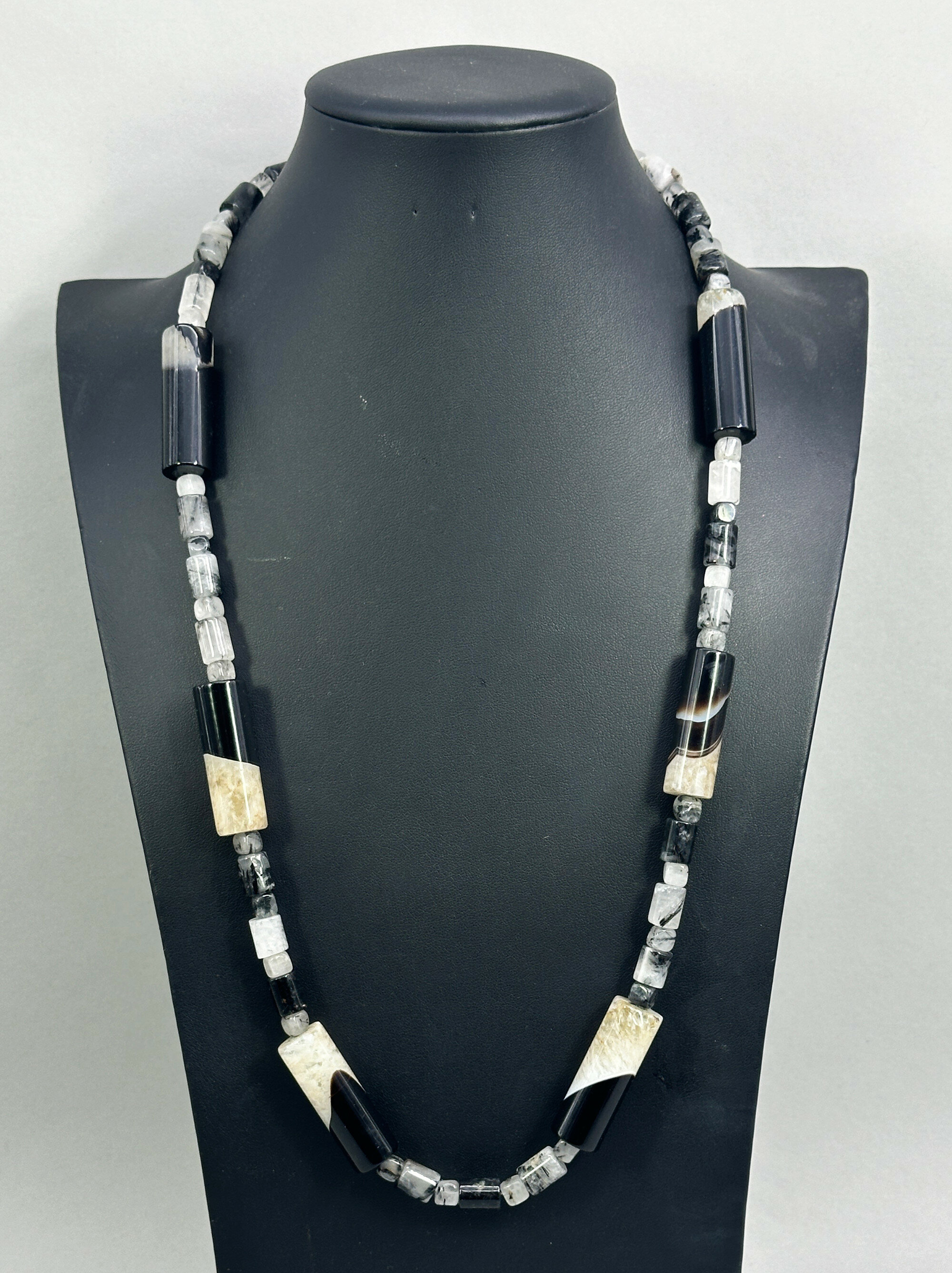
Monochrome tubular bead necklace, Modern
Price: £95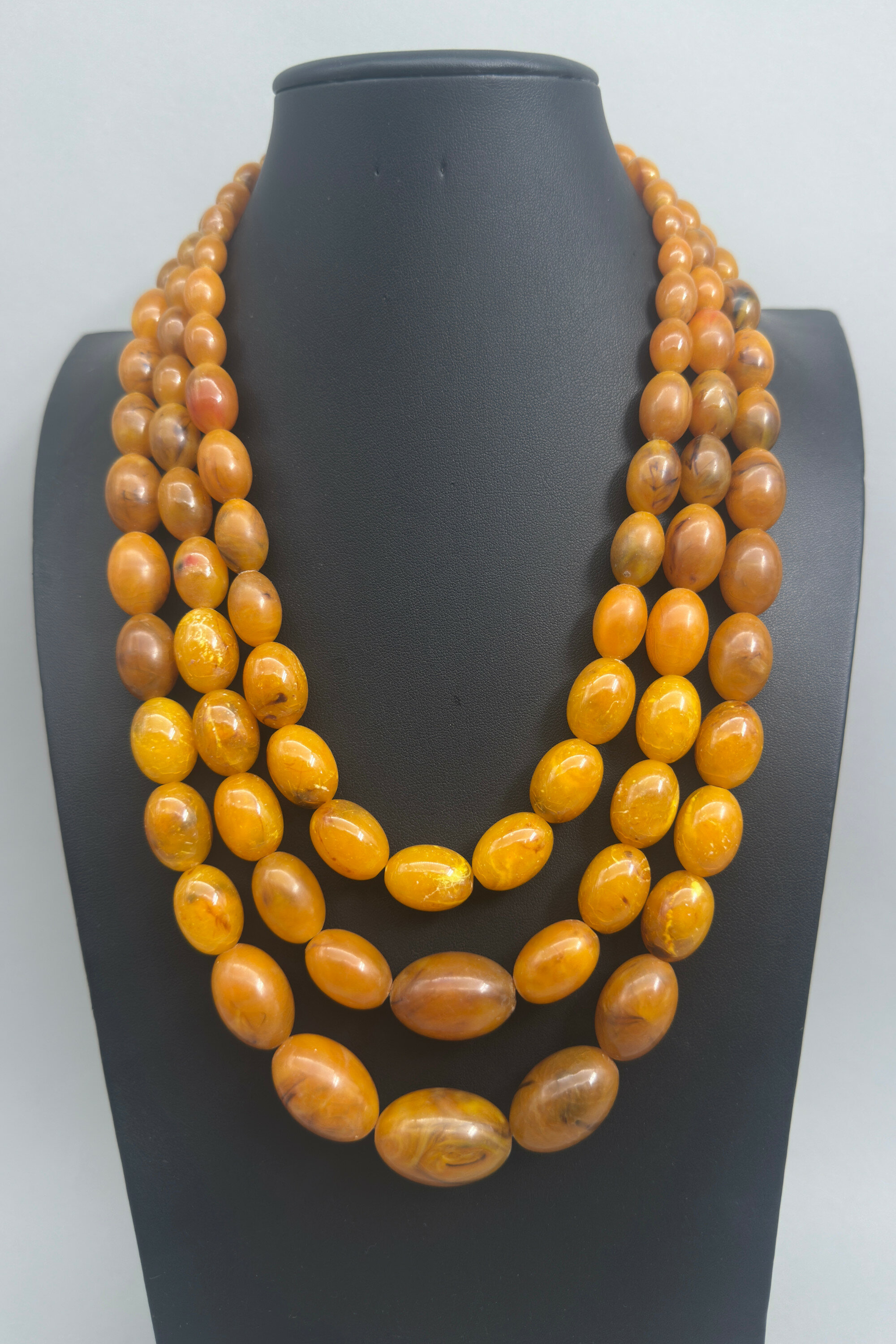
Triple strand of amber Bakelite beads, British 1930s
Price: £750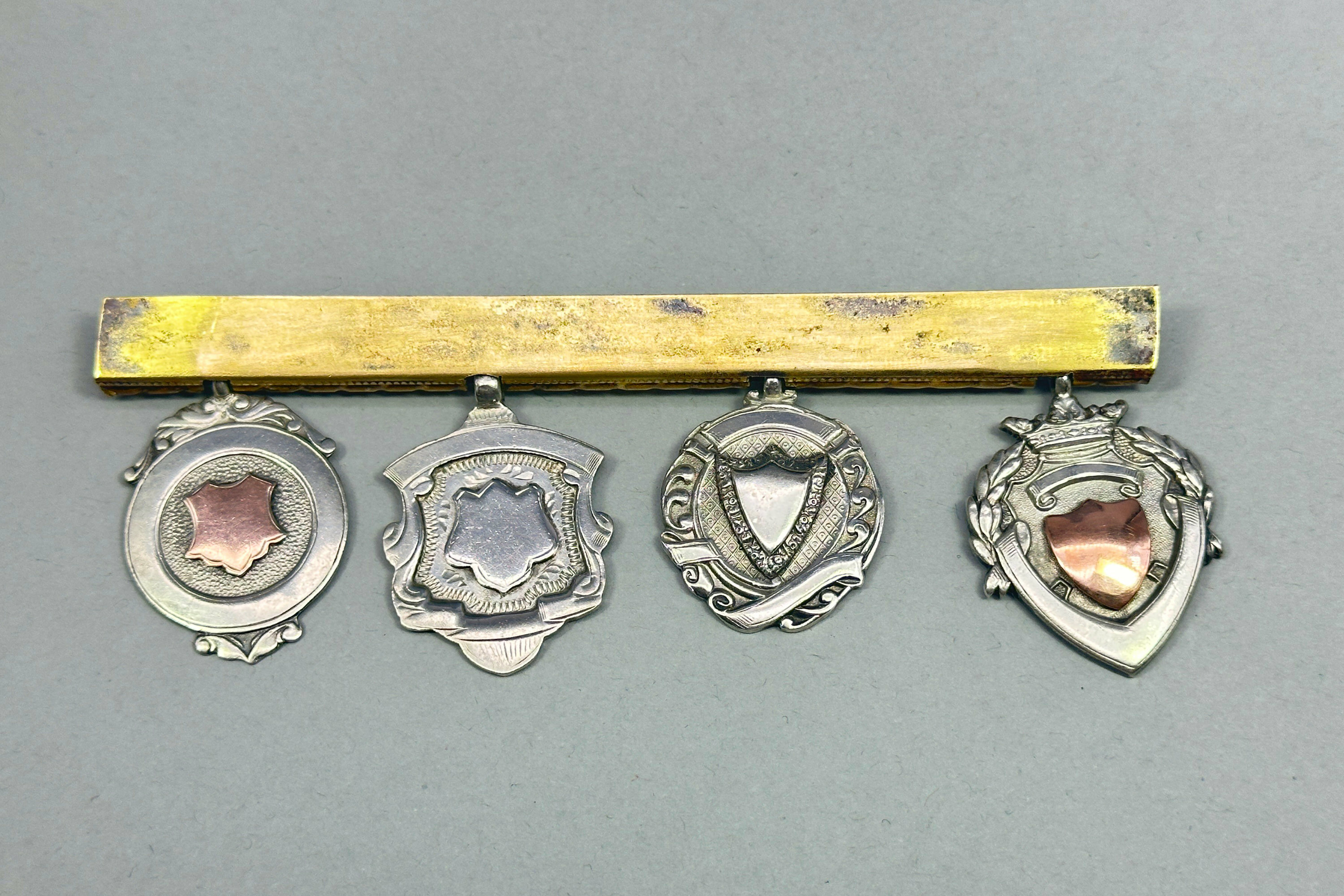
Gentlemans waistcoat pin set with four watch fobs 1930s
Price: £150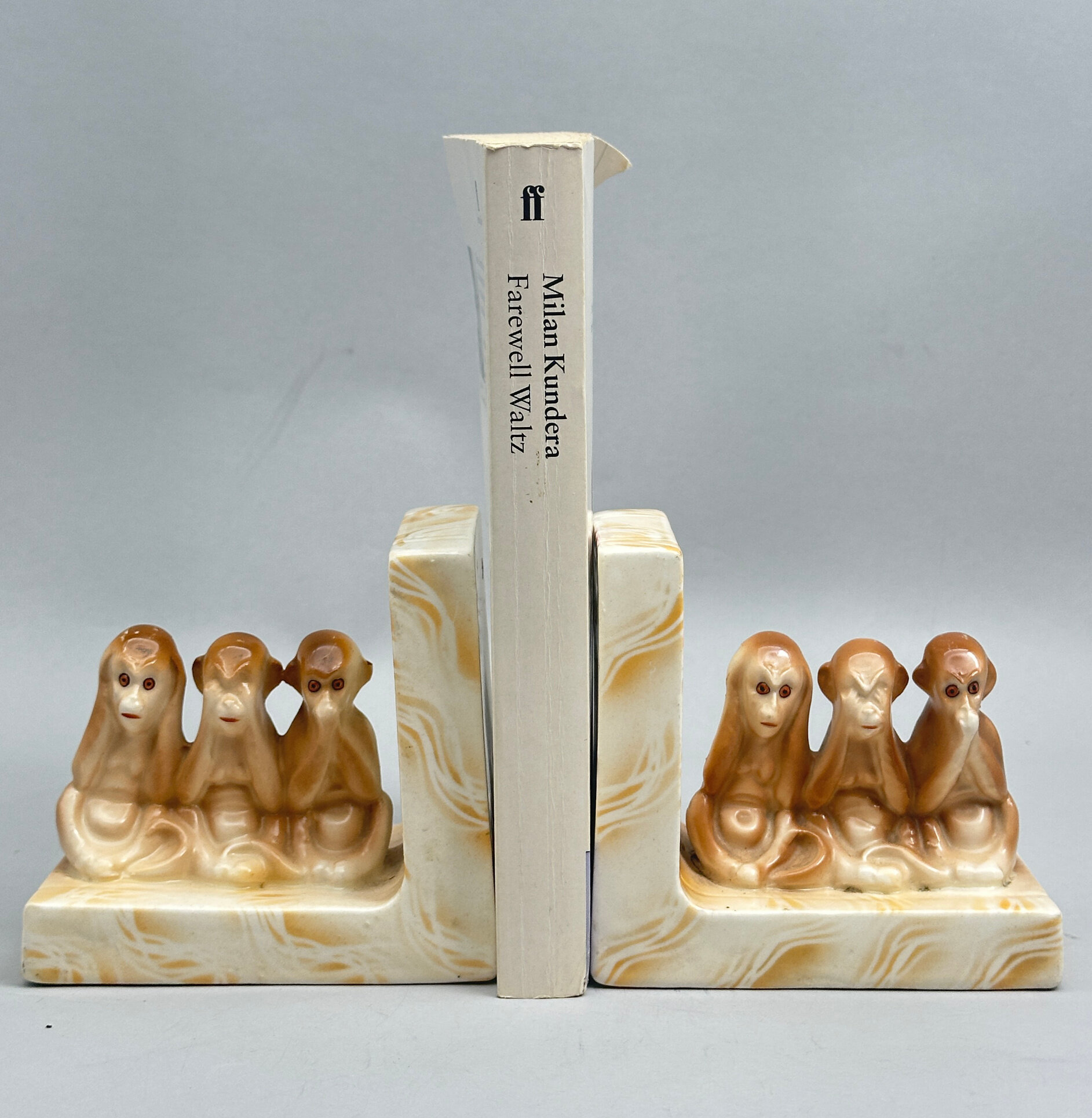
Pair of ceramic Bookends, the three wise monkeys, Czech second half C20th
Price: £30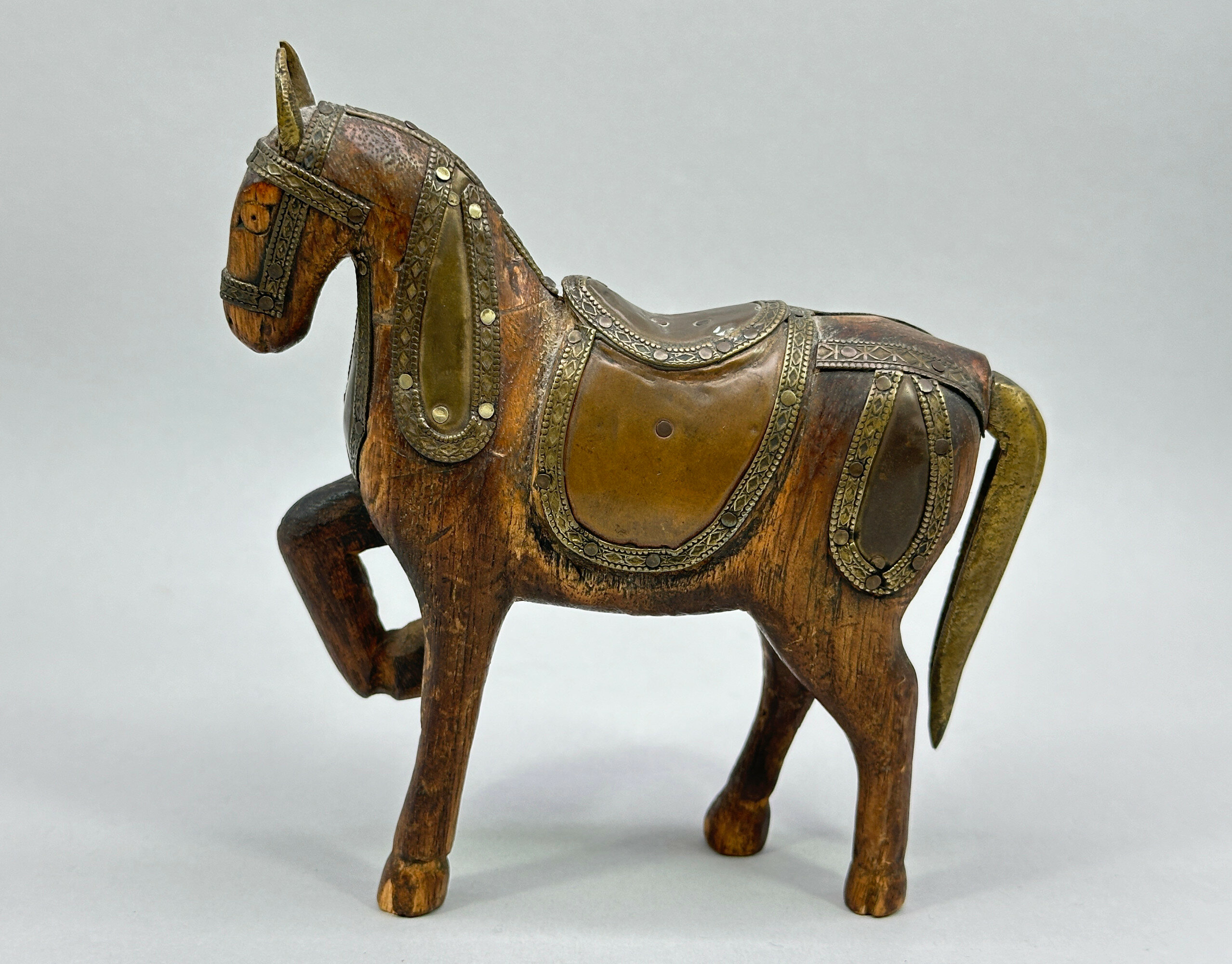
Indian wooden toy model of a Horse with metal fitments, early C20th
Price: £25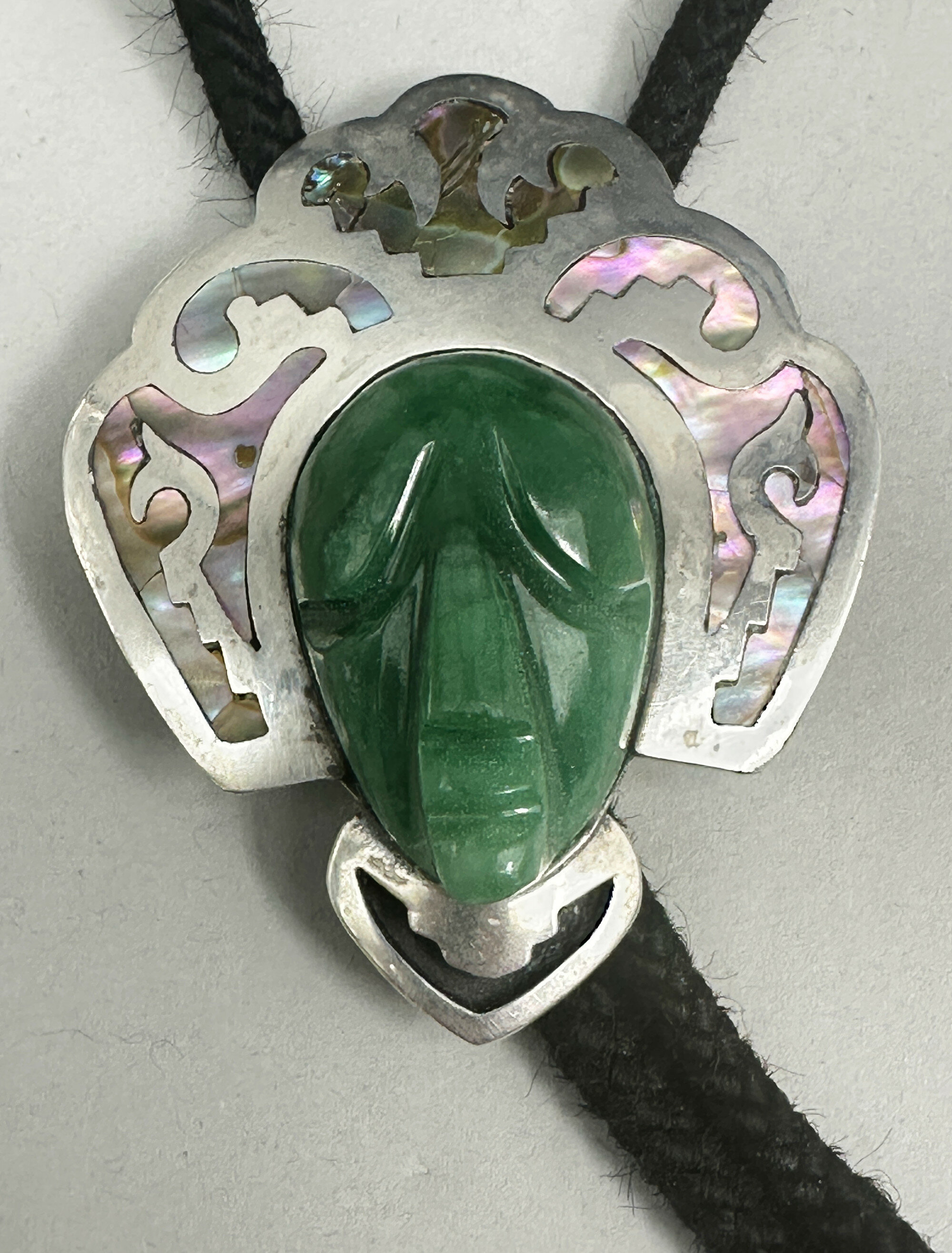
Mexican Silver Bolo Tie with Aztec mask Head, Taxco, c1950
Price: £125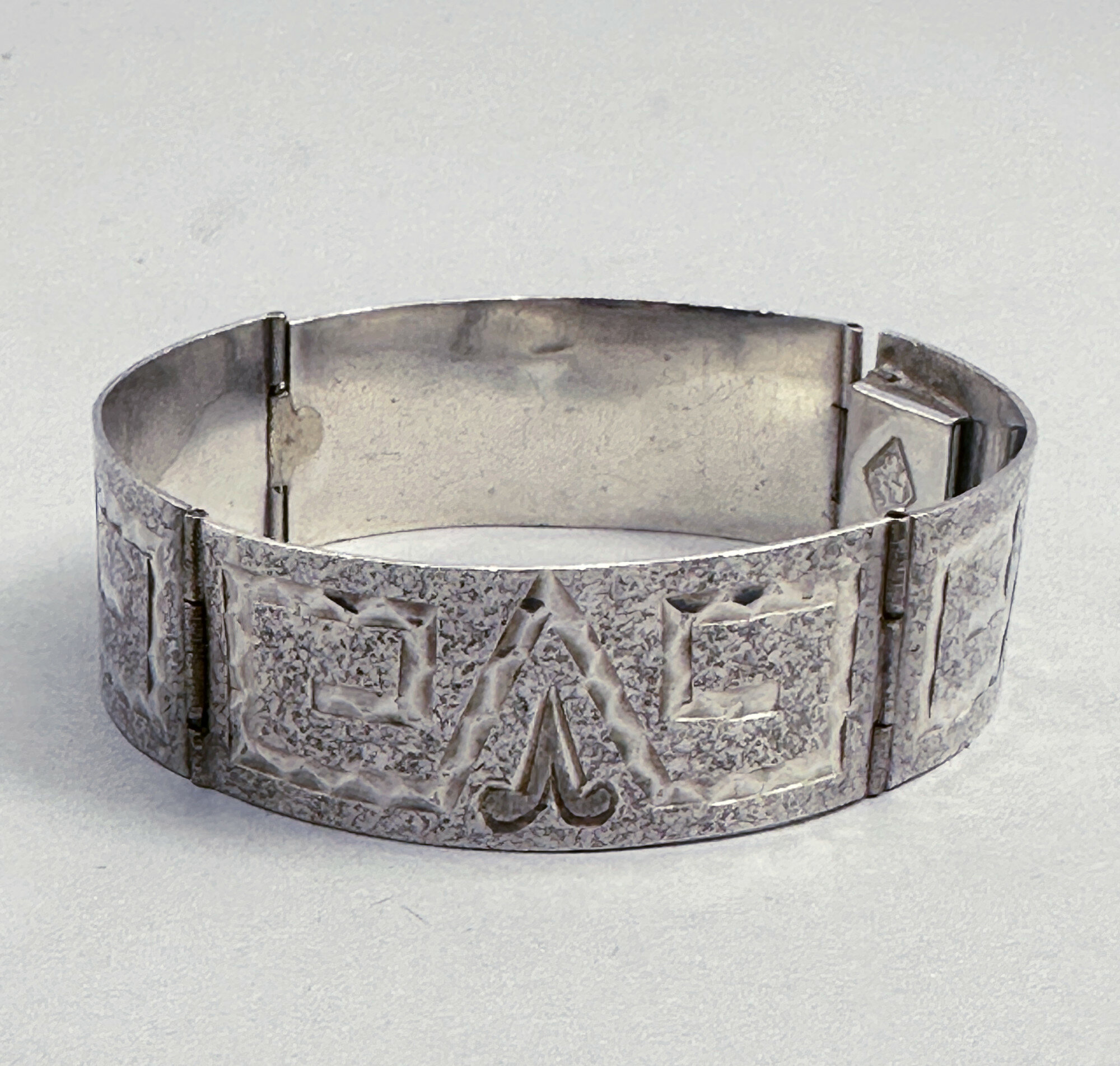
Mexican Silver Bracelet with Aztec Designs, Taxco, 1950s
Price: £65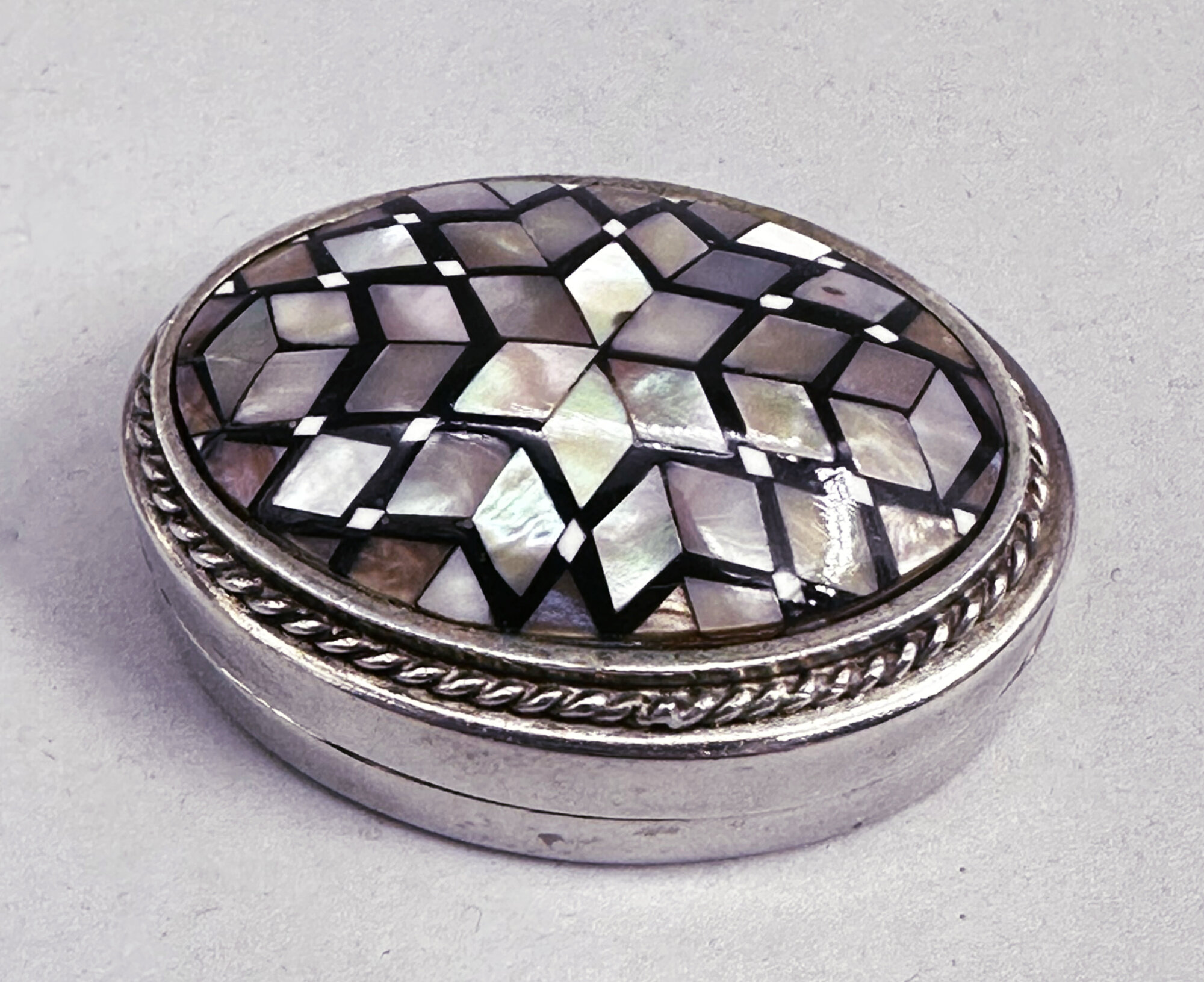
Egyptian Silver Pill Box with Mother of Pearl Inlay, marked, second half C20th
Price: £45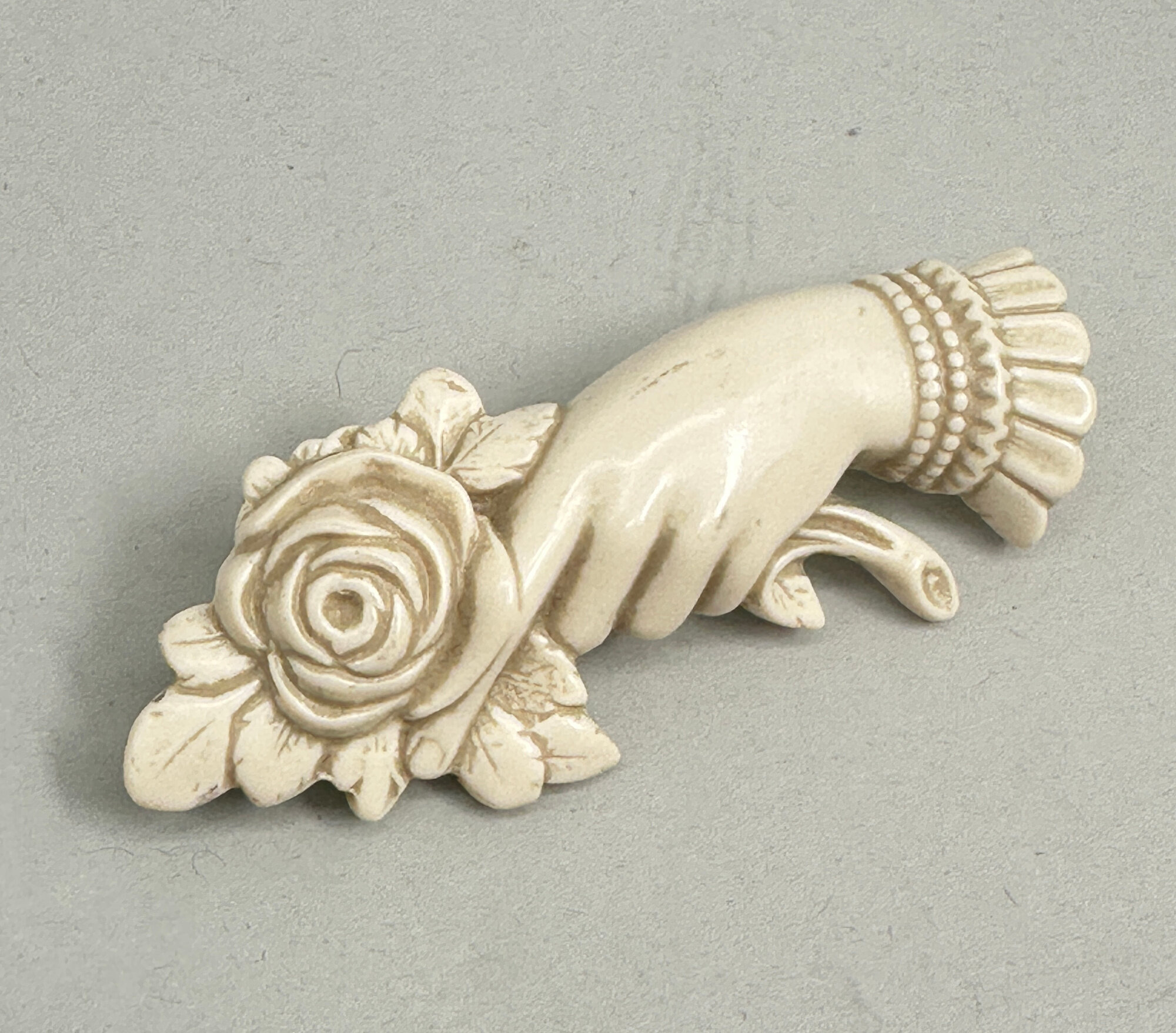
Bakelite Ivorine Mourning Brooch, British c1930
Price: £25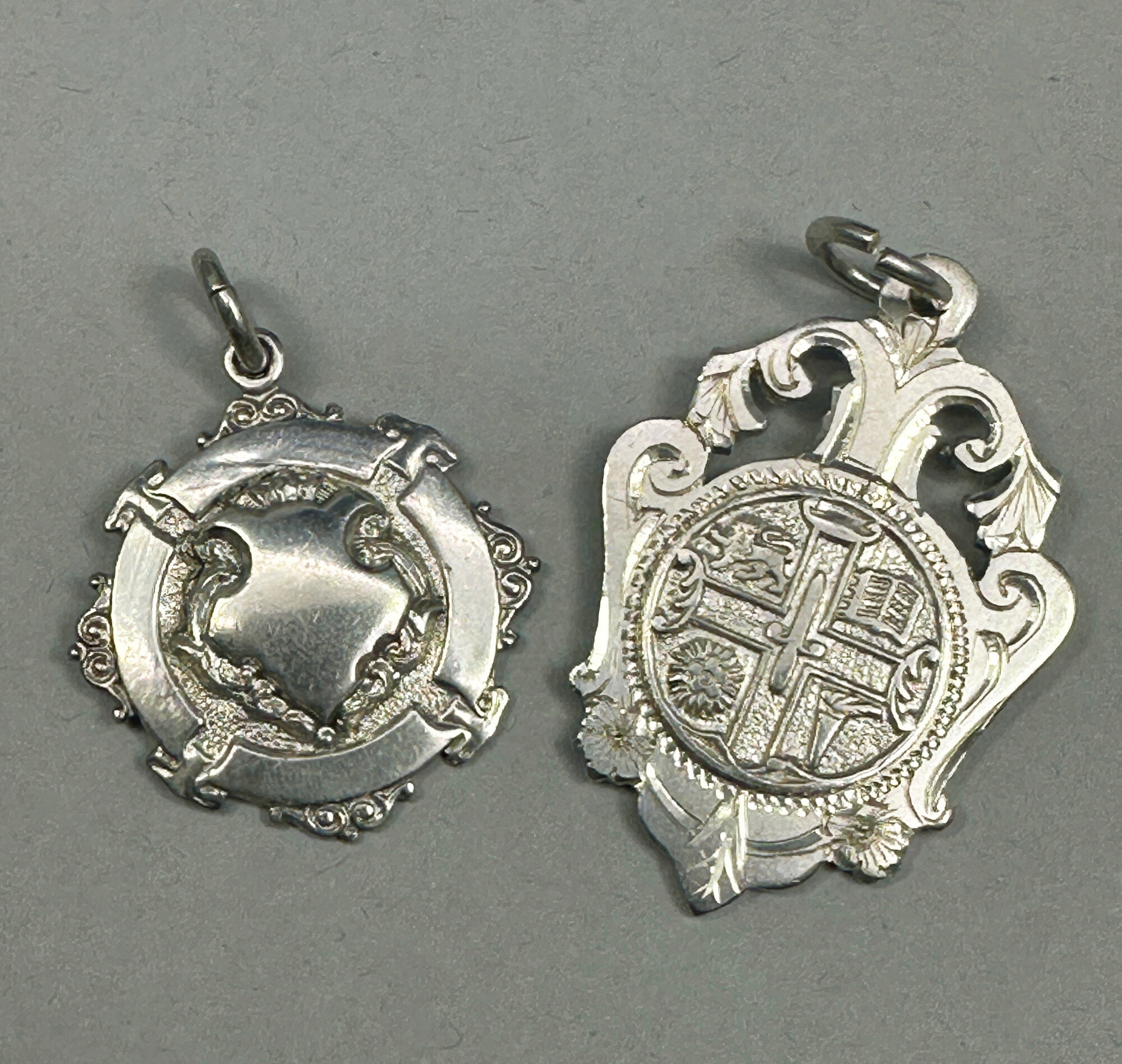
Two watch fobs 1912 and 1923
Price: £35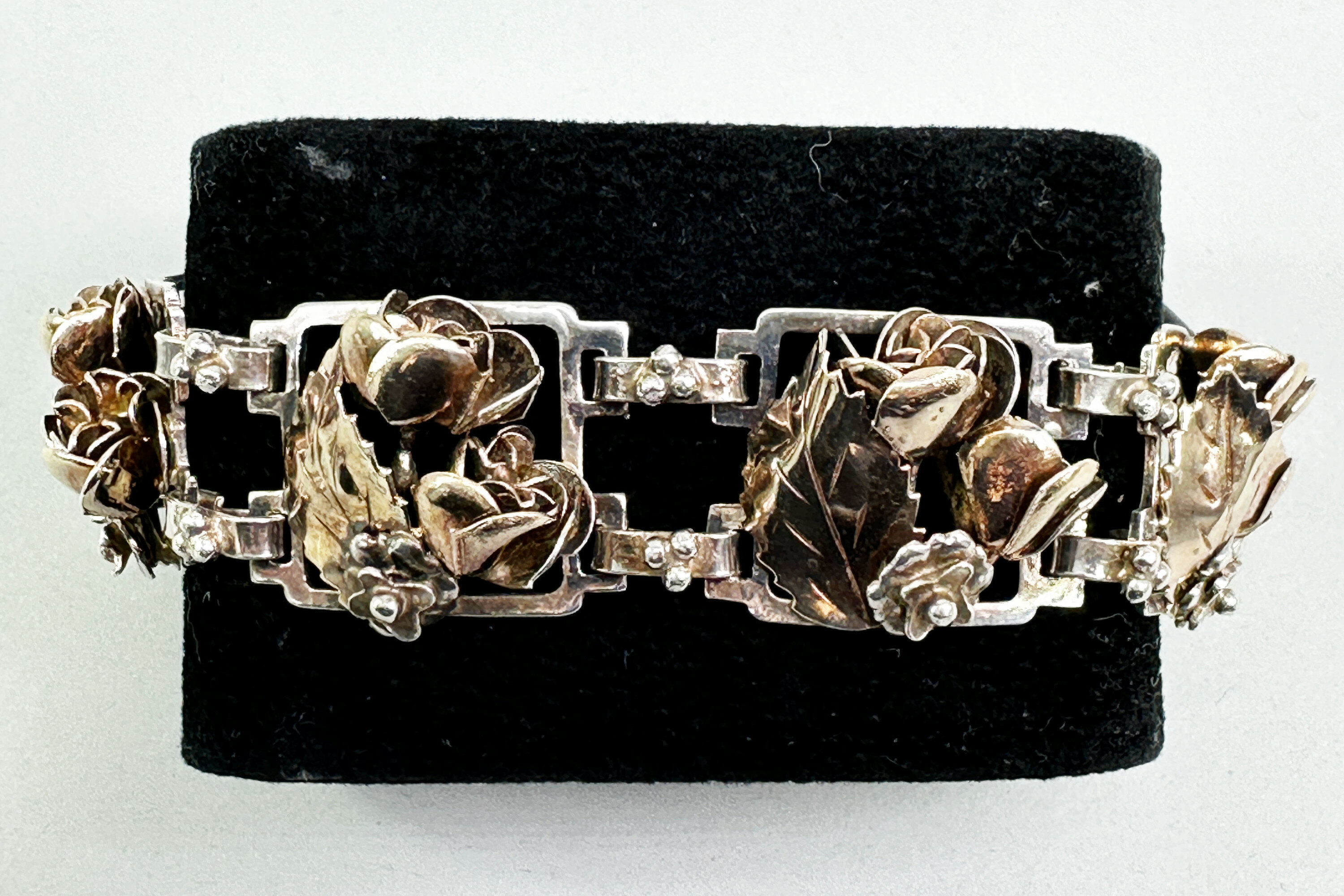
Vintage Hobe 14k gold plated sterling silver bracelet, 1940s
Price: £150Hobe was founded in 1887 by the French goldsmith Jacques Hobe as makers of fine jewellery. The costume jewellery division, Hobe Cie, was added 40 years later by his son, William Hobe, who brought the firm to America in 1927 and was commissioned by Flo Ziegfeld to design and manufacture jewellery for his Ziegfeld Follies costumes. By repute this is the origin of the expression costume jewellery. Production continued from the 1930s to the 1990s although there are a few later reproductions. While all their pieces were marked, dating is sometimes difficult but the floral design sterling silver pieces, one of their most collectible ranges now, date to the 1930s and 1940s and this bracelet, with the addition of the gold vermeil detail probably belongs to the latter period of this group. Its opulent and florid design is typical of Hobe’s work making it a stylish addition to a collection of their pieces. Other examples of their work can be seen elsewhere on this site and in this sale.
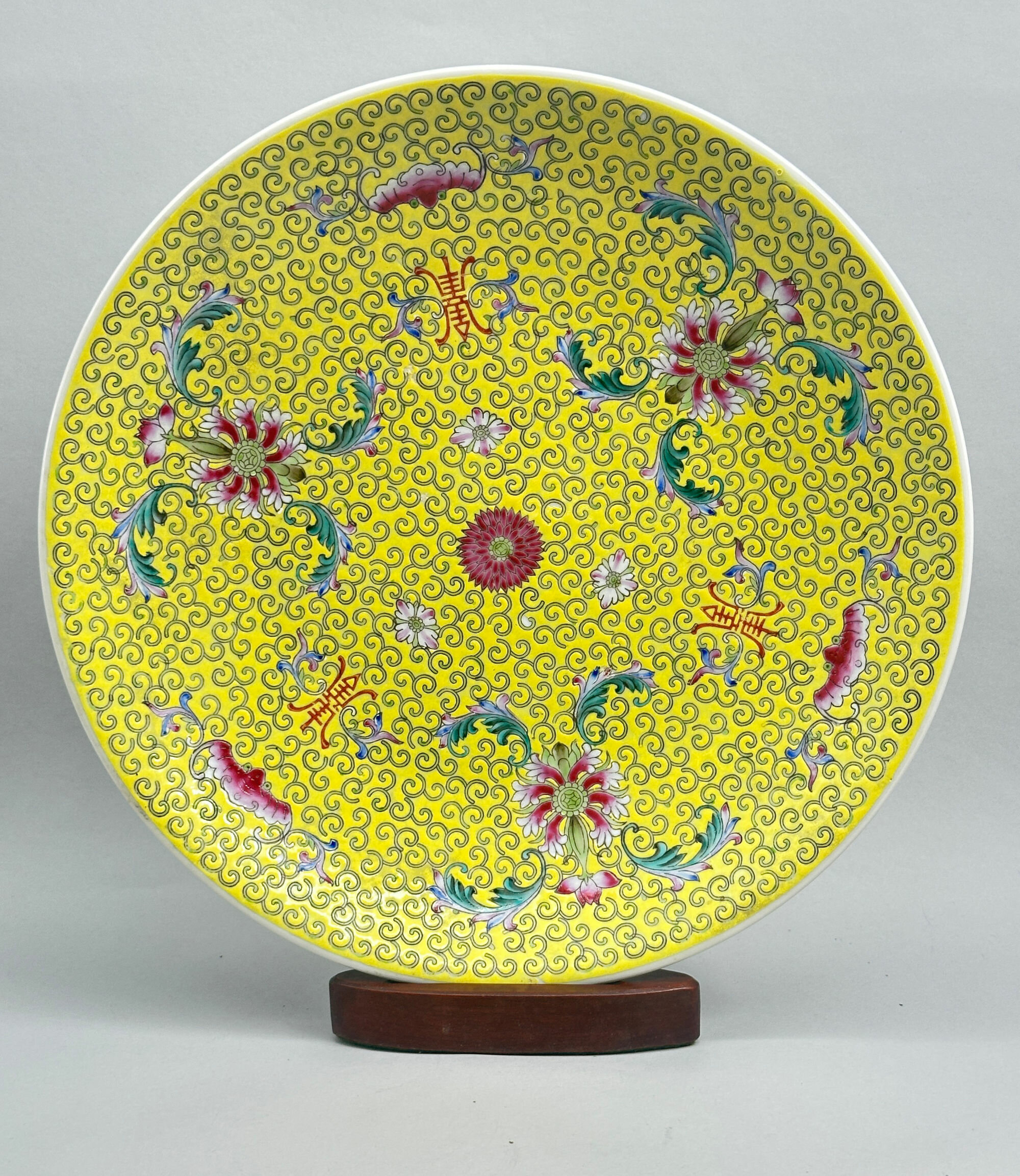
Chinese Yellow Ground Famille Rose Charger, 1950s/early 1960s
Price: £55This is a fine example of the porcelains made at Jingdezhen, for centuries the chief centre of ceramic production in China, in the early years of the People’s Republic of China (1949-). Soon after the communists took control, the kilns at Jingdezhen were organised into co-operatives, each with a number. Many of their pieces were marked and the form of the mark determines the date of production. The circular marks, as here, were the earliest allowing a dating of this charger to the 1950s or possibly the early 1960s. Some of these conglomerates, for the quality can vary, retained the skills of their predecessors and produced works of high quality. This is clearly seen here in the careful and precise enamelling and the general artistry of the design employing ‘imperial’ yellow with the symbolism of happiness (bats), longevity (shou symbols), friendship and a life of ease (chrysanthemum) and fruitfulness and offspring (lotus), all combining to produce a piece well worthy of its many predecessors.
Please note that the wood stand is for display purposes only and is not incuded with this lot.
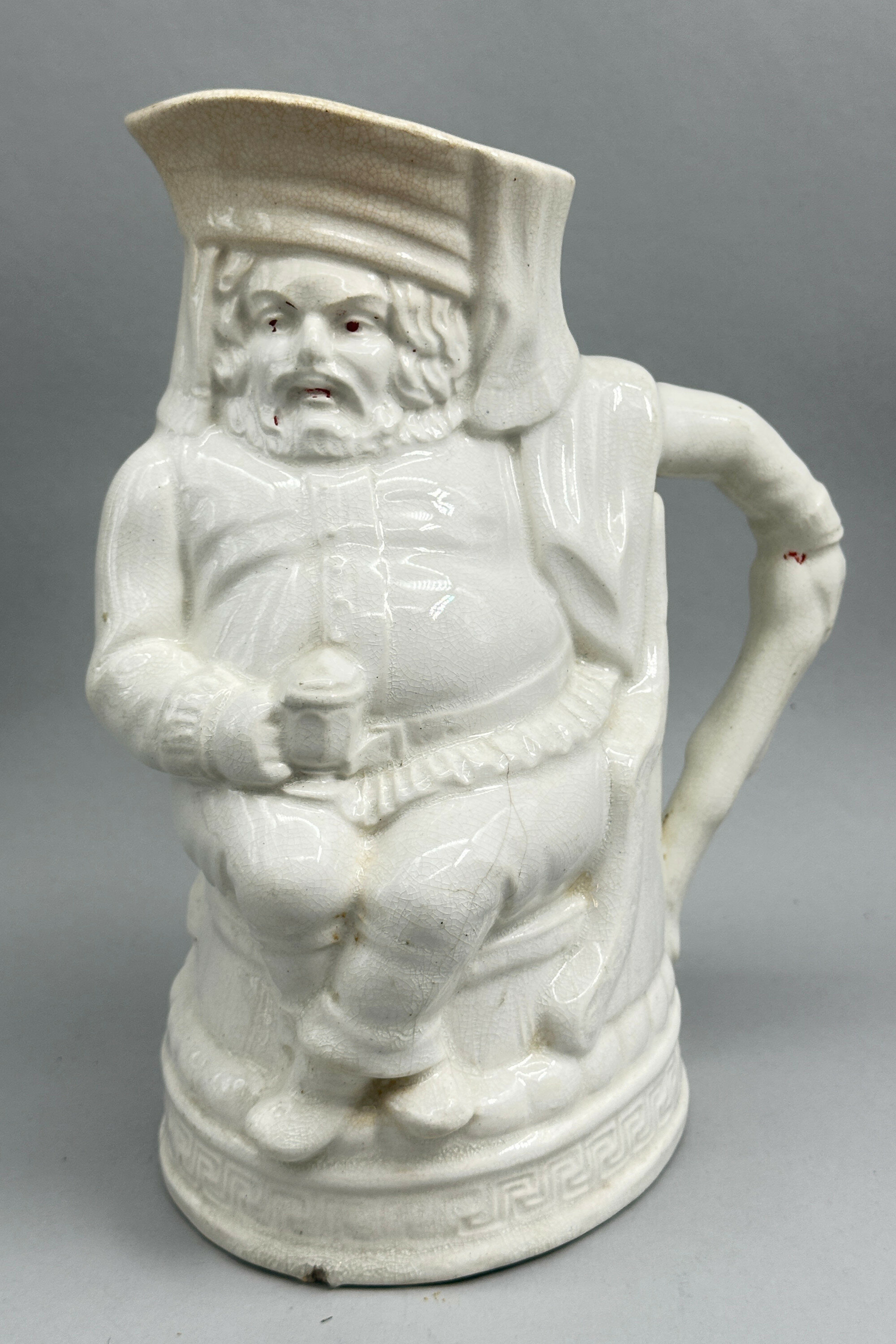
Earthenware Jug, Falstaff or Old King Cole, Furnival and Clark, mid C19th
Price: £75The design for this jug, usually termed ‘Falstaff’ but sometimes ‘Old King Cole’ is known to have been registered (Rd.No. 32601)by the firm Furnival and Clark on December 30th 1845. This was a very short lived partnership between Thomas Furnival and Richard Clark, based at the Stafford Street Pottery Works, Hanley, Staffordshire and which traded from 1844 to 1846 apparently producing just this one model, albeit in a variety of colours. Thomas Furnival had been involved in other firms before this brief venture and was to be involved in others afterwards. The dating of these mugs is usually attributed to the short period when Furnival and Clark traded but it is quite possible that more pieces were produced afterwards by Furnival himself. The paste and finish of this piece, though, which is not marked, certainly suggest a mid nineteenth century dating. In general, the model is quite rare. Some examples were fitted with a Britannia metal or pewter lid but this was never integral to the piece. This striking composition, then, is a rare and desirable item collectors with an interest in British Staffordshire wares.
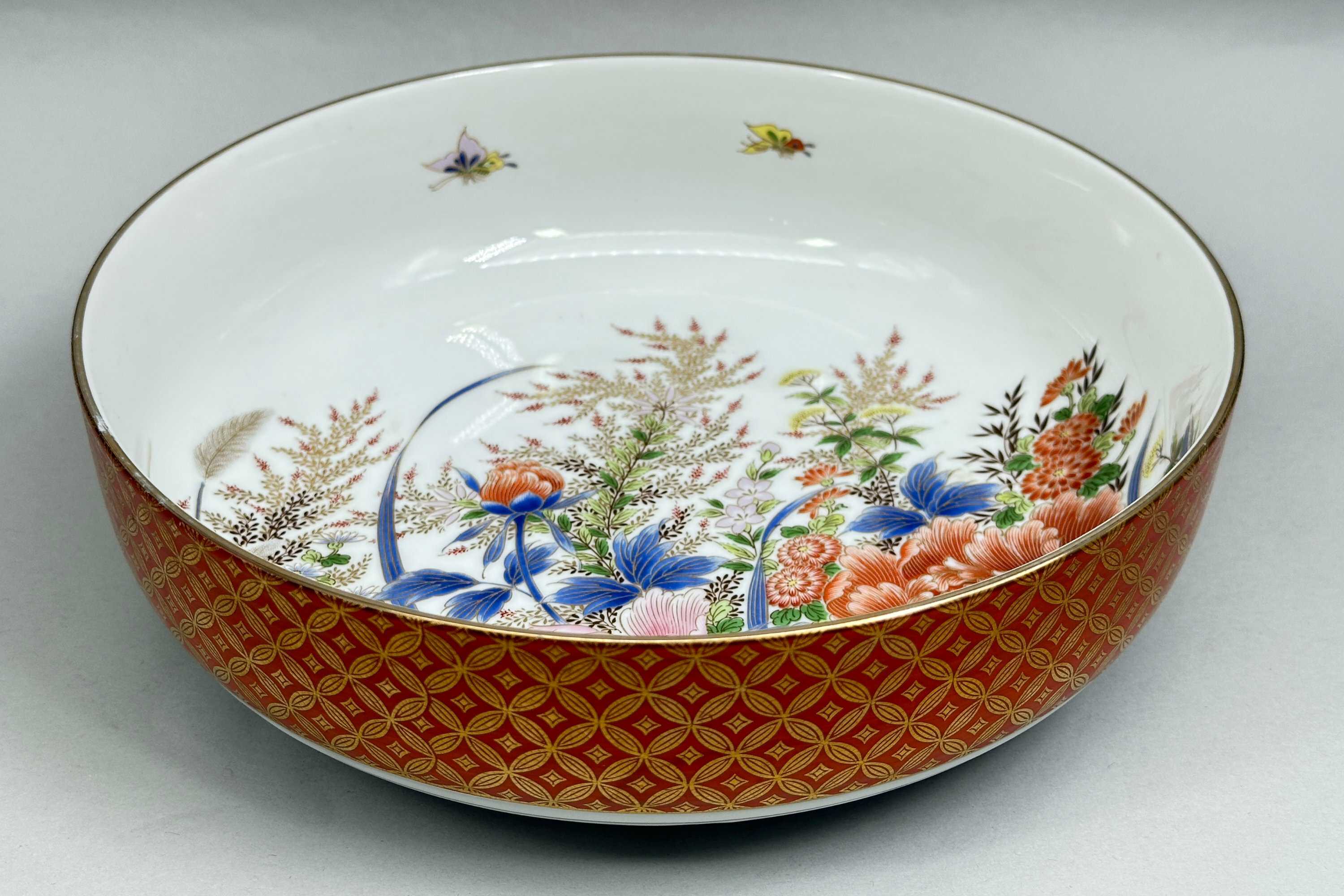
Japanese Polychrome Bowl, Shibata Toki ware, late c20th
Price: £45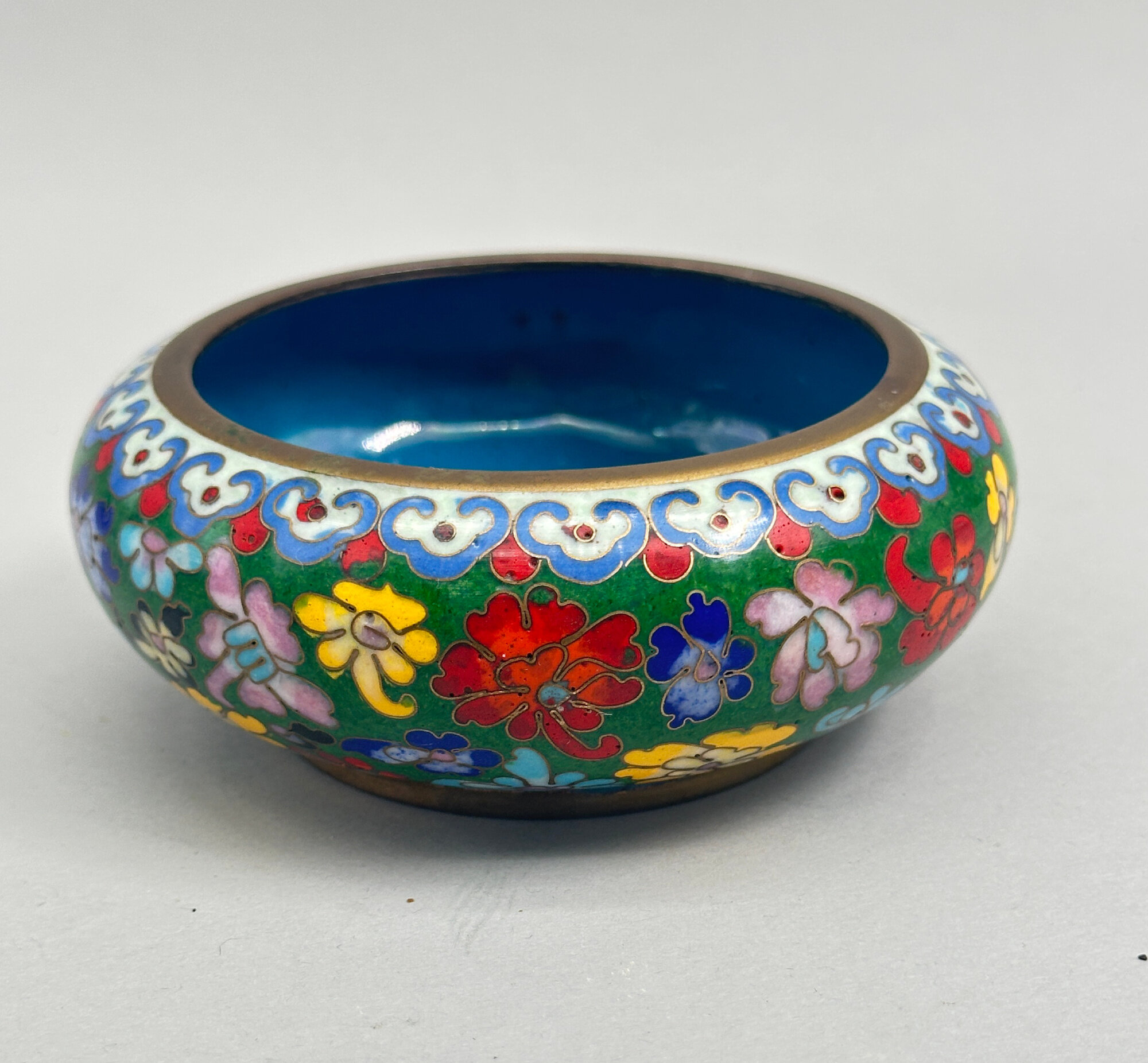
Chinese Cloisonne Shallow Bowl, C19th
Price: £45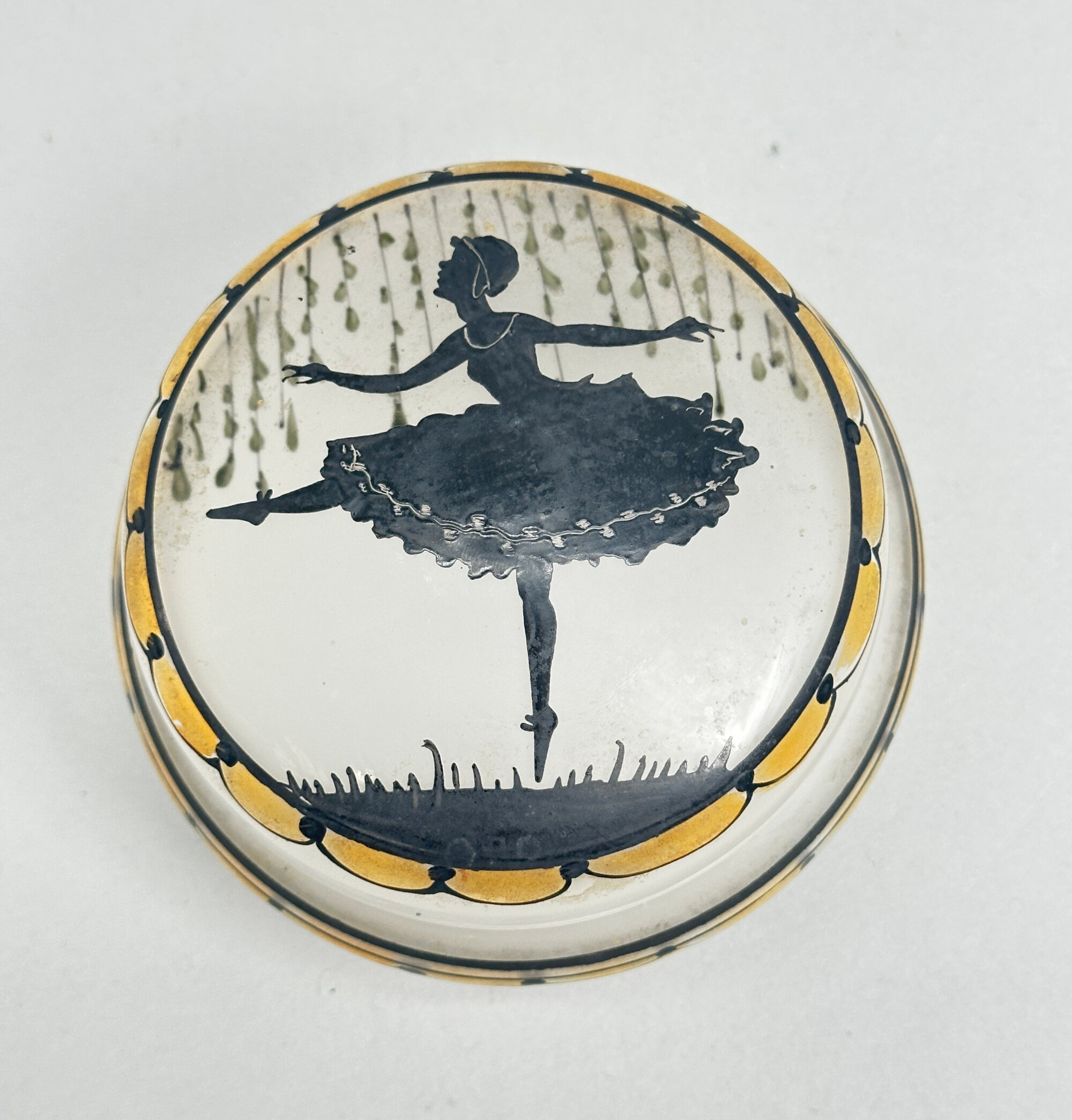
Art Deco style Glass Box and Cover decorated with a dancing Ballerina, mid C20th
Price: £35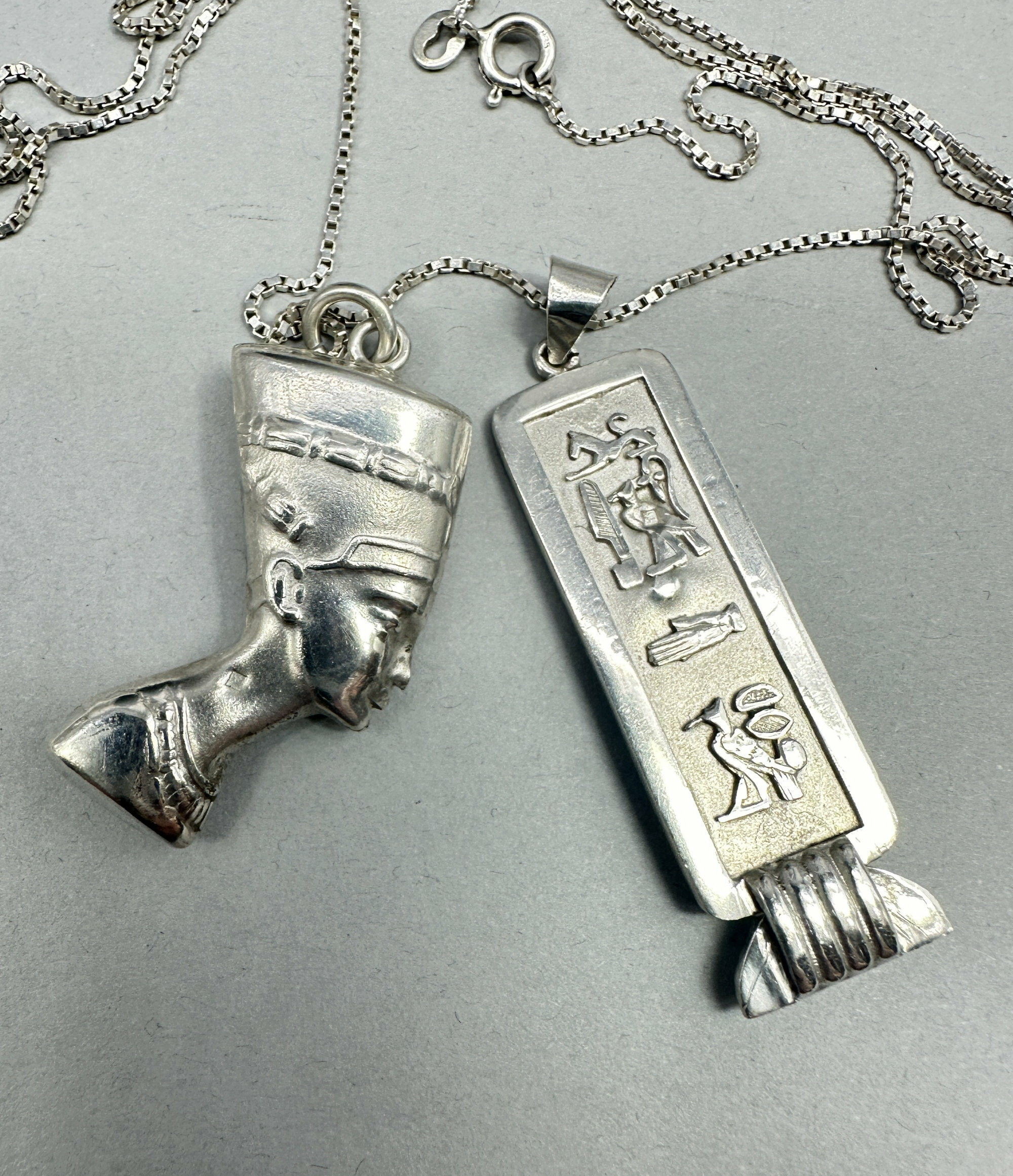
Egyptian Nefertiti and Talisman necklace on long chain c1970
Price: £95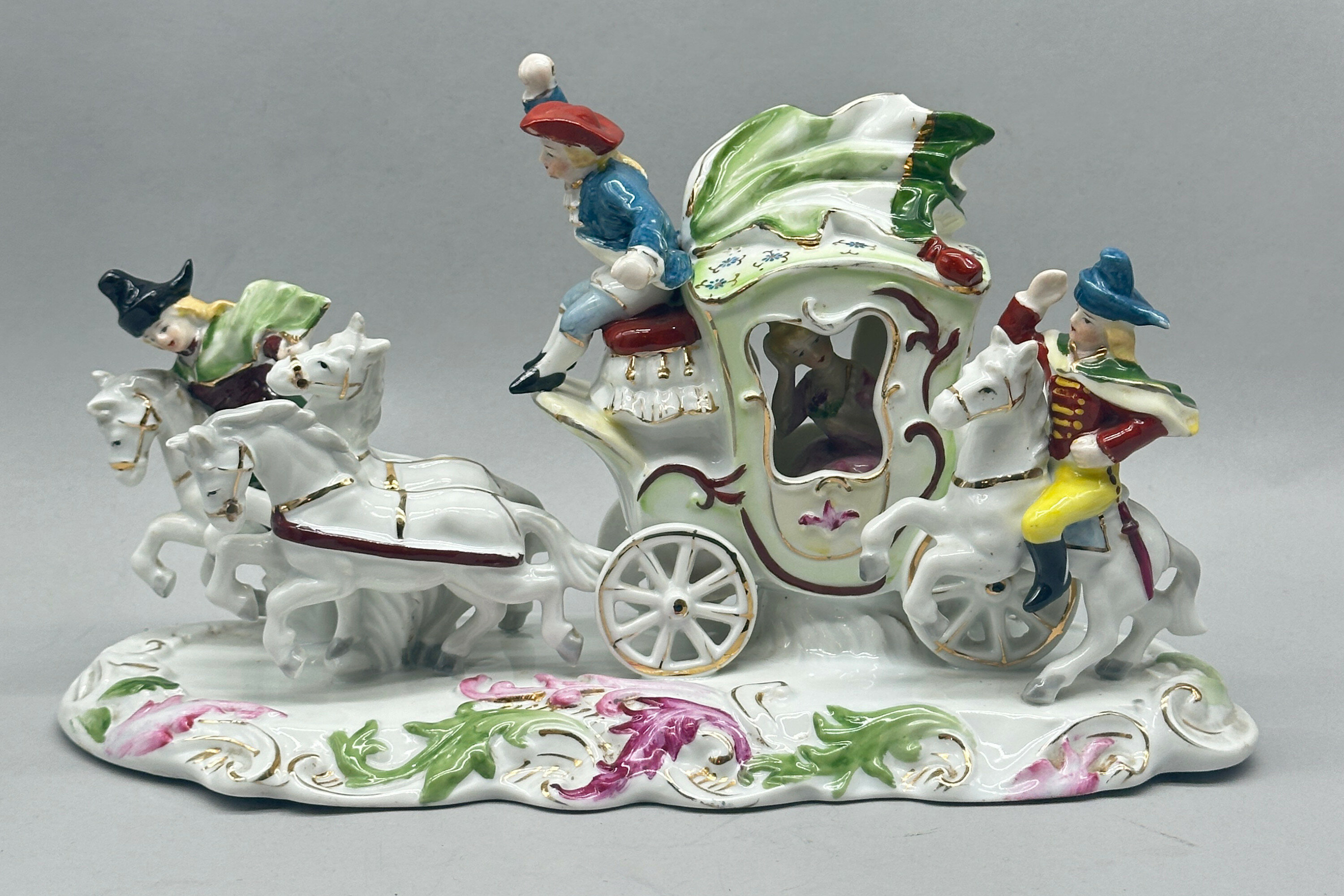
Dresden style model of a Coach and Horses, probably German early C20th
Price: £75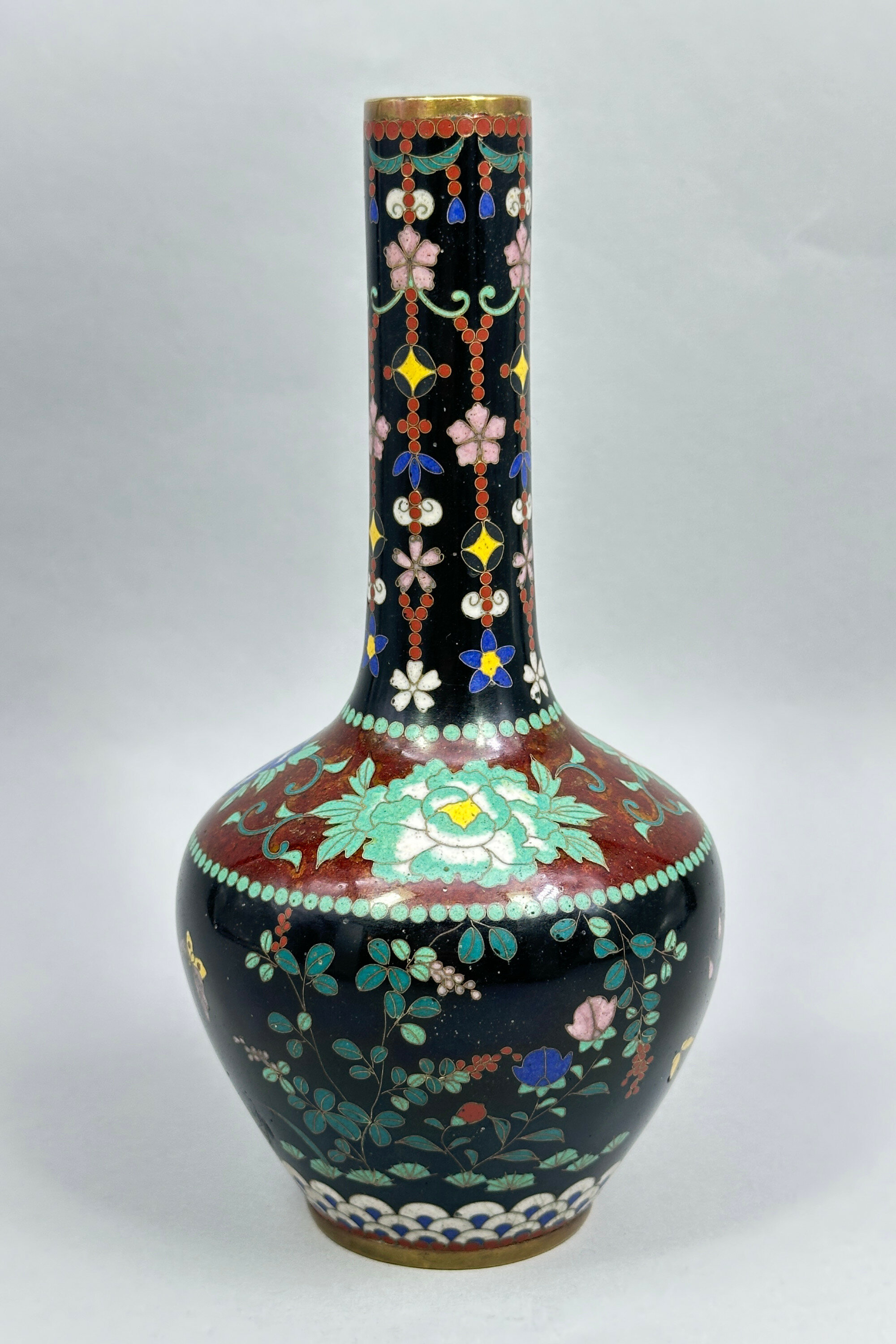
Fine quality Japanese Cloisonne bottle form Vase with black ground, late C19th
Price: £45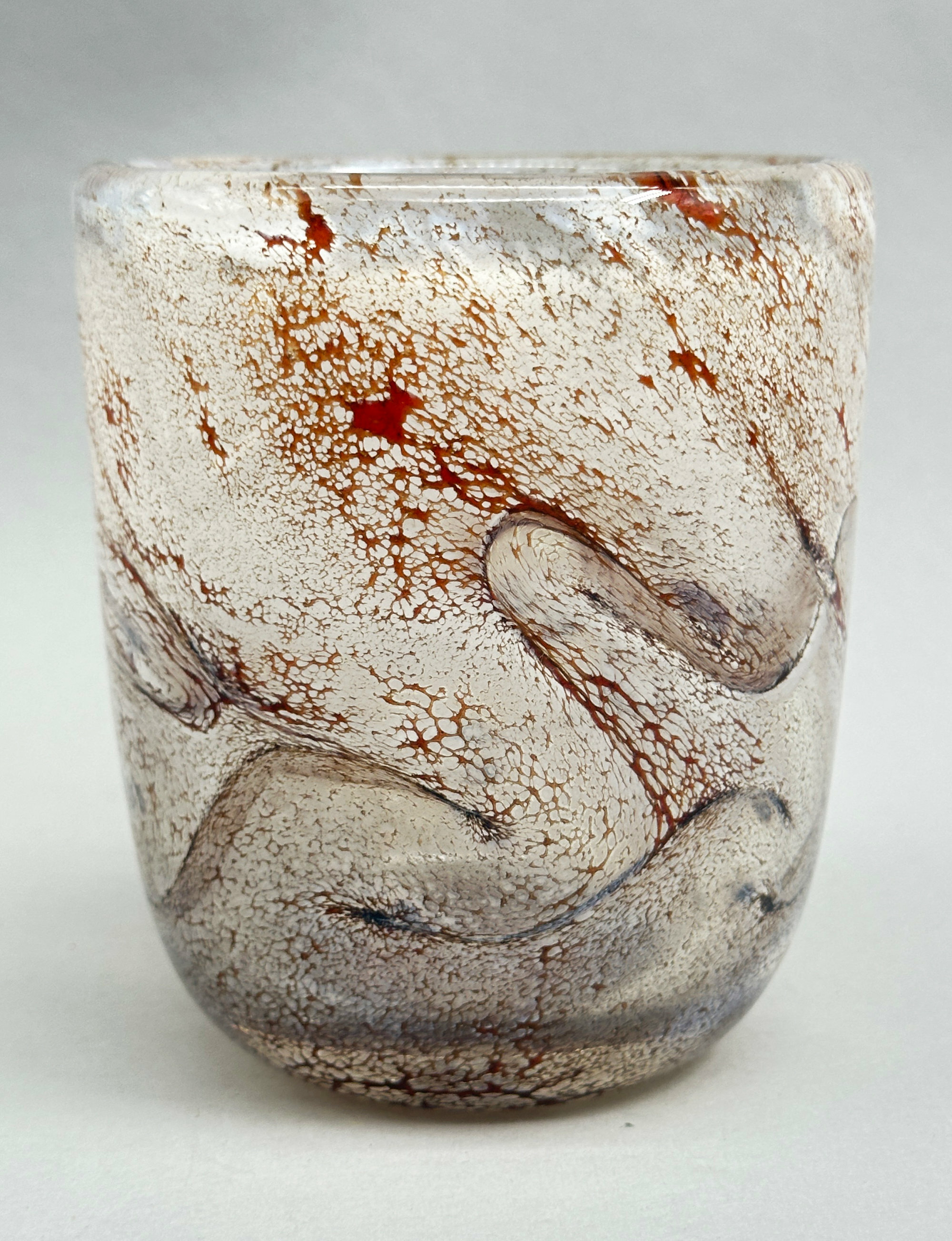
Uredale Glass Vase, late C20th/early C21st
Price: £55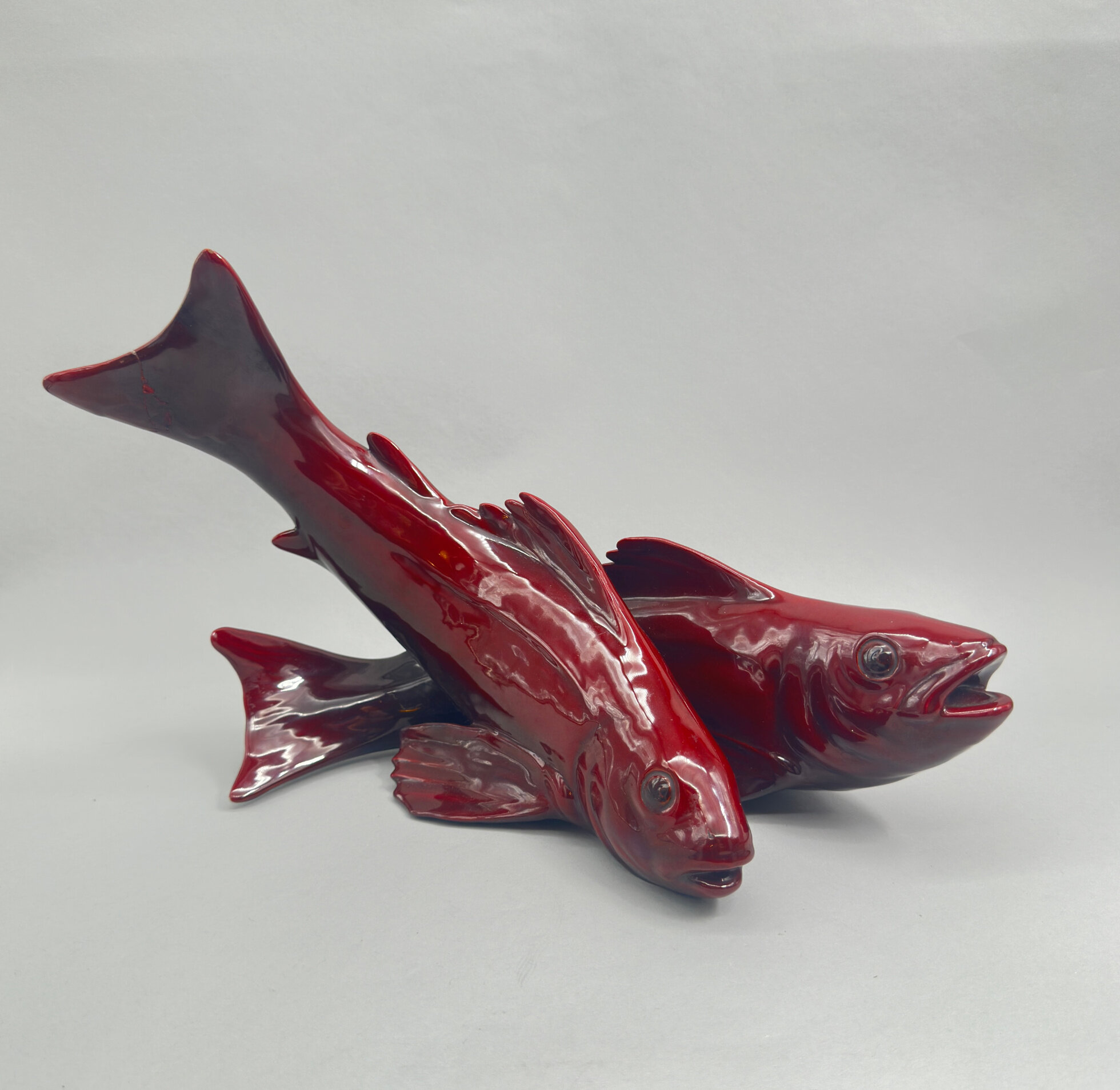
An Art Deco ceramic group of two Fish by Guido Cacciapuoti, signed, 1930s
Price: £150Guido Cacciapuoti was a celebrated Italian ceramicist. Born in Naples in 1892 and from a family with a tradition in the creation of majolica pottery, Guido exhibited his work widely in the 1920s and finally, in collaboration with his brother, Mario, and Angelo Bignami as the administrative and commercial director, he founded the factory ‘Gres d'Arte Cacciapuoti Bignami & C.' in Milan in 1927. Mario unfortunately died three years later leaving Guido to carry on on his own until his death in 1953.
In the 1930s, Guido’s workshop became famous for the production of ceramic animal sculptures with fish being a particular speciality. More commonly seen are groups of John Dory, again with a red glaze, but the smoother lines here and the particularly intense colour reflect more closely the contemporary Art Deco style. Sought after in their own time, with patrons such as the King of Italy and Mussolini, Guido’s works are highly collectible today and this group would make a striking addition to a collection of Art Deco ceramics with considerable decorative appeal.
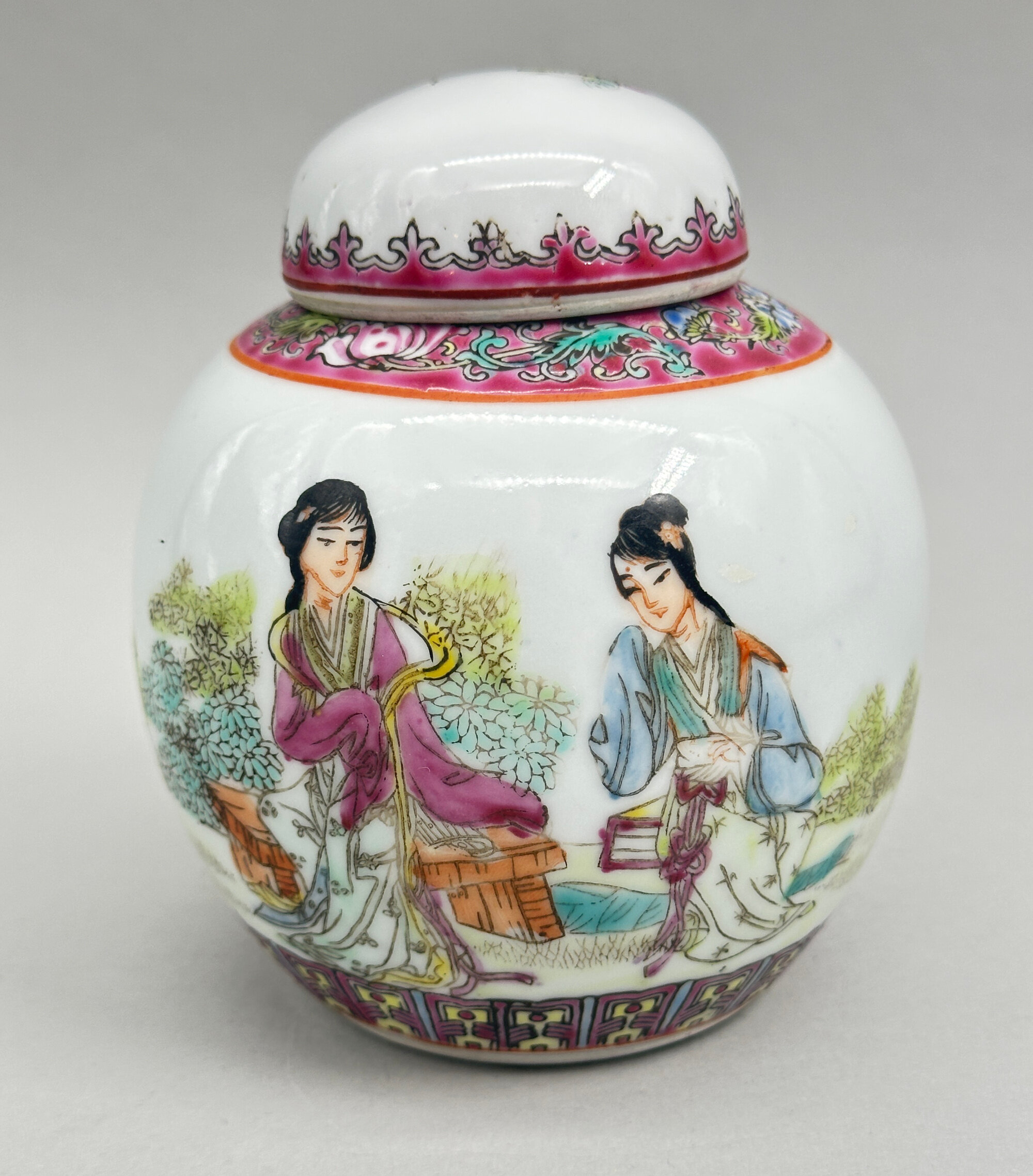
Chinese Republican Style small Famille Rose Ginger Jar and Cover, late c20th
Price: £20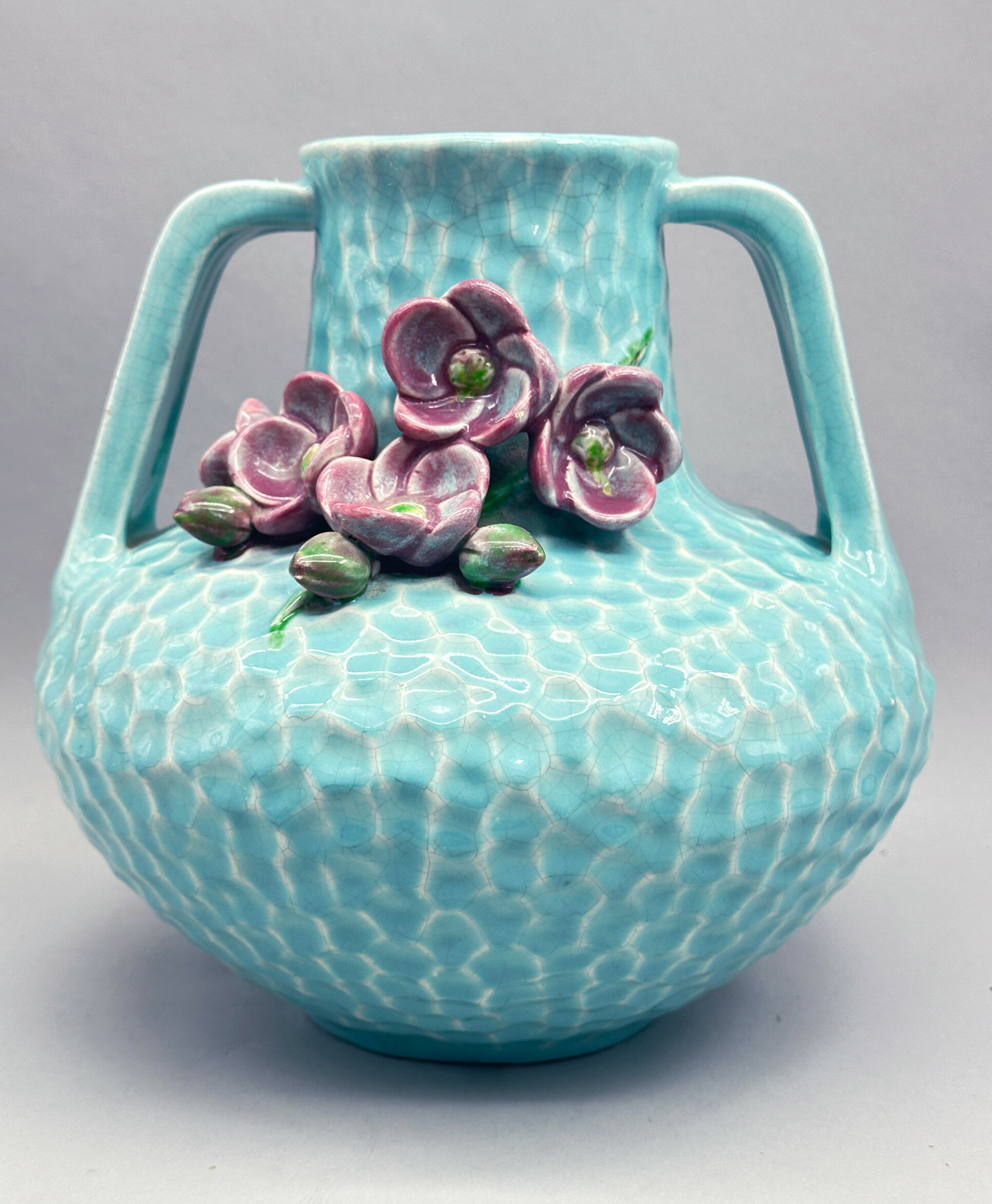
Art Nouveau style turquoise glazed Urn shape Vase, Bretby ware, early C20th
Price: £75The firm Bretby was the result of an amalgamation between Henry Tooth and William Ault who formed a partnership in 1883. Both had previously worked at the Linthorpe pottery established by Christopher Dresser in 1879 and retained a comnnection with the celebrated designer even after striking out on their own. Success came early and the firm won a gold award in the Crystal Palace Exhibition of 1884, patenting their trademark with its sunburst design above the name Bretby in the same year. Ault left the partnership in 1887 to set up his own business under his own name but Henry Tooth continued to oversee production until his death in 1918, the business then remaining under the control of the Tooth family until it was sold in 1933. Production continued, though, well into the twentieth century until the firm closed around in the late 1990s.
This piece is typical of their earlier work with a nod to both the art nouveau style and Dresser himself, particularly in the shape of the handles. ‘Hammered’ decoration was typical of the Arts and Crafts movement popular at the time and the applied floral decoration has some parallels with Japanese pieces again much in vogue at that period. Similar pieces are known with the same shape and pattern number (1742) which seems itself also to indicate an early twentieth century dating, but the applied decoration seen here is unusual.
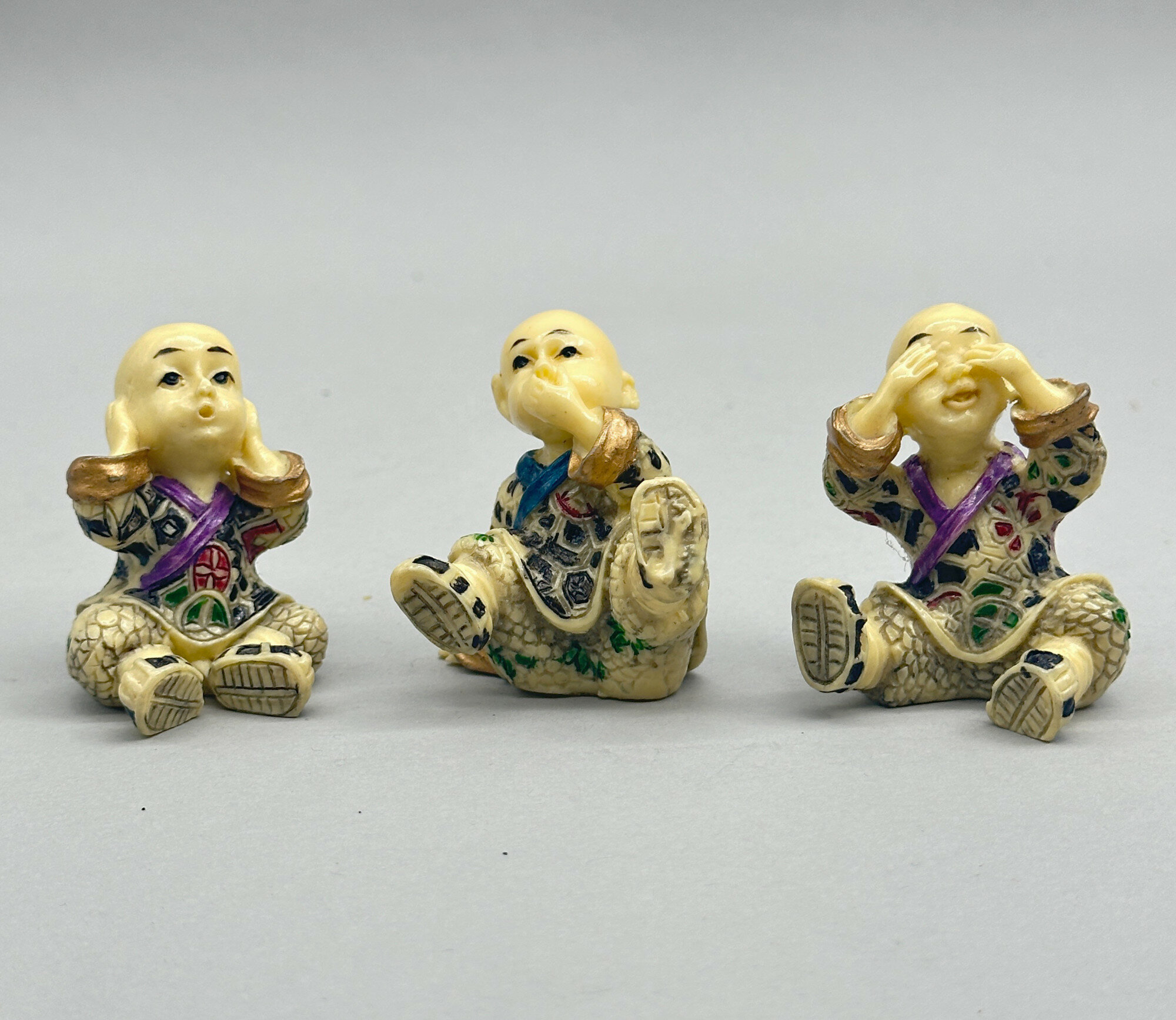
Set of Three Celluloid Figures of Monks, Japanese, first half C20th
Price: £45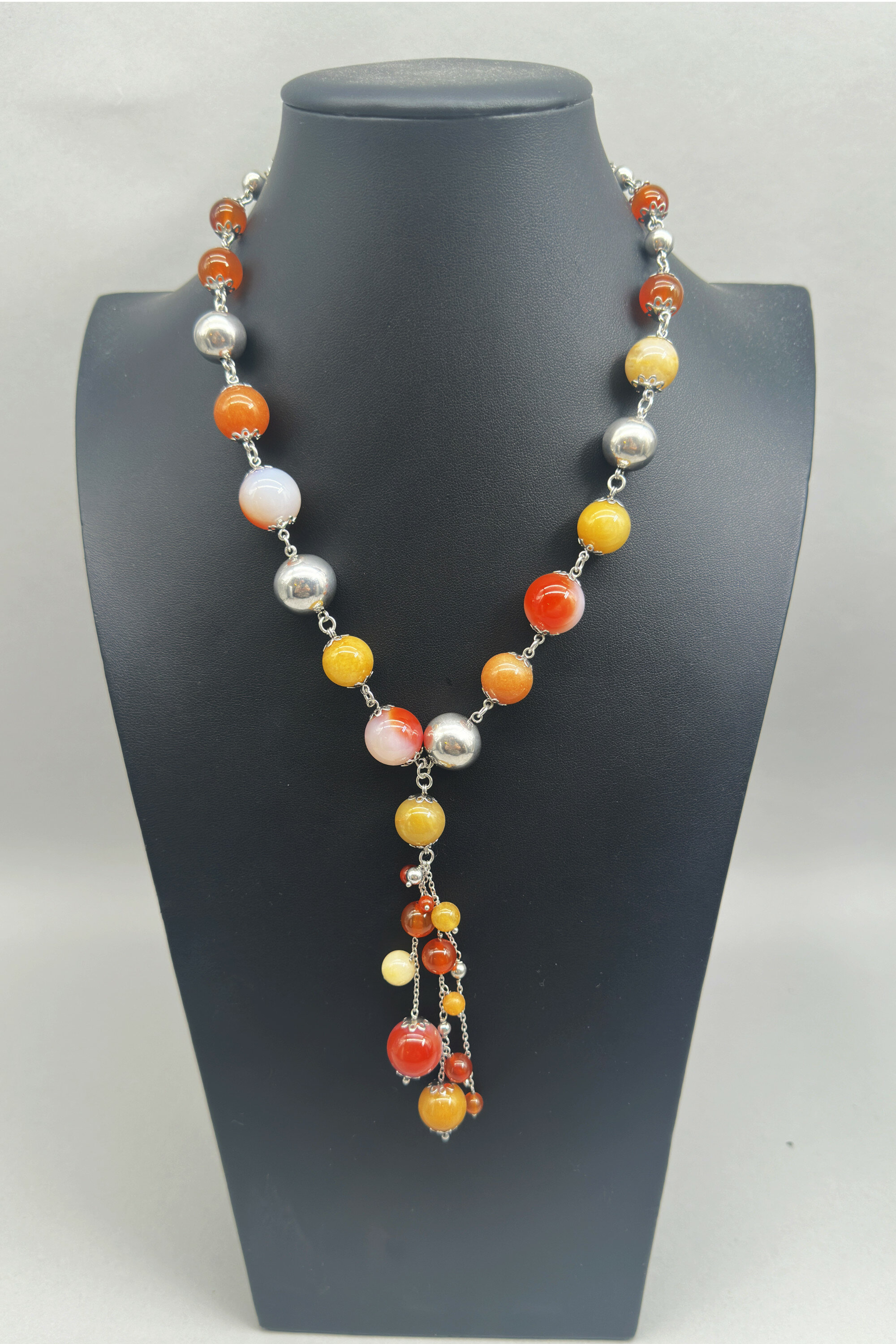
Bead necklace with jade carnelian and silver beads c1990
Price: £75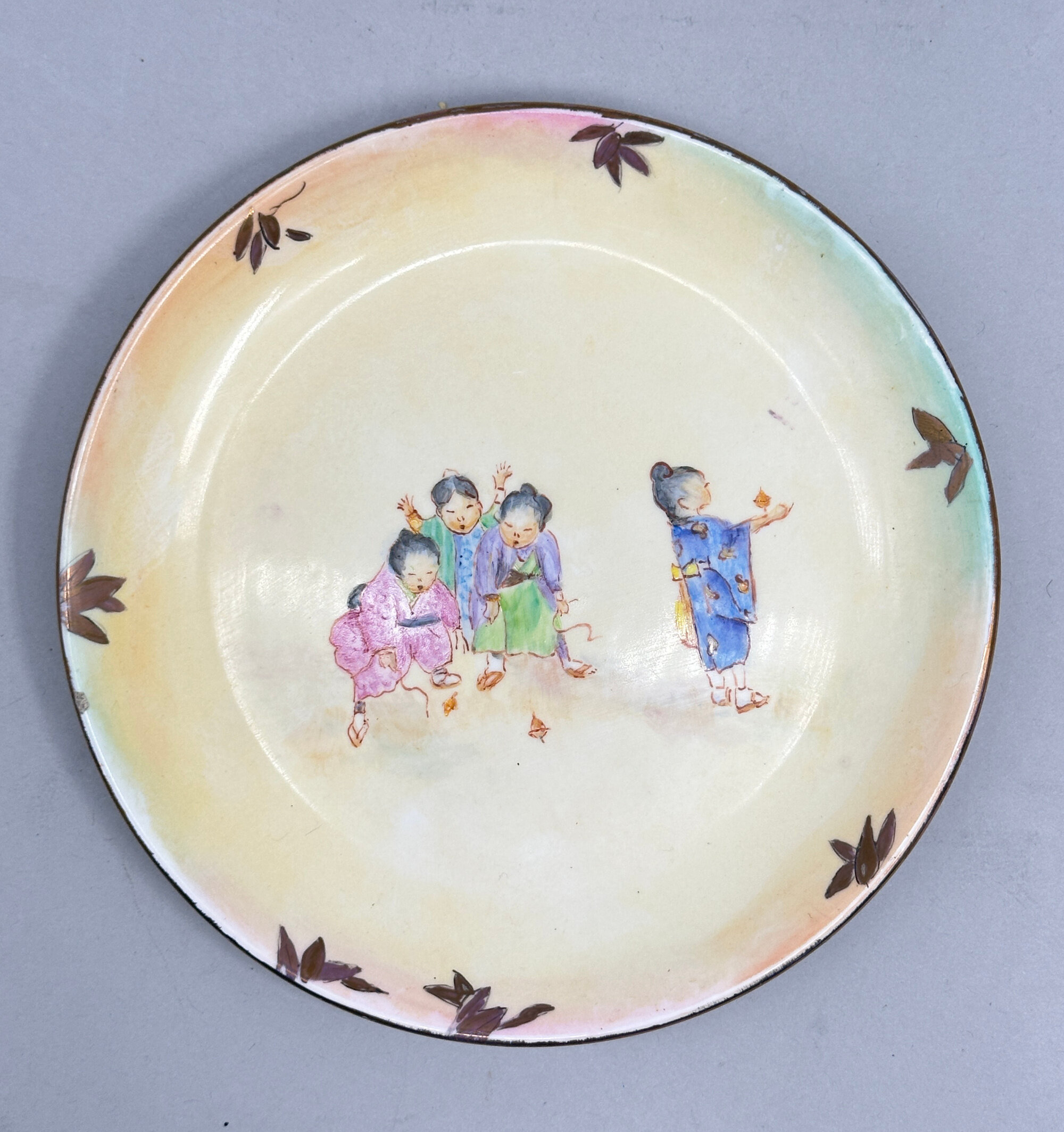
Oriental style ceramic plate, signed Alice Smith, possibly American mid C20th
Price: £10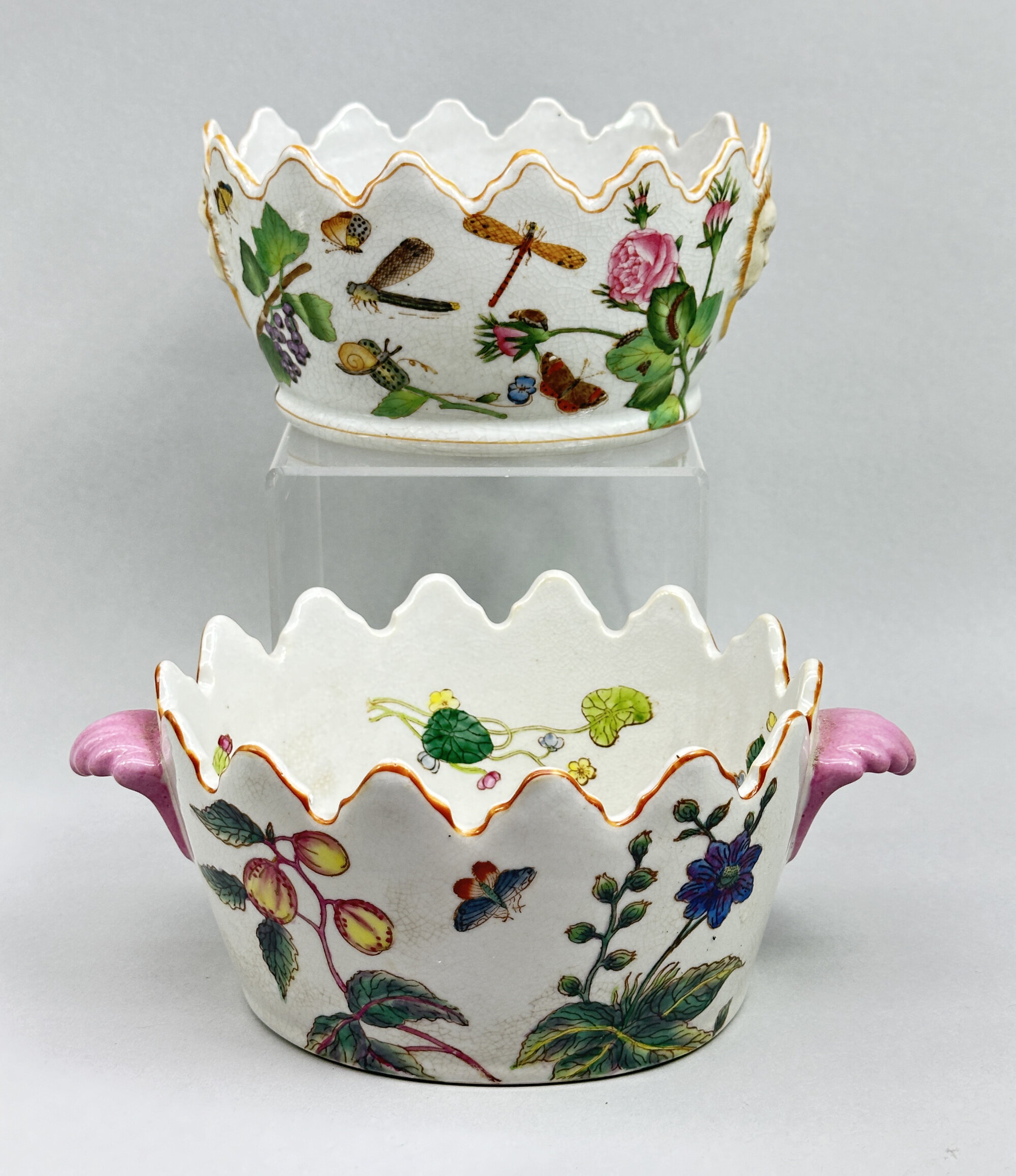
Two similar Chinese Export Style Monteith Form Jardinieres, C20th
Price: £75The form here is a miniature version of the Chinese ‘Monteith’ first produced in the early to mid eighteenth century. The wavy rim was designed to hold the stems of glasses which were stood to cool in iced water placed in the interior. The style of the decoration is in Chinese Export taste as well, but dating here is to the C20th probably around the 1960s. Some similar examples have Chinese seal marks and one the name of a Chinese manufacturer implying that these pieces were most likely made in China but this does not assist with establishing their age. Purely decorative objects then with no intent to deceive but amusing creations in themselves and pleasing to a contemporary eye.
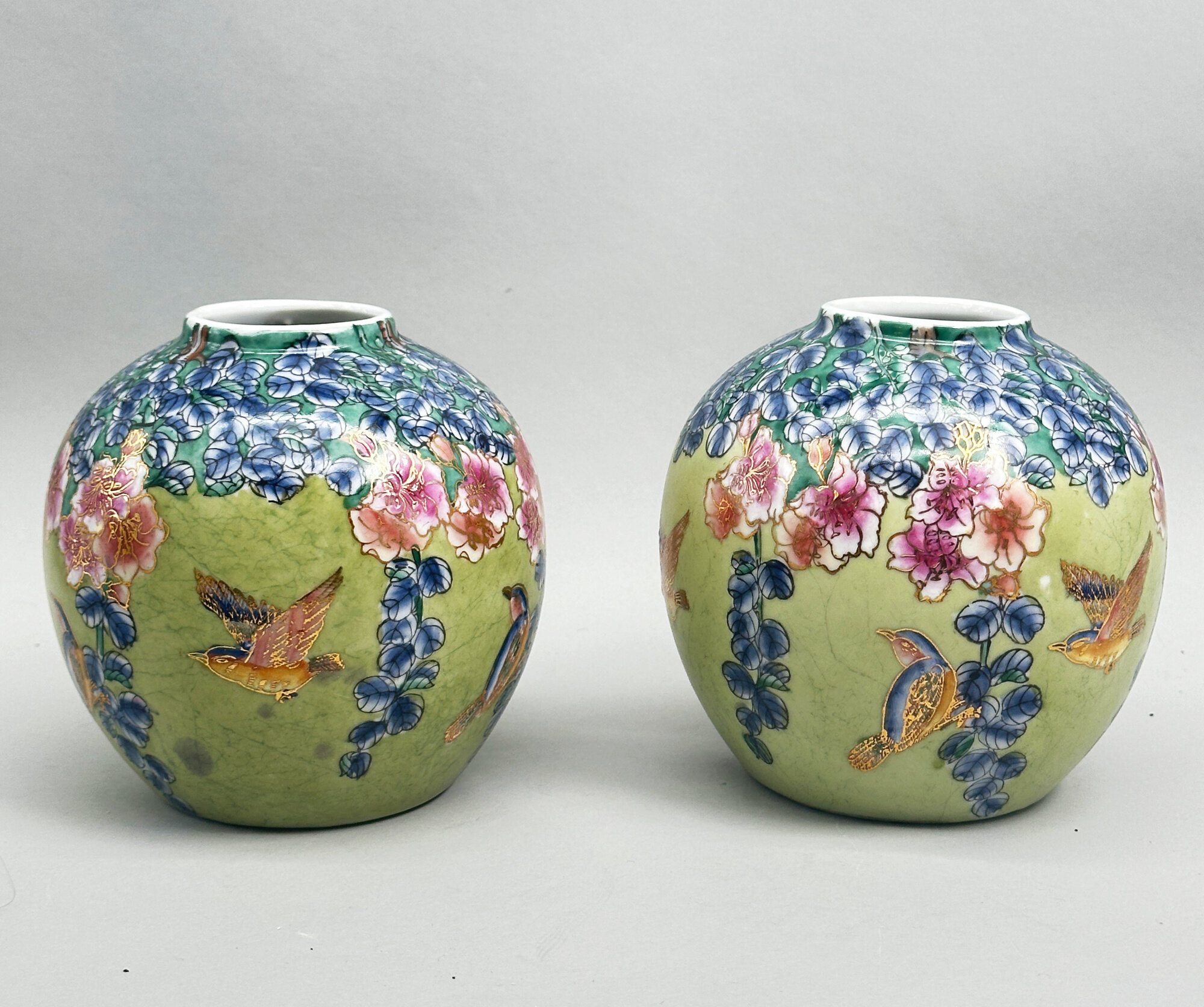
Pair of Chinese Ginger Jars decorated Birds and Flowers, late C20th
Price: £45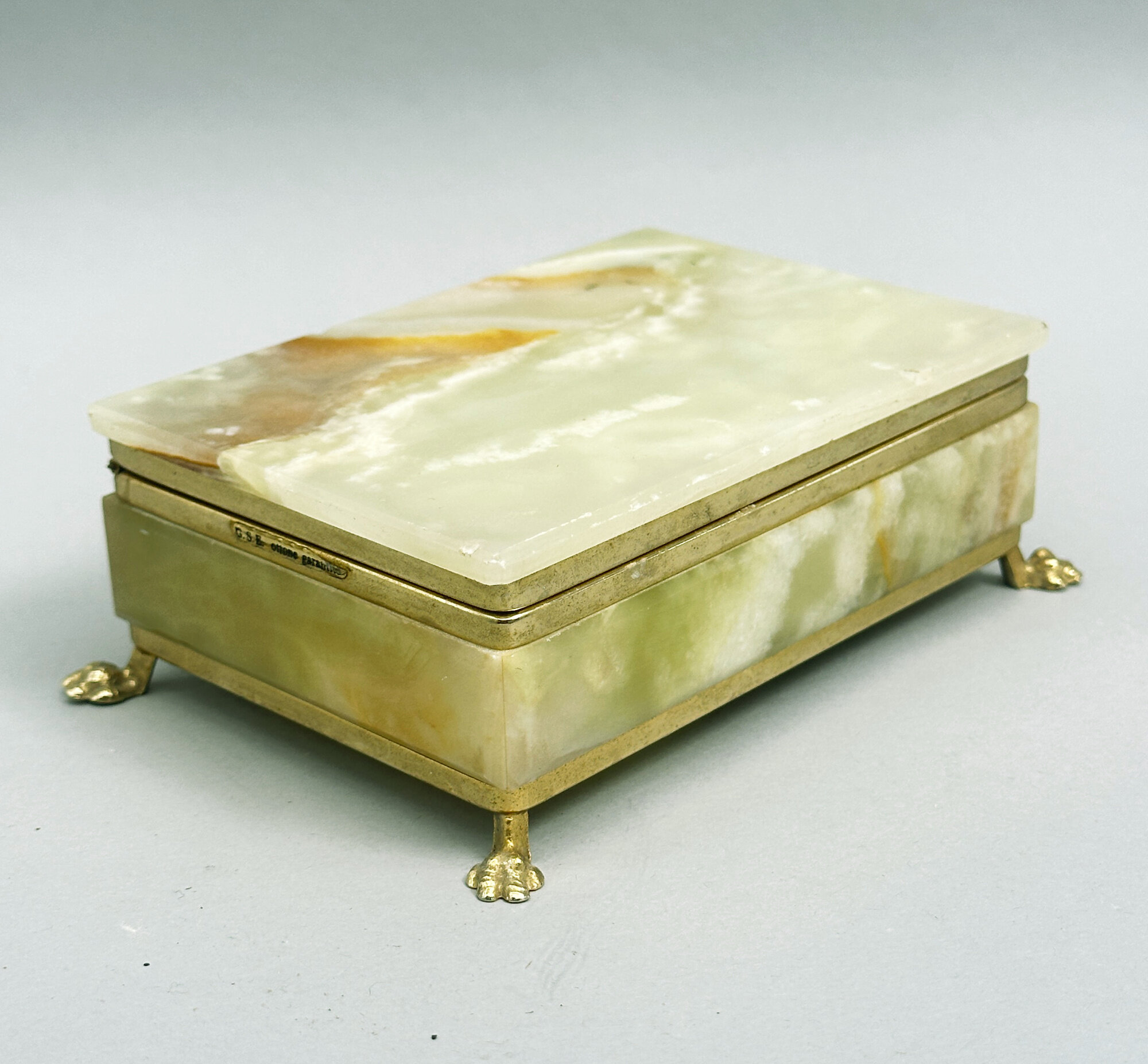
Rectangular Footed Green Onyx Box and Cover, G.S.E. Ottone Garantito, 1960s
Price: £45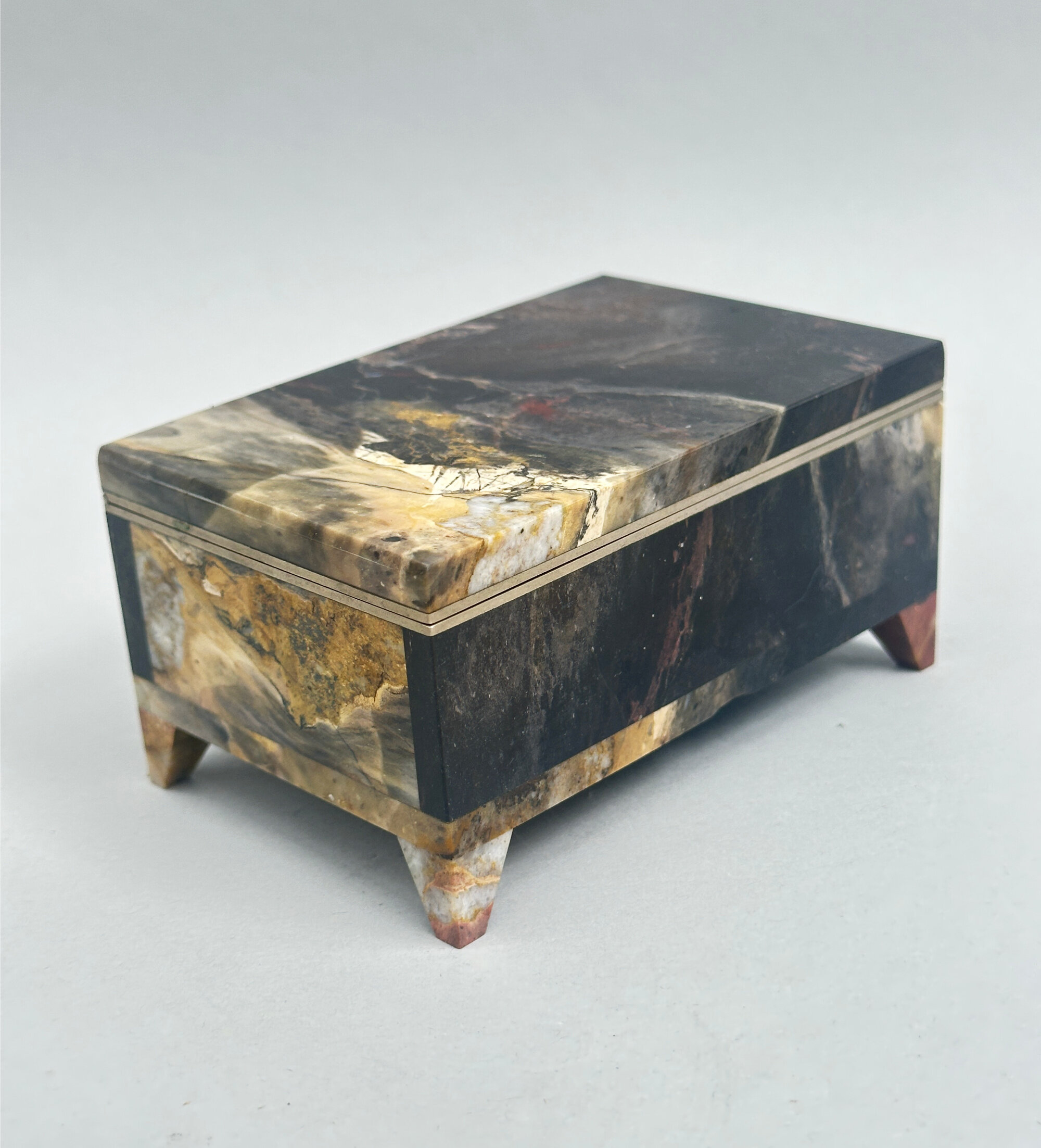
Rectangular Box and Cover, Basanite Jasper, C20th
Price: £95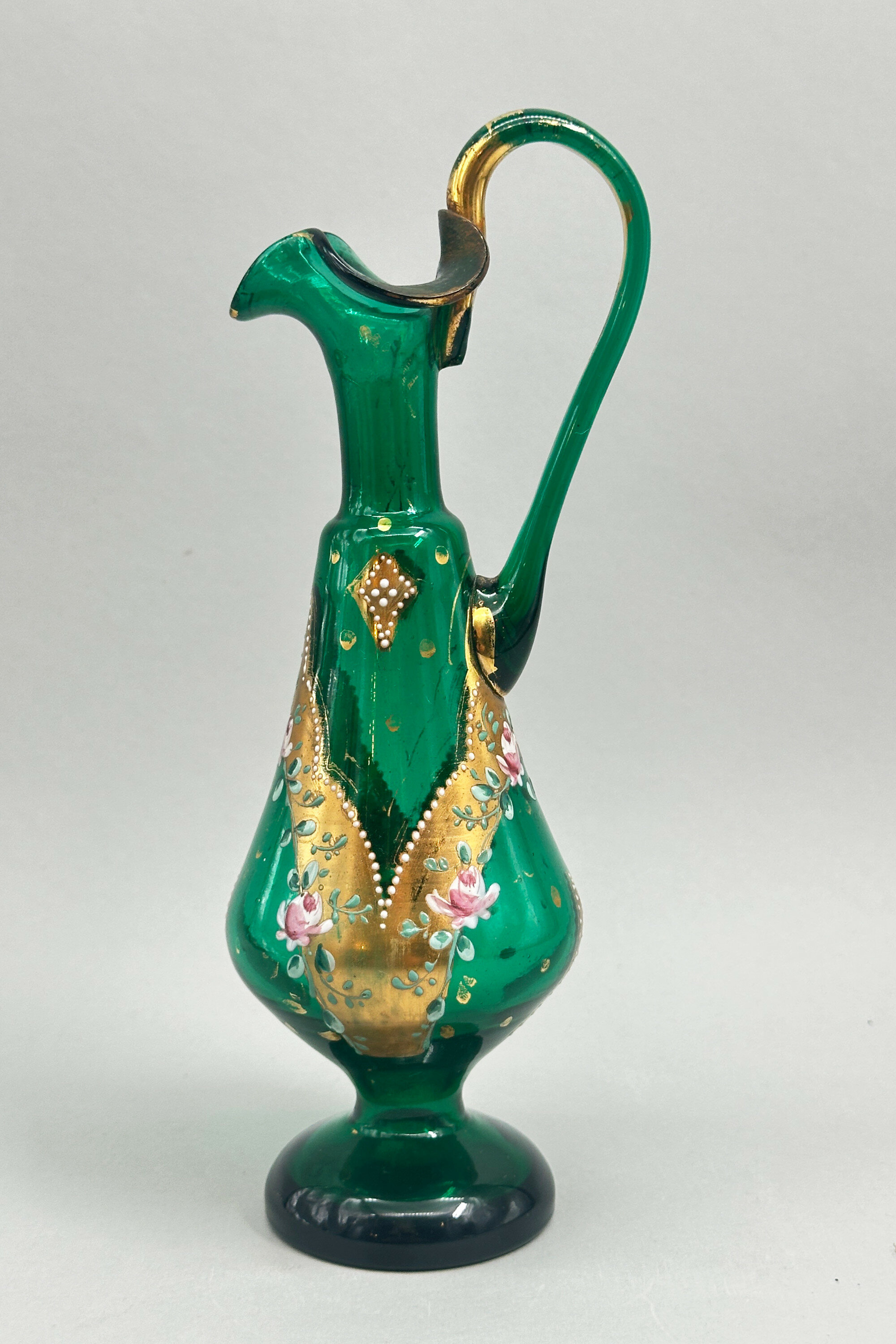
Bohemian Green Glass Moser style Ewer, late C19th
Price: £35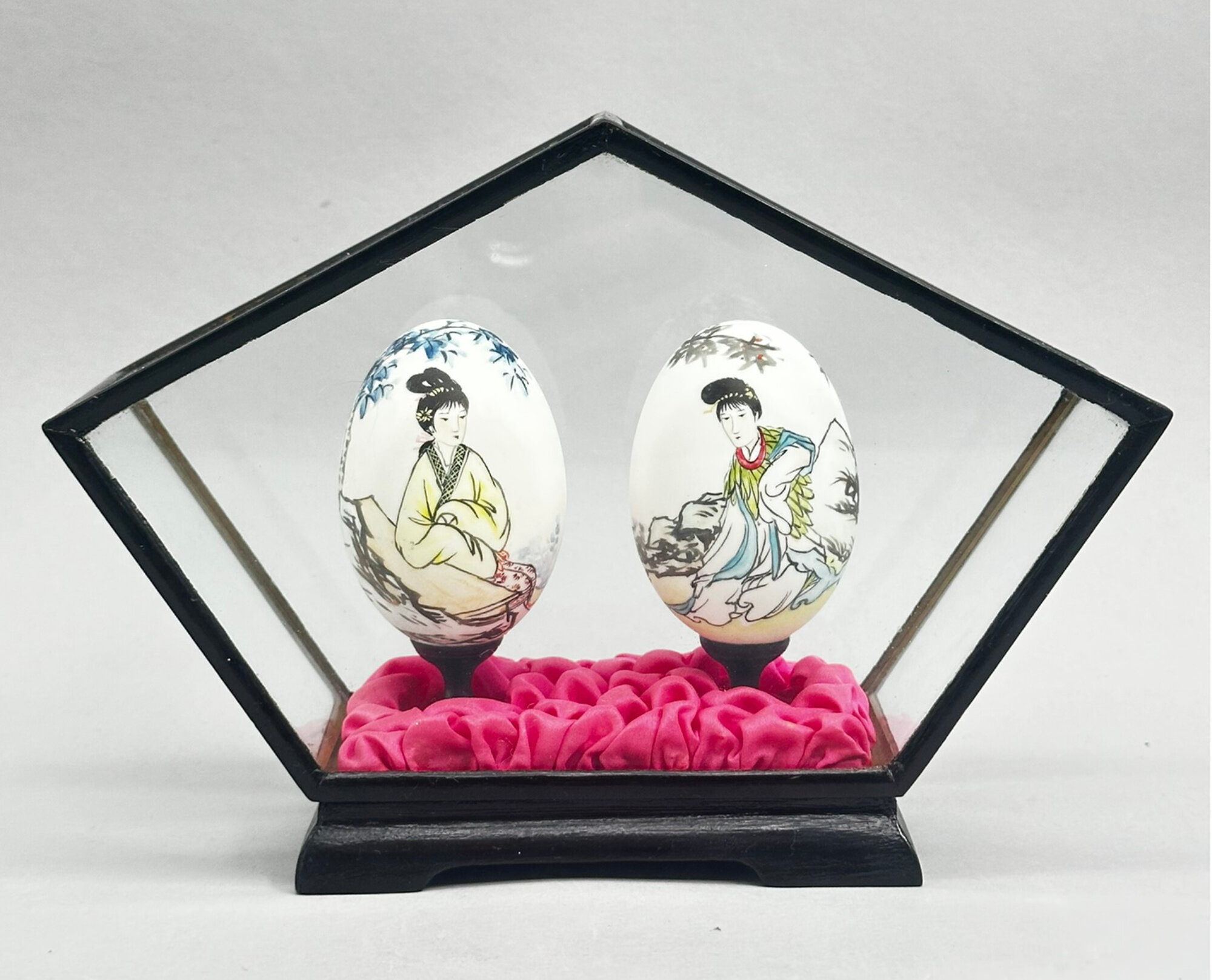
Pair of Chinese Hand Painted Eggs in Case, 1970s
Price: £25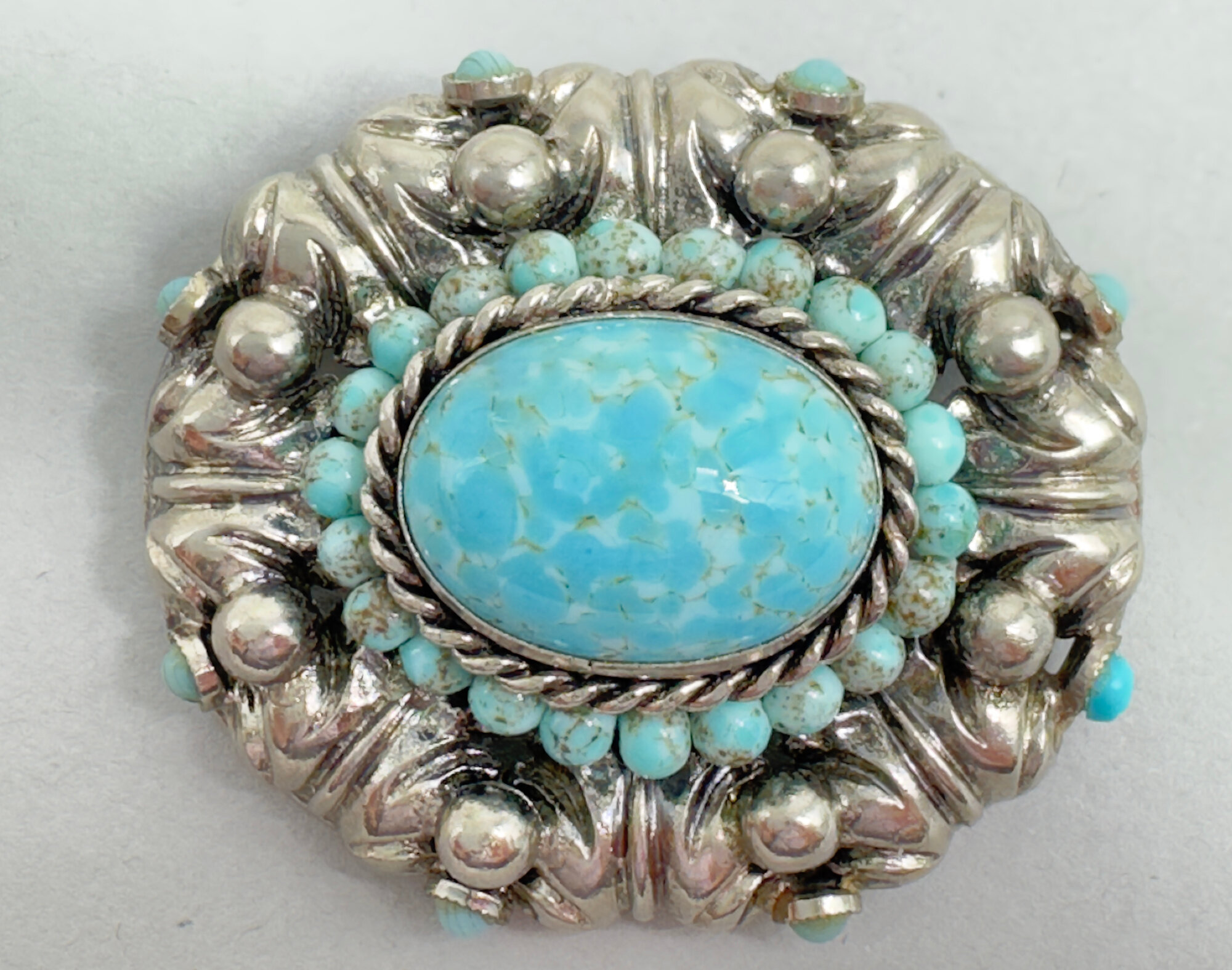
Czech glass faux turquoise brooch c1930
Price: £65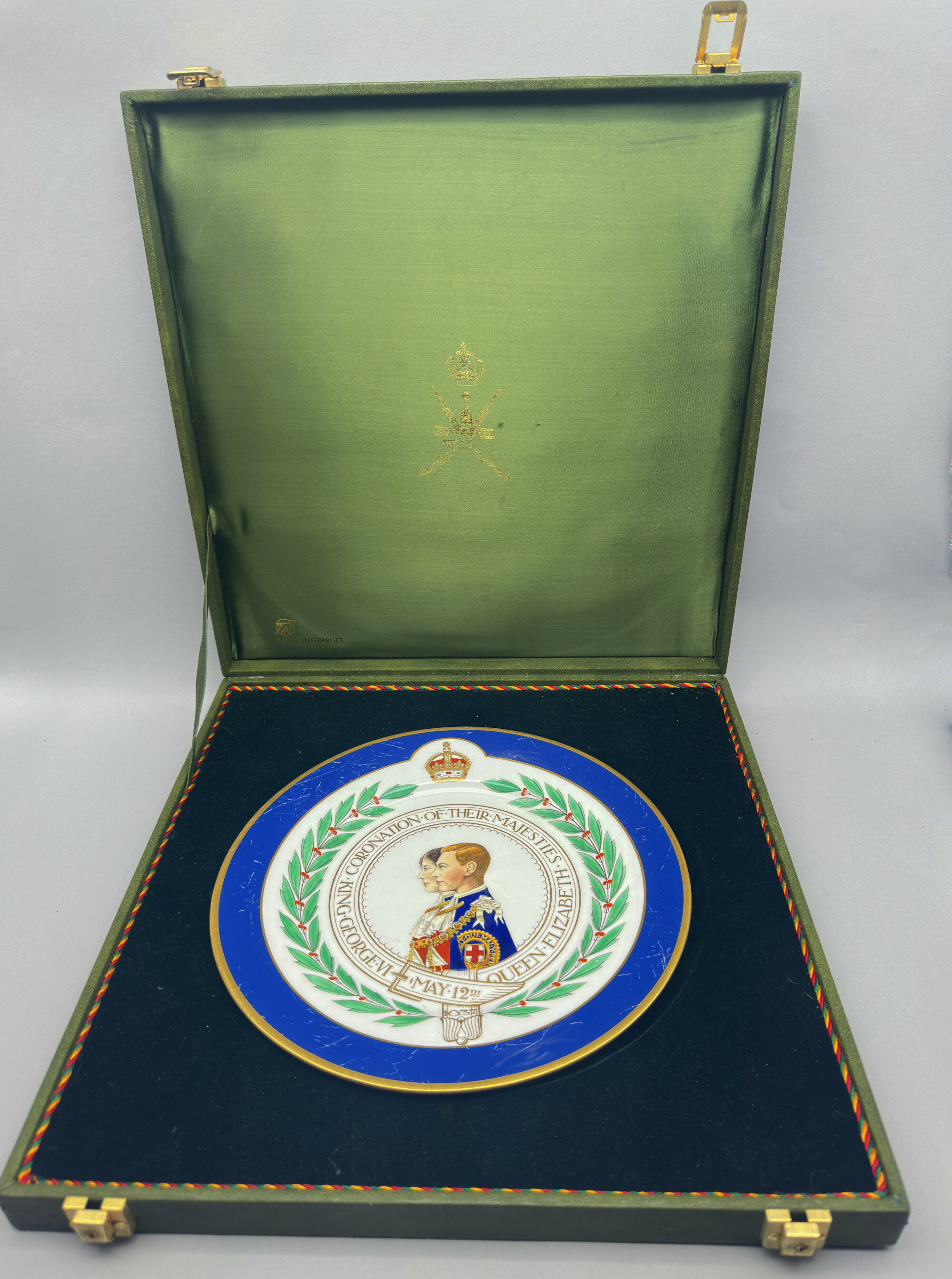
Mintons Coronation Plate, King George VI and Queen Elizabeth 1937, boxed
Price: £25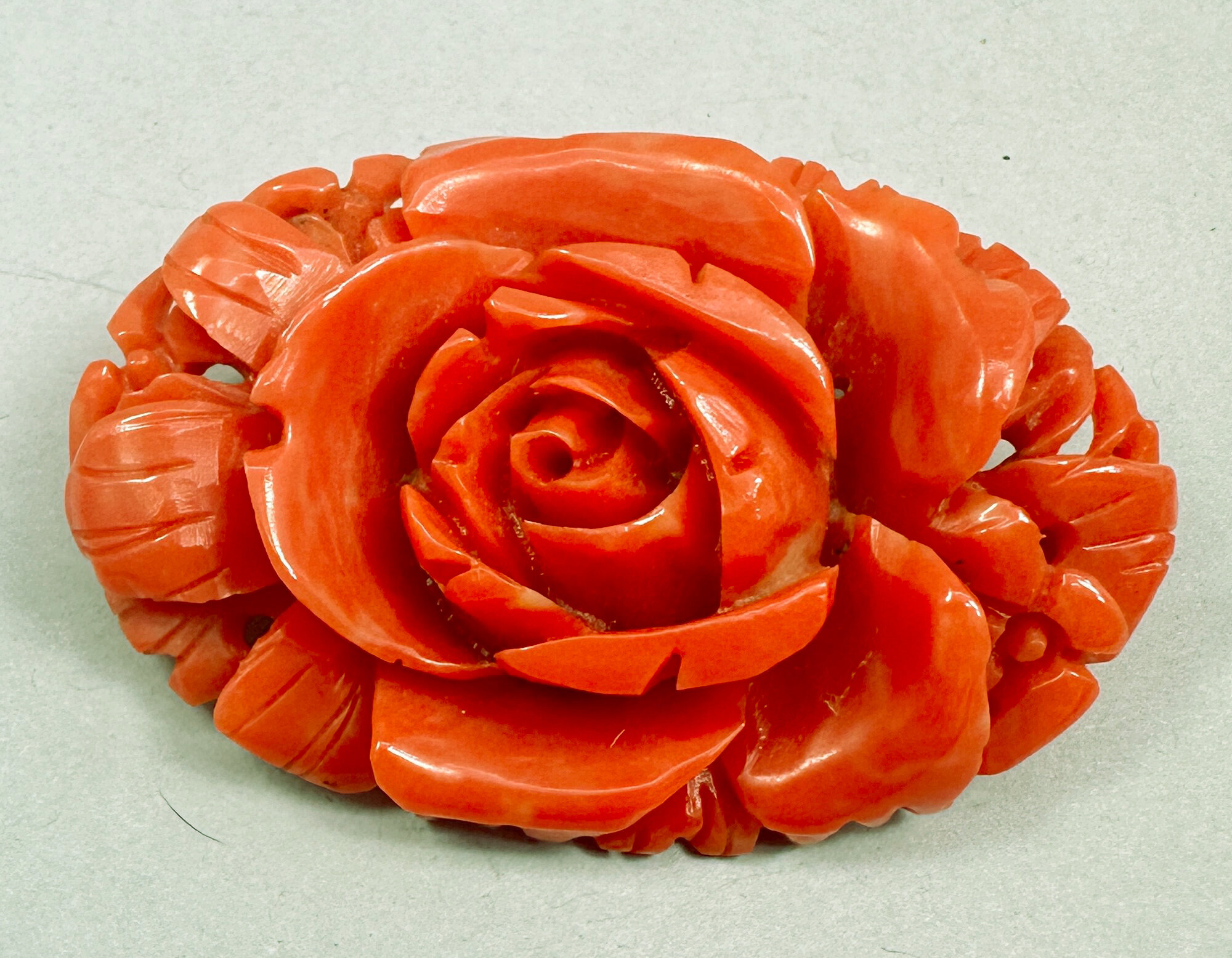
Large faux coral Bakelite brooch, British c1940
Price: £65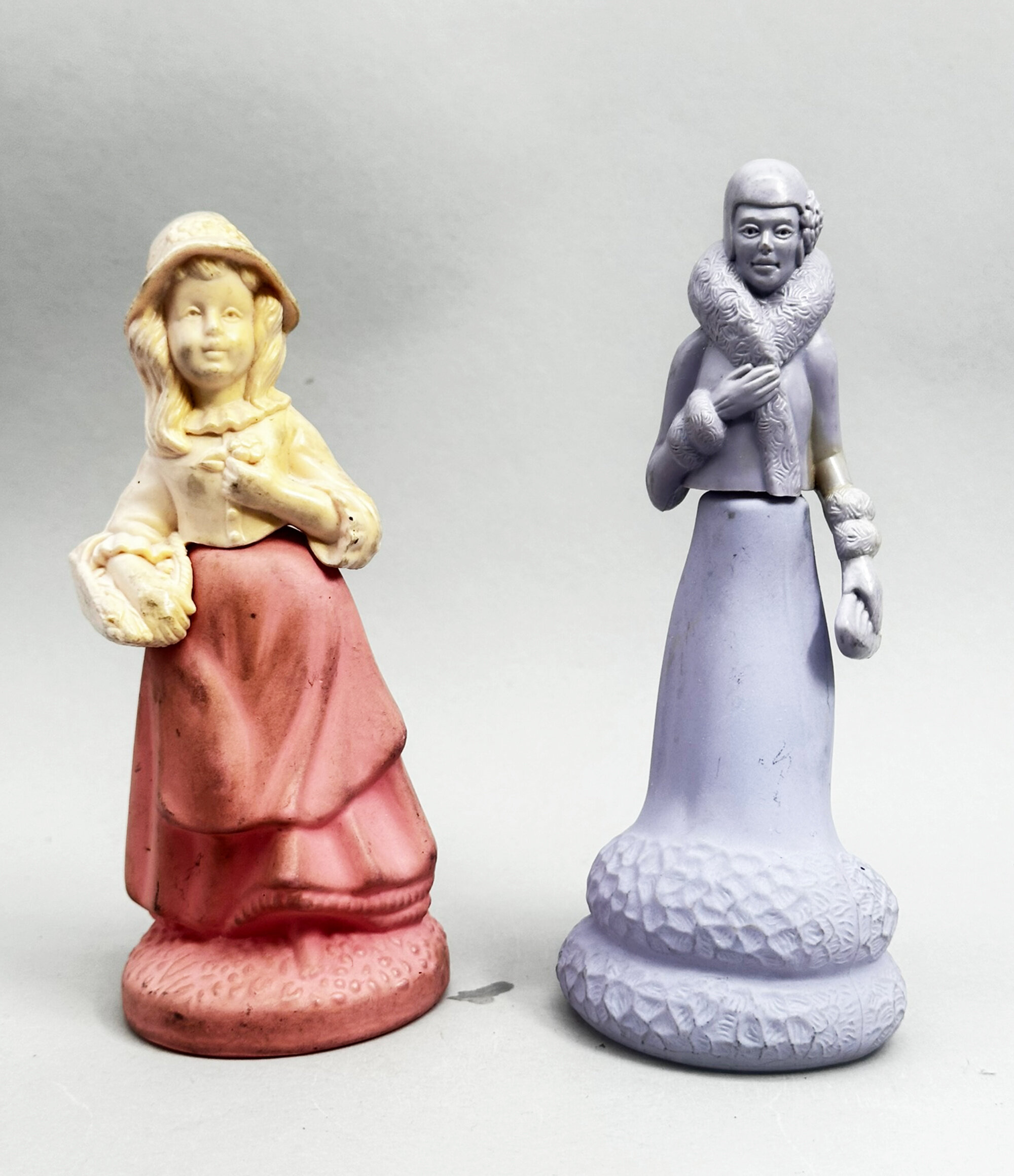
Two Avon Perfume Bottles, Lady and a Girl, 1970s
Price: £20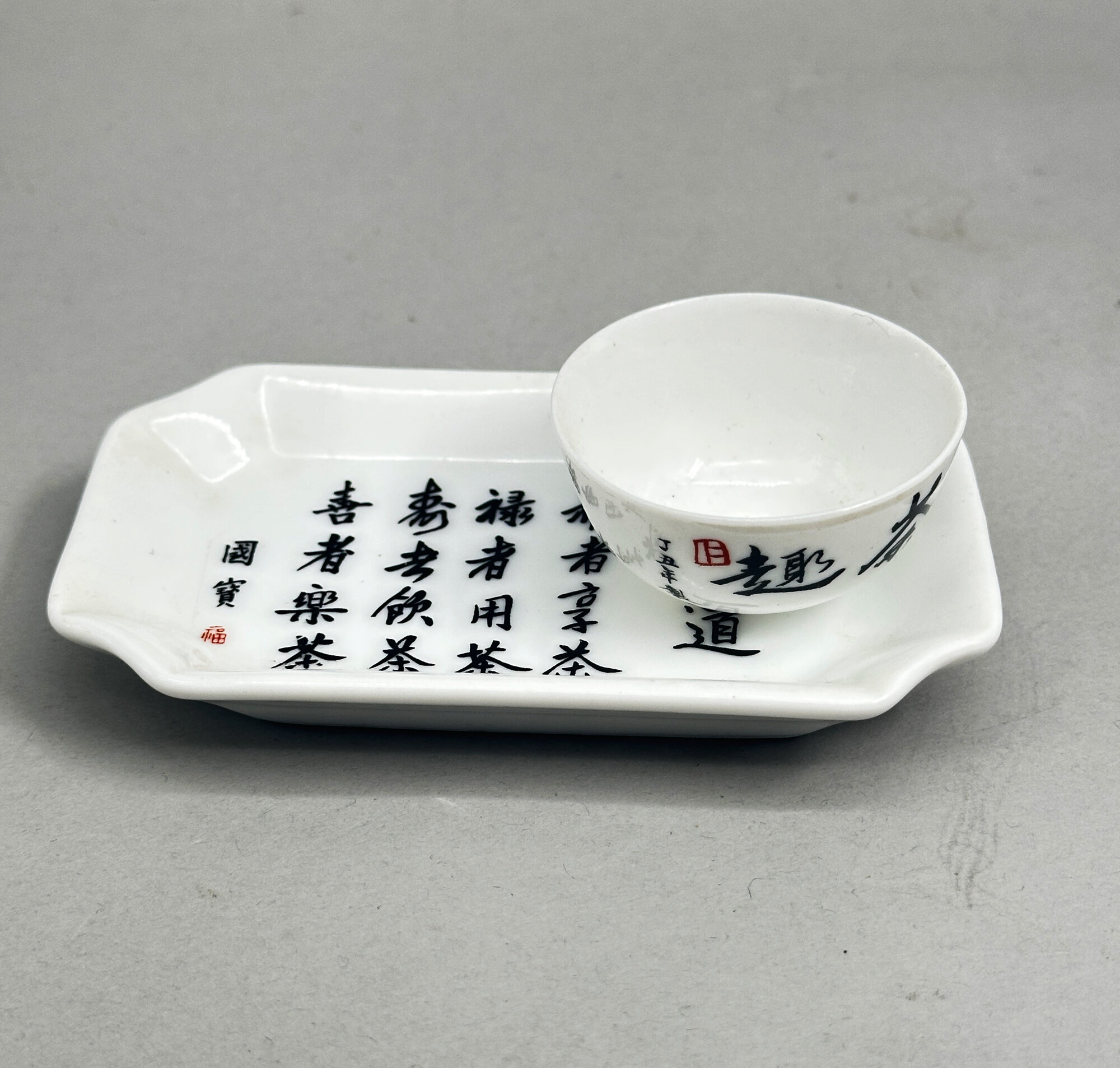
Chinese Porcelain Teabowl and Spoon Tray with calligraphy insciptions, 1997
Price: £15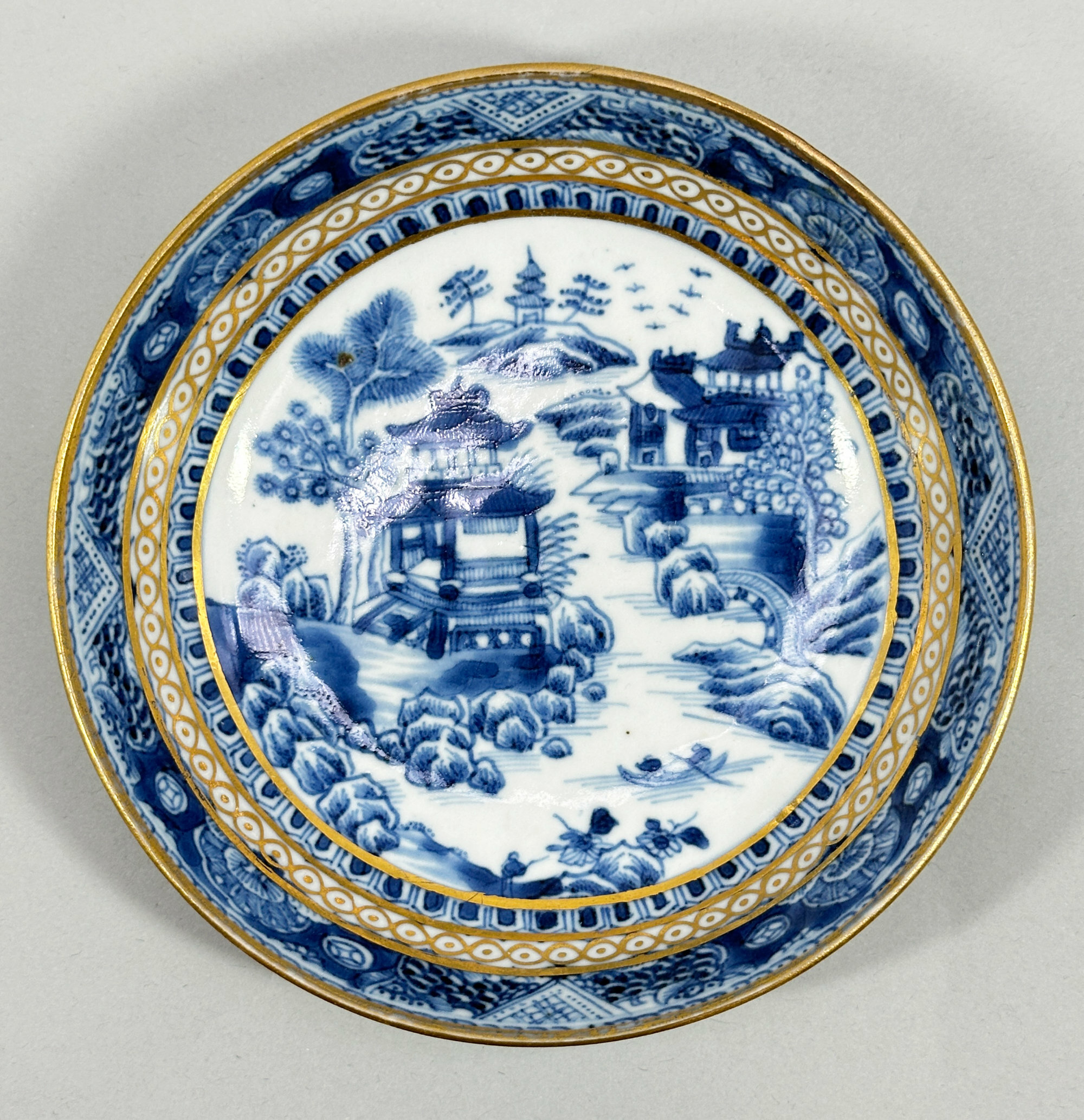
Chinese Export Nanking Pattern Saucer, Qianlong period (1736-1795)
Price: £75